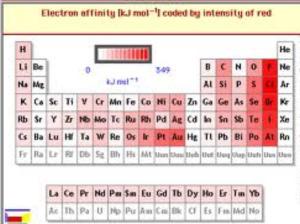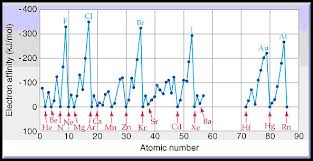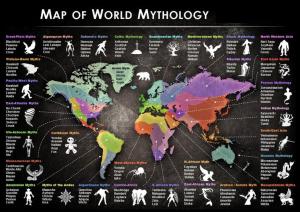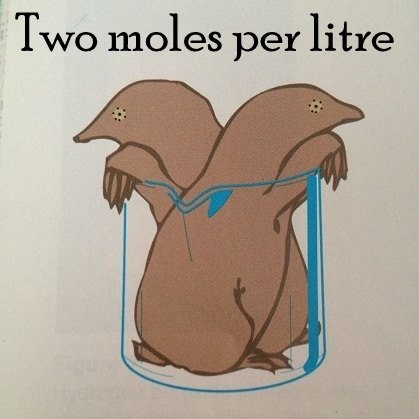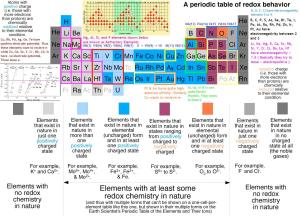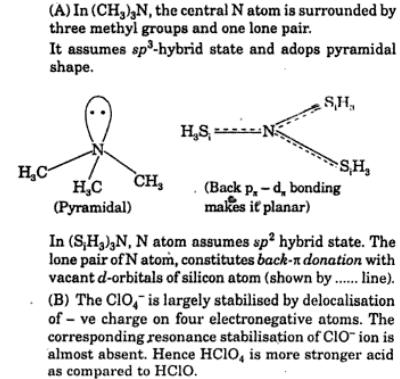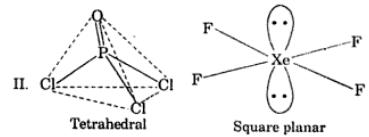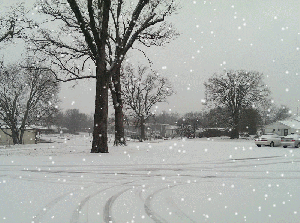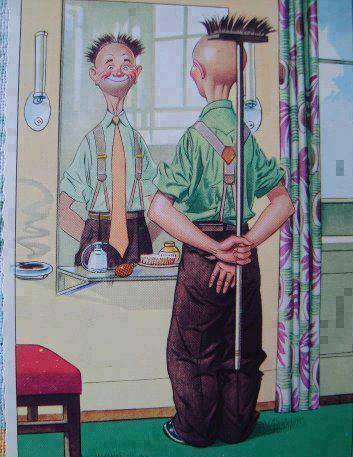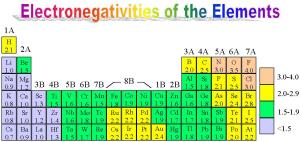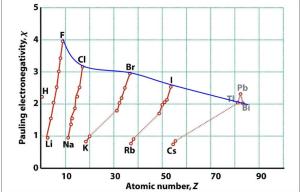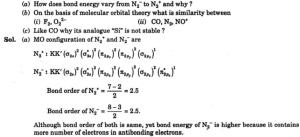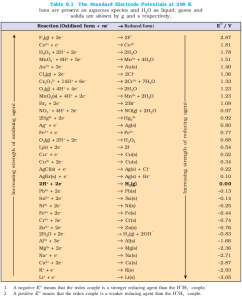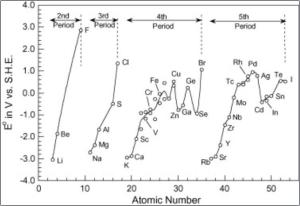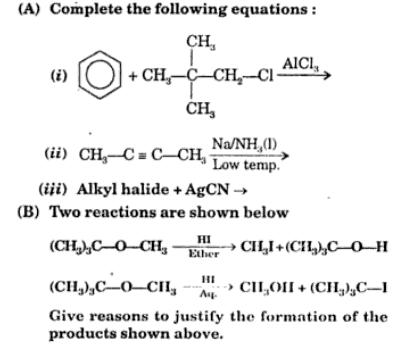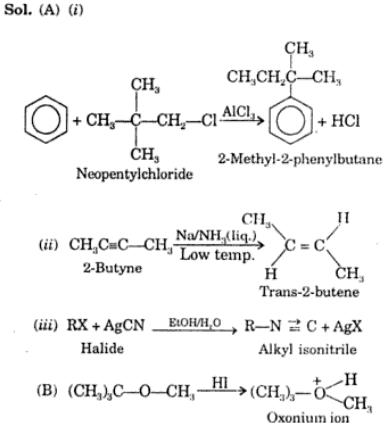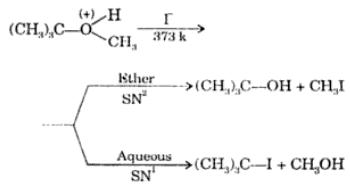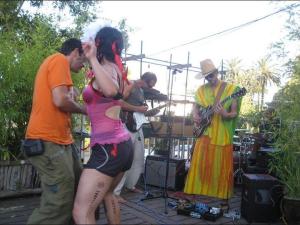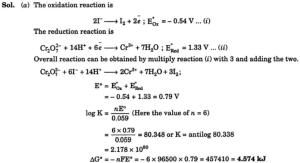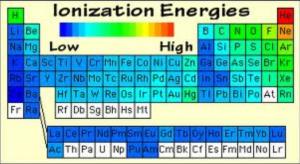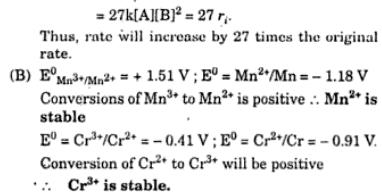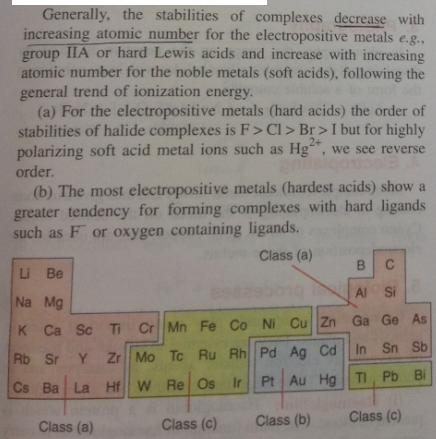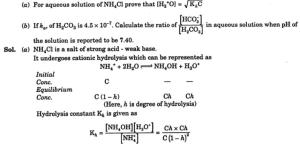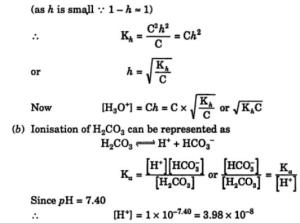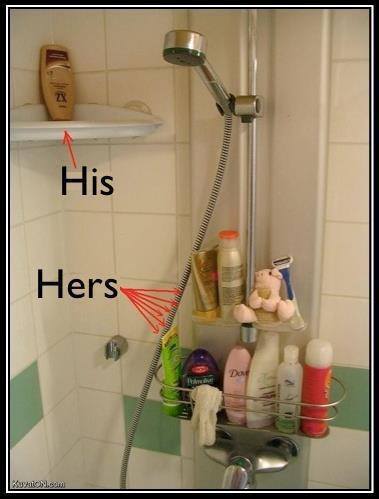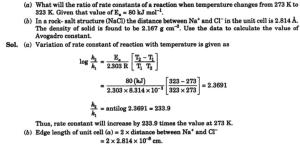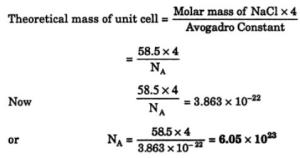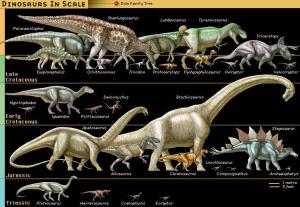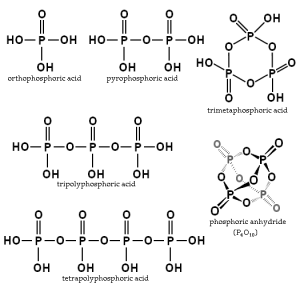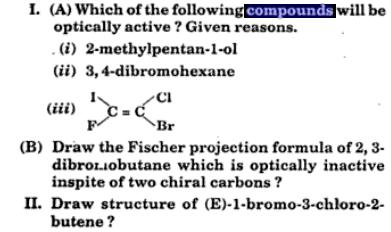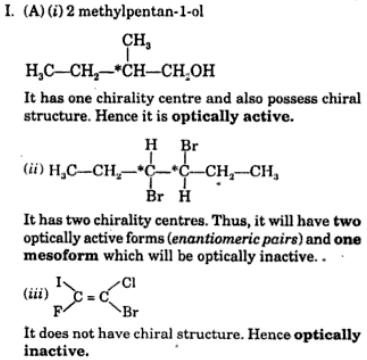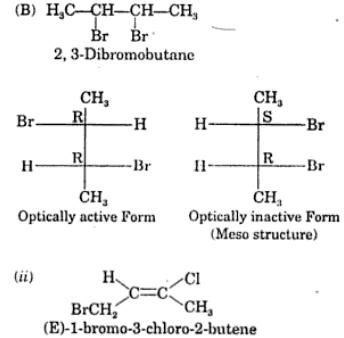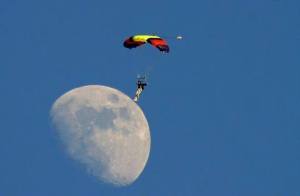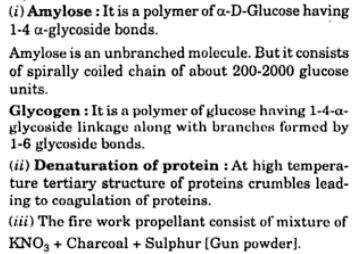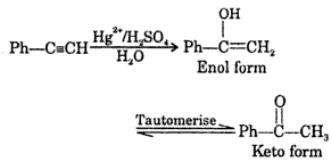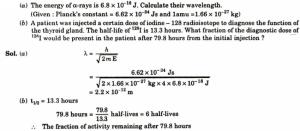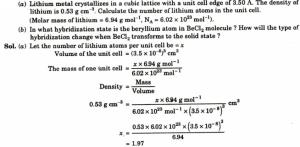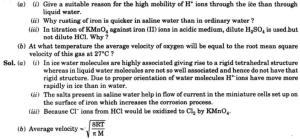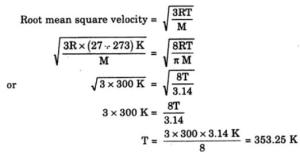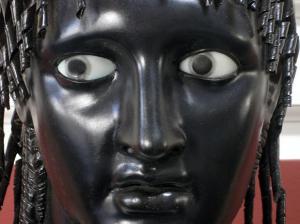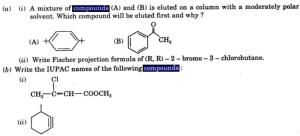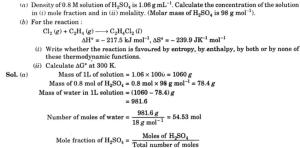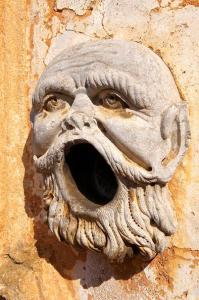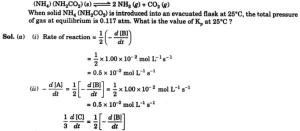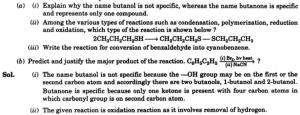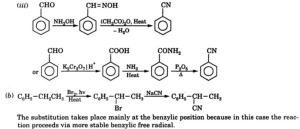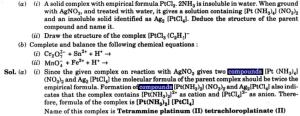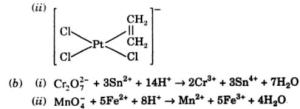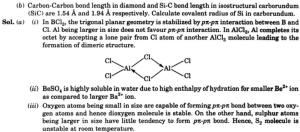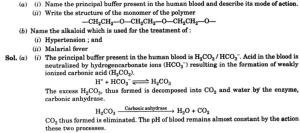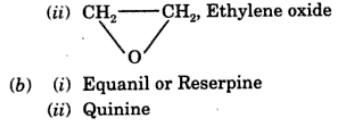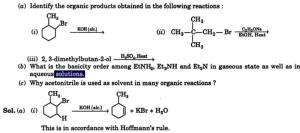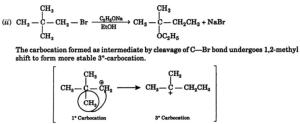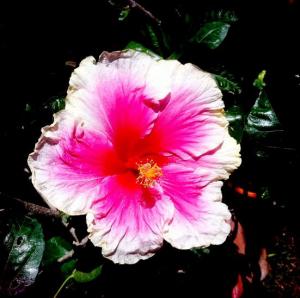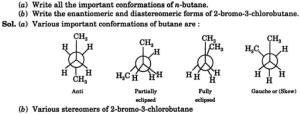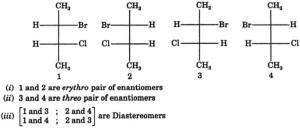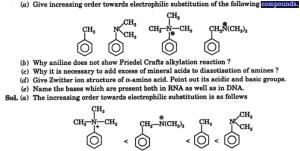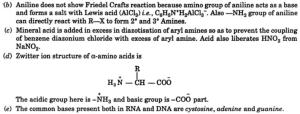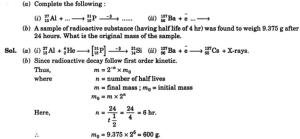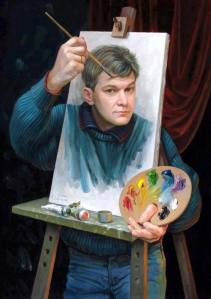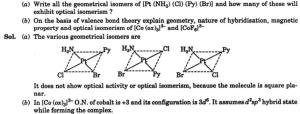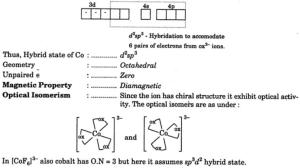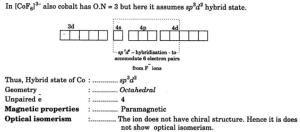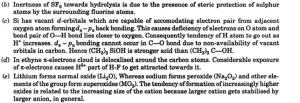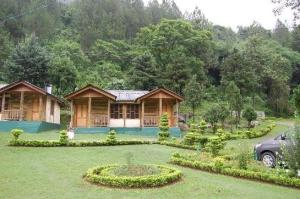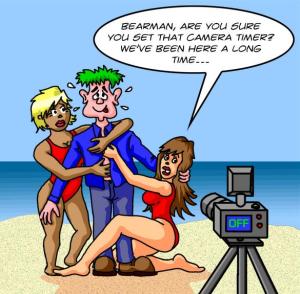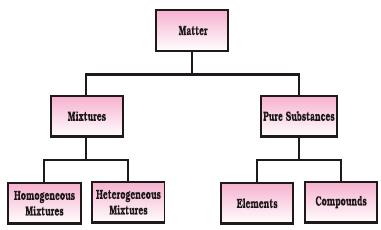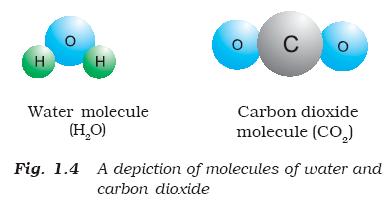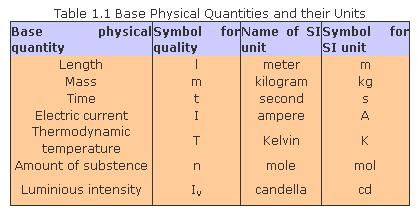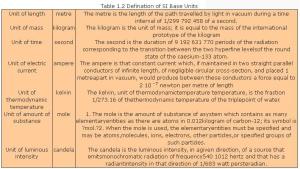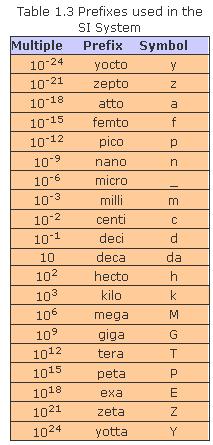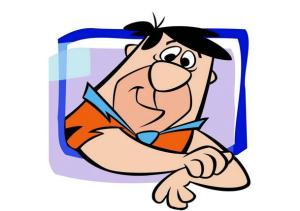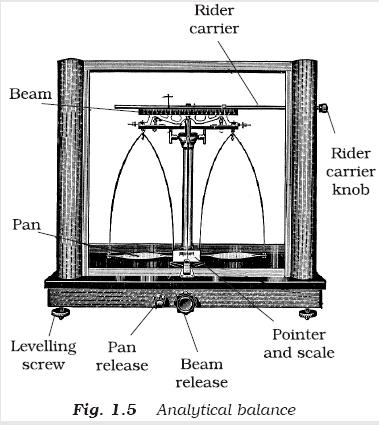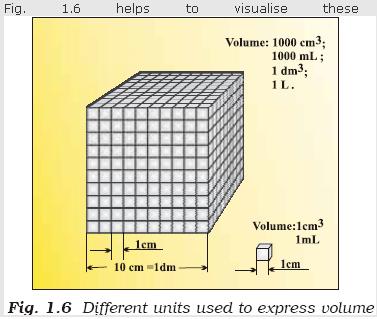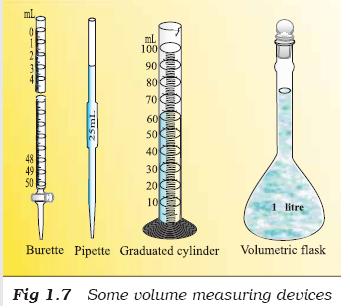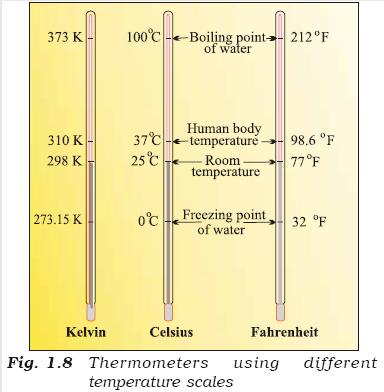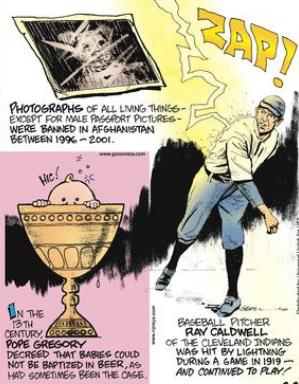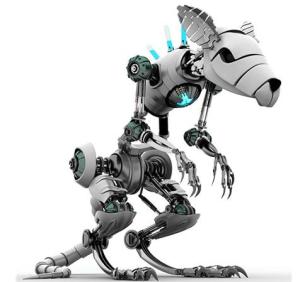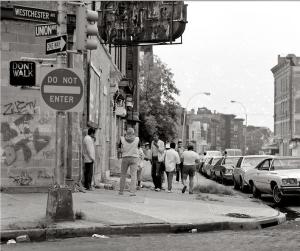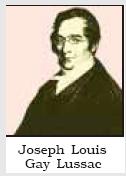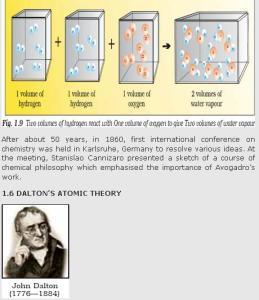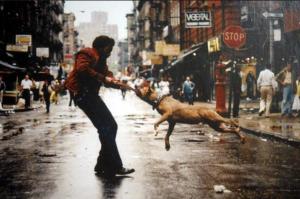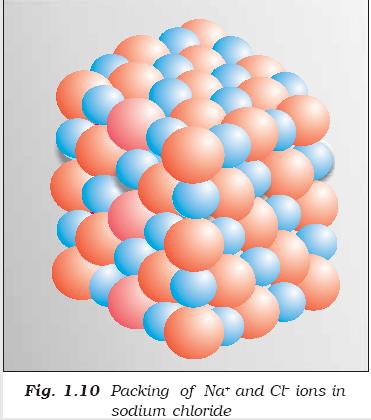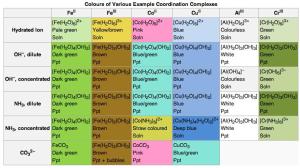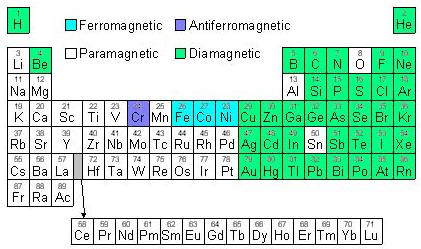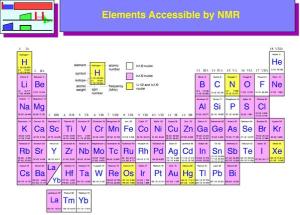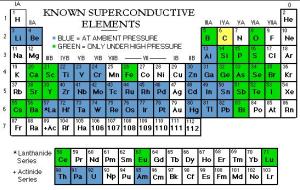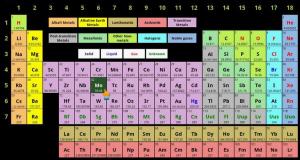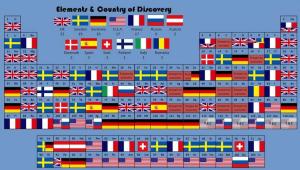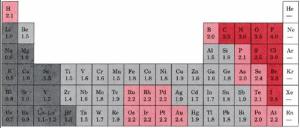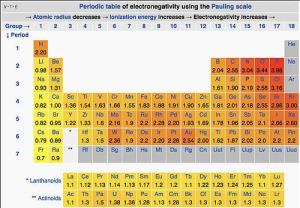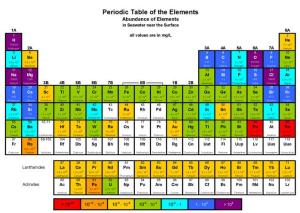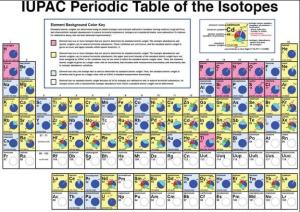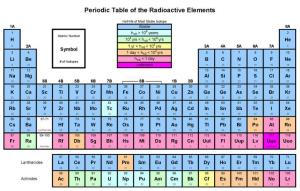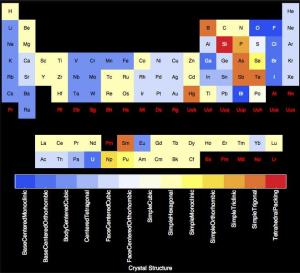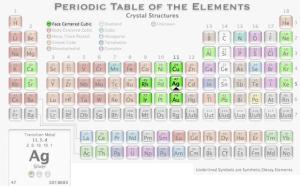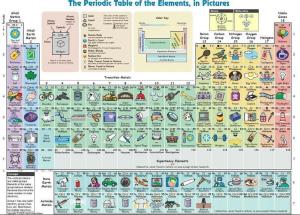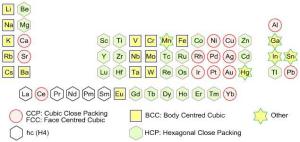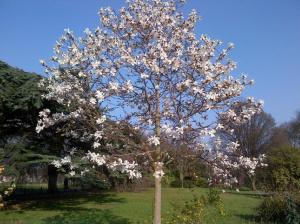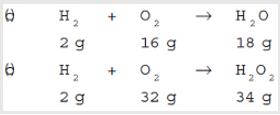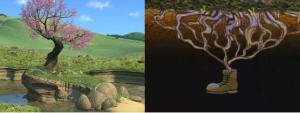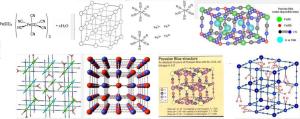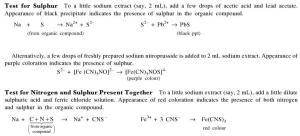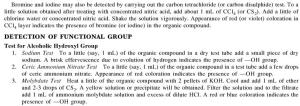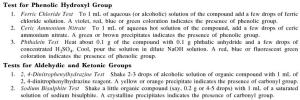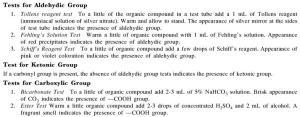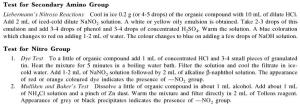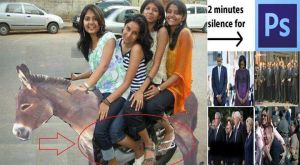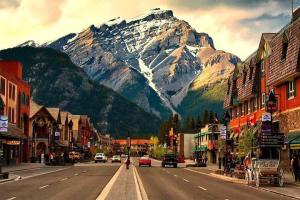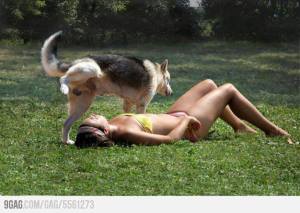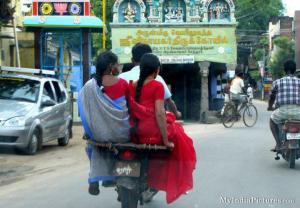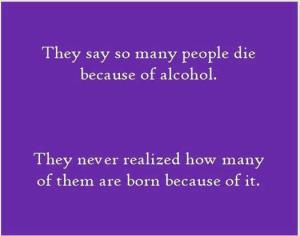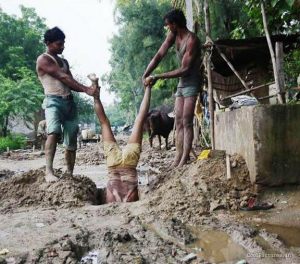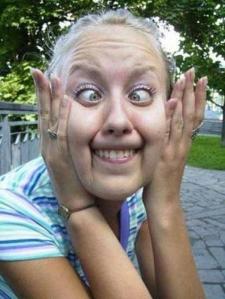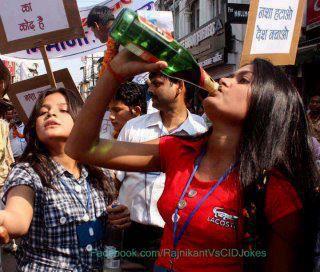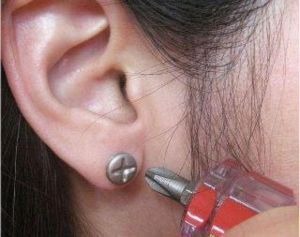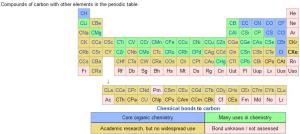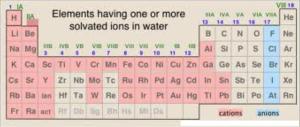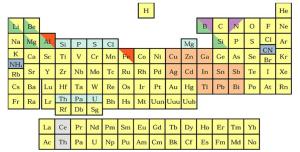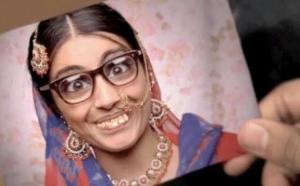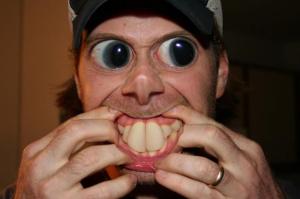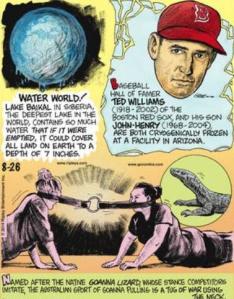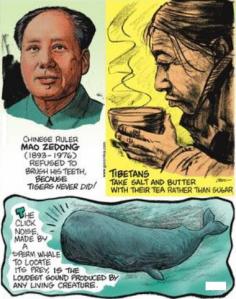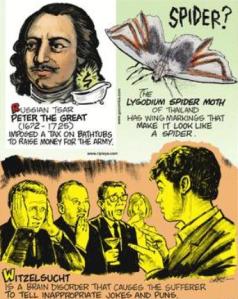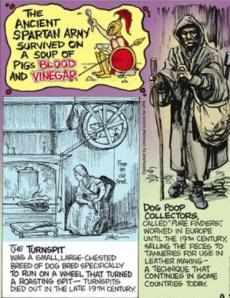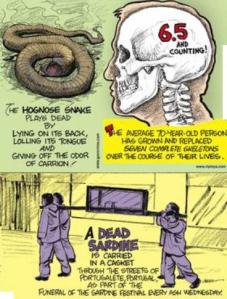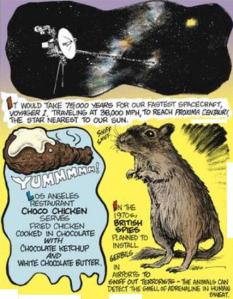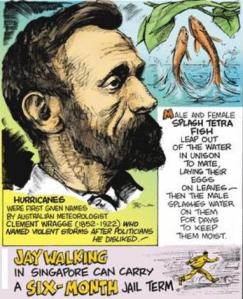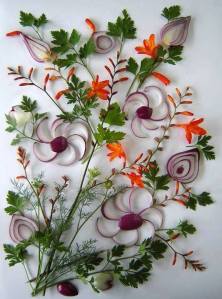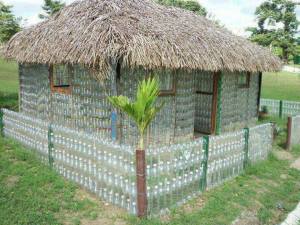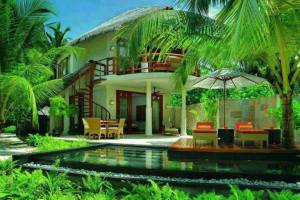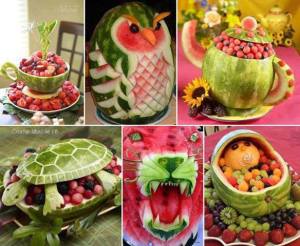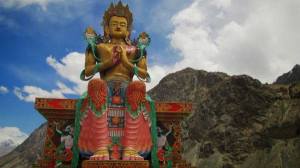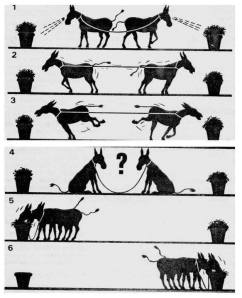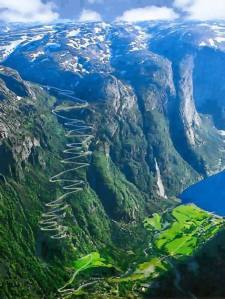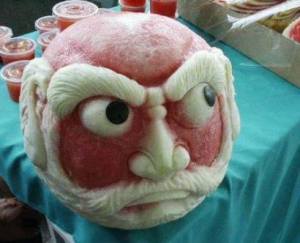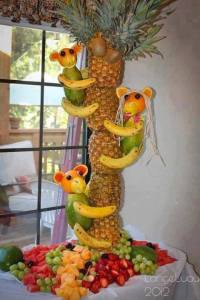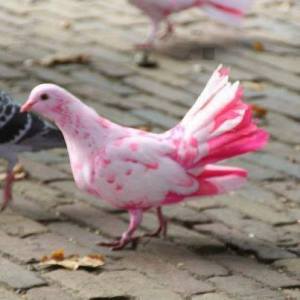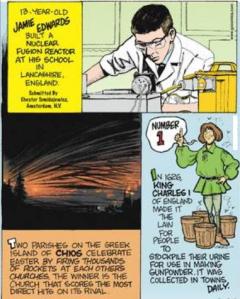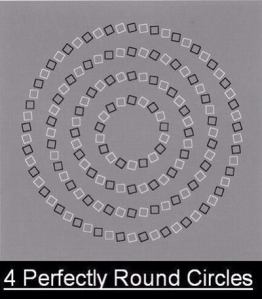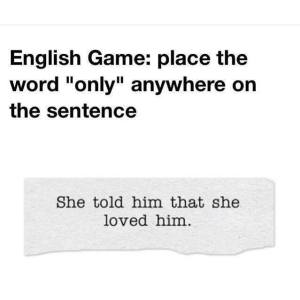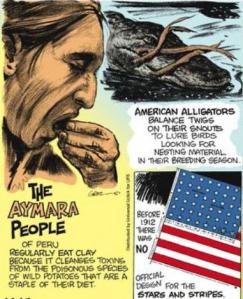Please Visit our new Website here
Learn more at http://skmclasses.weebly.com/iit-jee-home-tuitions-bangalore.html
search for videos in http://skmclasses.weebly.com
Twitter – https://twitter.com/ZookeeperPhy
Facebook – https://www.facebook.com/IIT.JEE.by.Prof.Subhashish/
Blog – http://skmclasses.kinja.com
Chemistry Physics Mathematics personal tuitions ( also Home Tuitions / Coaching by Home Tutor with personal Attention ) are available in the Bannerghatta Road IIM ( south Bangalore ) region.
Contact mokshya@gmail.com
–
Students staying in J P Nagar, Bommanahalli, Nayak Layout, Poornima Nagar, Aradhana Layout, Shreyas Colony, Devarachikkahalli, Rukmaiah Layout, Viswapriya Nagar, Akshayanagar, Omkar Nagar, BTM, Shanthiniketan Layout, Madivala, Teacher’s Colony, Hogasandra, MICO Layout, Fortis Hospital, Anjanadri Layout, Apollo Hospital, Royal Lake Front, Royal Residency, Jayanagar, Vijaya Enclave, Sundaram Shetty Nagar, Duo Heights, Arekere, Begur Road, L&T South city, Dollar colony, Brigade Millennium, Kumaraswami Layout, Jarganahalli, Bendre Nagar, Srinidhi Layout, Mysore Bank Colony, Ramaiah Garden, Nobo Nagar, Adigas Restaurant Bannerghatta Road, Shankranthi Layout, Sarvabhouma Nagar, BTS Layout, Ayyappa Temple Shobha Apartments, Anugraha Layout, Neo Layout, Mahaveer Rhyolities, Akshaya Nagar, DLF Extention, new Dollar Colony, etc can easily access this.
The schools and Institutions near by are Mitra Academy, St Pauls – Presidency School and College, Clarence High School, PSBB, Ryan International School, Sarala Birla Academy, BGS NPS,Brigade school, Shantiniketan, MG Infant, Deeksha Hosur Road, Nightingles English Highschool, Sri Venkateshwara Education Society, Oxford Engineering College, Lorven International Institute, Hill Top School, Karnataka Govt. High School, Christ Academy Hulahalli Koppa Road, Salonee School, Royal Convent School, St Francis School, Teresa Public School, Maaruthi Magnolia etc.
Must see https://zookeepersblog.wordpress.com/some-points-which-i-wish-all-my-new-prospective-students-know/
e-Book-e-Book-e-Book-e-Book-e-Book-e-Book-e-Book-e-Book–e-Book–e-Book–e-Book
Download the following FREE pdf e-Books ( Chapter wise / Topic wise solutions, Written by Prof. Subhashish Chattopadhyay SKMClasses Bangalore )
Did you like the Facebook Page of SKMClasses ?
Please Like the page https://www.facebook.com/IIT.JEE.by.Prof.Subhashish/
Did you send Friend request to Professor Subhashish Chattopadhyay ?
Please first send friend request to profile https://www.facebook.com/Subhashish.SKMClasses
You are allowed to download books only after liking the SKMClasses Page and sending friend request to Subhashish Sir.
Download the following FREE pdf e-Books ( Chapter wise / Topic wise solutions, Written by Prof. Subhashish Chattopadhyay SKMClasses Bangalore )
Everything can be searched in the net. Someone can know and find; if he wants to. Yet information at a single place helps. In fact organized information communicates much better. For IIT results analysis, performance of Girls, perceptions and priorities of various people in various regions of India see
IIT JEE Results and the situation in Bangalore by Prof. Subhashish ( Download )
( Click on the links to open the PDF in a new tab, then Save / Download )
IIT-JEE, NCERT / CBSE, I.Sc., PU, Board exam, EAMCET, BITS Physics Books with lots of Examples ( Free pdf download of Physics Books, Chapter wise / Topic wise Questions and Solutions )
13 ] CBSE & IIT-JEE Physics Survival Guide – Center of Mass etc – by Professor Subhashish Chattopadhyay, Bangalore.
Description – “ Spoon Feeding CBSE & IIT-JEE Physics Survival Guide – Center of Mass by Professor Subhashish Chattopadhyay ” for IIT-JEE, I.Sc., CBSE, Karnataka PU, State Boards etc. CBSE Standard 12 and IIT-JEE Physics Survival Guide – CBSE & IIT-JEE Physics Survival Guide – Center of Mass by Professor Subhashish Chattopadhyay SKMClasses Bangalore Useful for I.Sc. PU-II COMED-K CEE IGCSE IB AP-Chemistry, CET, VIT, Manipal, SRM and other exams.
This e-Book covers several examples of Center of Mass, Various Derivations etc are also covered. There are many kinds of Problems which are NOT covered in Professor H C Verma ‘s books ( Concepts of Physics ) or Irodov, or ” Resnick & Halliday “. Some examples being split Lenses, Fresnel’s Biprism, Polytropic Processes, Silvered lenses, Slab with a lens like hole or filled with liquids, Cylindrical lenses, isodiaphers, Spallation Reaction, Magic Numbers, Doubly Magic Numbers, Metamaterials with Negative Refractive Index etc. All these kinds of Questions which have been asked in various exams are covered in eBooks of Professor Subhashish Chattopadhyay. Several Complicated examples and many more, and various incomplete dictionary kinds of collection for Course of IIT-JEE, CET, COMED-K etc with CBSE, CEE, IIT-JEE ( Main and Advanced ) Problems and Solutions. Includes NCERT / CBSE Text Book Solutions, Chapter wise Solutions, AIEEE ( Now known as IIT-JEE main ) Solutions, Roorkey Entrance Exam Solutions, EAMCET Solutions.
cbse-iit-jee-physics-survival-guide-center-of-mass-by-prof-subhashish-chattopadhyay
:-{D
12 ] CBSE & IIT-JEE Physics Survival Guide – Work Power Energy Variable Force Leaking Bucket etc – by Professor Subhashish Chattopadhyay, Bangalore.
Description – “ Spoon Feeding CBSE & IIT-JEE Physics Survival Guide – Work Power Energy Variable Force Leaking Bucket by Professor Subhashish Chattopadhyay ” for IIT-JEE, I.Sc., CBSE, Karnataka PU, State Boards etc. CBSE Standard 12 and IIT-JEE Physics Survival Guide – CBSE & IIT-JEE Physics Survival Guide – Work Power Energy Variable Force Leaking Bucket by Professor Subhashish Chattopadhyay SKMClasses Bangalore Useful for I.Sc. PU-II COMED-K CEE IGCSE IB AP-Chemistry, CET, VIT, Manipal, SRM and other exams.
This e-Book covers several examples of Work Power Energy Variable Force Leaking Bucket, Various Derivations etc are also covered. There are many kinds of Problems which are NOT covered in Professor H C Verma ‘s books ( Concepts of Physics ) or Irodov, or ” Resnick & Halliday “. Some examples being split Lenses, Fresnel’s Biprism, Polytropic Processes, Silvered lenses, Slab with a lens like hole or filled with liquids, Cylindrical lenses, isodiaphers, Spallation Reaction, Magic Numbers, Doubly Magic Numbers, Metamaterials with Negative Refractive Index etc. All these kinds of Questions which have been asked in various exams are covered in eBooks of Professor Subhashish Chattopadhyay. Several Complicated examples and many more, and various incomplete dictionary kinds of collection for Course of IIT-JEE, CET, COMED-K etc with CBSE, CEE, IIT-JEE ( Main and Advanced ) Problems and Solutions. Includes NCERT / CBSE Text Book Solutions, Chapter wise Solutions, AIEEE ( Now known as IIT-JEE main ) Solutions, Roorkey Entrance Exam Solutions, EAMCET Solutions.
cbse-iit-jee-physics-survival-guide-work-power-energy-by-prof-subhashish-chattopadhyay
:-{D
11 ] CBSE & IIT-JEE Physics Survival Guide – Moment of Inertia, Solid Bodies Angular Momentum etc – by Professor Subhashish Chattopadhyay, Bangalore.
Description – “ Spoon Feeding CBSE & IIT-JEE Physics Survival Guide – Moment of Inertia of Solid Bodies by Professor Subhashish Chattopadhyay ” for IIT-JEE, I.Sc., CBSE, Karnataka PU, State Boards etc. CBSE Standard 12 and IIT-JEE Physics Survival Guide – CBSE & IIT-JEE Physics Survival Guide – Moment of Inertia of Solid Bodies by Professor Subhashish Chattopadhyay SKMClasses Bangalore Useful for I.Sc. PU-II COMED-K CEE IGCSE IB AP-Chemistry, CET, VIT, Manipal, SRM and other exams.
This e-Book covers several examples of Moment of Inertia, Solid Bodies Angular Momentum, Rotational Energy, Derivations etc are also covered. There are many kinds of Problems which are NOT covered in Professor H C Verma ‘s books ( Concepts of Physics ) or Irodov, or ” Resnick & Halliday “. Some examples being split Lenses, Fresnel’s Biprism, Polytropic Processes, Silvered lenses, Slab with a lens like hole or filled with liquids, Cylindrical lenses, isodiaphers, Spallation Reaction, Magic Numbers, Doubly Magic Numbers, Metamaterials with Negative Refractive Index etc. All these kinds of Questions which have been asked in various exams are covered in eBooks of Professor Subhashish Chattopadhyay. Several Complicated examples and many more, and various incomplete dictionary kinds of collection for Course of IIT-JEE, CET, COMED-K etc with CBSE, CEE, IIT-JEE ( Main and Advanced ) Problems and Solutions. Includes NCERT / CBSE Text Book Solutions, Chapter wise Solutions, AIEEE ( Now known as IIT-JEE main ) Solutions, Roorkey Entrance Exam Solutions, EAMCET Solutions.
cbse-iit-jee-physics-survival-guide-moment-of-inertia-by-prof-subhashish-chattopadhyay
:-{D
10 ] CBSE & IIT-JEE Physics Survival Guide – Circular Motion, Conical Pendulum etc – by Professor Subhashish Chattopadhyay, Bangalore.
Description – “ Spoon Feeding CBSE & IIT-JEE Physics Survival Guide – Circular Motion, Conical Pendulum etc and many complicated Problems by Professor Subhashish Chattopadhyay ” for IIT-JEE, I.Sc., CBSE, Karnataka PU, State Boards etc. CBSE Standard 12 and IIT-JEE Physics Survival Guide – CBSE & IIT-JEE Physics Survival Guide – Circular Motion by Professor Subhashish Chattopadhyay SKMClasses Bangalore Useful for I.Sc. PU-II COMED-K CEE IGCSE IB AP-Chemistry, CET, VIT, Manipal, SRM and other exams.
This e-Book covers several examples of Circular Motion. Conical Pendulum etc are also covered. There are many kinds of Problems which are NOT covered in Professor H C Verma ‘s books ( Concepts of Physics ) or Irodov, or ” Resnick & Halliday “. Some examples being split Lenses, Fresnel’s Biprism, Polytropic Processes, Silvered lenses, Slab with a lens like hole or filled with liquids, Cylindrical lenses, isodiaphers, Spallation Reaction, Magic Numbers, Doubly Magic Numbers, Metamaterials with Negative Refractive Index etc. All these kinds of Questions which have been asked in various exams are covered in eBooks of Professor Subhashish Chattopadhyay. Several Complicated examples and many more, and various incomplete dictionary kinds of collection for Course of IIT-JEE, CET, COMED-K etc with CBSE, CEE, IIT-JEE ( Main and Advanced ) Problems and Solutions. Includes NCERT / CBSE Text Book Solutions, Chapter wise Solutions, AIEEE ( Now known as IIT-JEE main ) Solutions, Roorkey Entrance Exam Solutions, EAMCET Solutions.
cbse-iit-jee-physics-survival-guide-circular-motion-by-prof-subhashish-chattopadhyay
:-{D
9 ] CBSE & IIT-JEE Physics Survival Guide – Solutions to Irodov Problems, by Subhashish Sir, and Other Professors.
cbse-iit-jee-physics-survival-guide-irodov-problems-solutions-by-prof-subhashish-others
:-{D
8 ] CBSE & IIT-JEE Physics Survival Guide – Electrical Circuits, Delta to Star Conversion, Current Source, Trick Circuits, Unbalanced Wheatstone Bridge, Steps and Techniques of Solving Electrical Circuits etc – by Professor Subhashish Chattopadhyay, Bangalore.
Description – “ Spoon Feeding CBSE & IIT-JEE Physics Survival Guide – Electrical Circuits, Delta to Star Conversion, Current Source, Trick Circuits, Unbalanced Wheatstone Bridge, Steps and Techniques of Solving Electrical Circuits etc and many complicated Problems by Professor Subhashish Chattopadhyay ” for IIT-JEE, I.Sc., CBSE, Karnataka PU, State Boards etc. CBSE Standard 12 and IIT-JEE Physics Survival Guide – CBSE & IIT-JEE Physics Survival Guide – Gravitation by Professor Subhashish Chattopadhyay SKMClasses Bangalore Useful for I.Sc. PU-II COMED-K CEE IGCSE IB AP-Chemistry, CET, VIT, Manipal, SRM and other exams.
This e-Book covers several examples of Electrical Circuits, including Inductance & Capacitance, internal Resistance etc are also covered. There are many kinds of Problems which are NOT covered in Professor H C Verma ‘s books ( Concepts of Physics ) or Irodov, or ” Resnick & Halliday “. Some examples being split Lenses, Fresnel’s Biprism, Polytropic Processes, Silvered lenses, Slab with a lens like hole or filled with liquids, Cylindrical lenses, isodiaphers, Spallation Reaction, Magic Numbers, Doubly Magic Numbers, Metamaterials with Negative Refractive Index etc. All these kinds of Questions which have been asked in various exams are covered in eBooks of Professor Subhashish Chattopadhyay. Several Complicated examples and many more, and various incomplete dictionary kinds of collection for Course of IIT-JEE, CET, COMED-K etc with CBSE, CEE, IIT-JEE ( Main and Advanced ) Problems and Solutions. Includes NCERT / CBSE Text Book Solutions, Chapter wise Solutions, AIEEE ( Now known as IIT-JEE main ) Solutions, Roorkey Entrance Exam Solutions, EAMCET Solutions.
cbse-iit-jee-physics-survival-guide-electrical-circuits-by-prof-subhashish-chattopadhyay
:-{D
7 ] CBSE & IIT-JEE Physics Survival Guide – Gravitation, Contrasting Comparisons of Gravitational Potential and Electrostatic Potential, Contrasting Comparisons of Gravitational Field and Electrostatic Field, Escape Velocity, Height attended by a mass thrown at various speeds etc – by Professor Subhashish Chattopadhyay, Bangalore.
Description – “ Spoon Feeding CBSE & IIT-JEE Physics Survival Guide – Gravitation, Contrasting Comparisons of Gravitational Potential and Electrostatic Potential, Contrasting Comparisons of Gravitational Field and Electrostatic Field, Escape Velocity, Height attended by a mass thrown at various speeds etc and many complicated Problems by Professor Subhashish Chattopadhyay ” for IIT-JEE, I.Sc., CBSE, Karnataka PU, State Boards etc. CBSE Standard 12 and IIT-JEE Physics Survival Guide – CBSE & IIT-JEE Physics Survival Guide – Gravitation by Professor Subhashish Chattopadhyay SKMClasses Bangalore Useful for I.Sc. PU-II COMED-K CEE IGCSE IB AP-Chemistry, CET, VIT, Manipal, SRM and other exams.
This e-Book covers several examples of Gravitation, Field, Potential, escape velocity etc are also covered. There are many kinds of Problems which are NOT covered in Professor H C Verma ‘s books ( Concepts of Physics ) or Irodov, or ” Resnick & Halliday “. Some examples being split Lenses, Fresnel’s Biprism, Polytropic Processes, Silvered lenses, Slab with a lens like hole or filled with liquids, Cylindrical lenses, isodiaphers, Spallation Reaction, Magic Numbers, Doubly Magic Numbers, Metamaterials with Negative Refractive Index etc. All these kinds of Questions which have been asked in various exams are covered in eBooks of Professor Subhashish Chattopadhyay. Several Complicated examples and many more, and various incomplete dictionary kinds of collection for Course of IIT-JEE, CET, COMED-K etc with CBSE, CEE, IIT-JEE ( Main and Advanced ) Problems and Solutions. Includes NCERT / CBSE Text Book Solutions, Chapter wise Solutions, AIEEE ( Now known as IIT-JEE main ) Solutions, Roorkey Entrance Exam Solutions, EAMCET Solutions.
cbse-iit-jee-physics-survival-guide-gravitation-by-prof-subhashish-chattopadhyay
:-{D
6 ] CBSE & IIT-JEE Physics Survival Guide – SHM Periodic Motion, Harmonic Oscillations with Solid Objects, Approximate Simple Harmonic Motions – by Professor Subhashish Chattopadhyay, Bangalore.
Description – “ Spoon Feeding CBSE & IIT-JEE Physics Survival Guide – SHM ( Simple Harmonic Motion ) and many complicated Problems by Professor Subhashish Chattopadhyay ” for IIT-JEE, I.Sc., CBSE, Karnataka PU, State Boards etc. CBSE Standard 12 and IIT-JEE Physics Survival Guide – CBSE & IIT-JEE Physics Survival Guide – SHM by Professor Subhashish Chattopadhyay SKMClasses Bangalore Useful for I.Sc. PU-II COMED-K CEE IGCSE IB AP-Chemistry, CET, VIT, Manipal, SRM and other exams.
This e-Book covers several examples of SHM Approximate Oscillations etc are also covered. There are many kinds of Problems which are NOT covered in Professor H C Verma ‘s books ( Concepts of Physics ) or Irodov, or ” Resnick & Halliday “. Some examples being split Lenses, Fresnel’s Biprism, Polytropic Processes, Silvered lenses, Slab with a lens like hole or filled with liquids, Cylindrical lenses, isodiaphers, Spallation Reaction, Magic Numbers, Doubly Magic Numbers, Metamaterials with Negative Refractive Index etc. All these kinds of Questions which have been asked in various exams are covered in eBooks of Professor Subhashish Chattopadhyay. Several Complicated examples and many more, and various incomplete dictionary kinds of collection for Course of IIT-JEE, CET, COMED-K etc with CBSE, CEE, IIT-JEE ( Main and Advanced ) Problems and Solutions. Includes NCERT / CBSE Text Book Solutions, Chapter wise Solutions, AIEEE ( Now known as IIT-JEE main ) Solutions, Roorkey Entrance Exam Solutions, EAMCET Solutions.
cbse-iit-jee-physics-survival-guide-shm-harmonic-oscillations-or-periodic-motion-by-prof-subhashish
:-{D
5 ] CBSE & IIT-JEE Physics Survival Guide – Sound Waves, Doppler Effect, Standing waves in Open Tube, Closed Tube, Rods or Bars by Professor Subhashish Chattopadhyay, Bangalore
Description – “ Spoon Feeding CBSE & IIT-JEE Physics Survival Guide – Sound Waves, Doppler Effect, Standing waves in Open Tube, Closed Tube, Rods or Bars by Professor Subhashish Chattopadhyay ” for IIT-JEE, I.Sc., CBSE, Karnataka PU, State Boards etc. CBSE Standard 12 and IIT-JEE Physics Survival Guide – CBSE & IIT-JEE Physics Survival Guide – Sound Waves, Oscillations in Wires by Professor Subhashish Chattopadhyay SKMClasses Bangalore Useful for I.Sc. PU-II COMED-K CEE IGCSE IB AP-Chemistry, CET, VIT, Manipal, SRM and other exams.
This e-Book covers several examples of Sound Waves, Doppler effect, Standing waves and Propagating Waves, Oscillations in Wires, Bars, Tubes ( both Open Tube and Closed Tube ) etc are also covered. There are many kinds of Problems which are NOT covered in Professor H C Verma ‘s books ( Concepts of Physics ) or Irodov, or ” Resnick & Halliday “. Some examples being split Lenses, Fresnel’s Biprism, Polytropic Processes, Silvered lenses, Slab with a lens like hole or filled with liquids, Cylindrical lenses, isodiaphers, Spallation Reaction, Magic Numbers, Doubly Magic Numbers, Metamaterials with Negative Refractive Index etc. All these kinds of Questions which have been asked in various exams are covered in eBooks of Professor Subhashish Chattopadhyay. Several Complicated examples and many more, and various incomplete dictionary kinds of collection for Course of IIT-JEE, CET, COMED-K etc with CBSE, CEE, IIT-JEE ( Main and Advanced ) Problems and Solutions. Includes NCERT / CBSE Text Book Solutions, Chapter wise Solutions, AIEEE ( Now known as IIT-JEE main ) Solutions, Roorkey Entrance Exam Solutions, EAMCET Solutions. Regarding the latest developments I wrote … “ GUT [ General Unified Theory ] is being modified to introduce a 5th fundamental force, because some heavy particles have been observed at CERN and various other experiments and Producing Gravitational waves at will, without mass, Madala Bosons to explain Dark Matter ”
cbse-iit-jee-physics-survival-guide-waves-and-sound-by-prof-subhashish
:-{D
4 ] CBSE & IIT-JEE Physics Survival Guide – Radio activity and Modern Physics by Professor Subhashish Chattopadhyay, Bangalore
Description – “ Spoon Feeding CBSE & IIT-JEE Physics Survival Guide – Radio activity and Modern Physics by Professor Subhashish Chattopadhyay ” for IIT-JEE, I.Sc., CBSE, Karnataka PU, State Boards etc. CBSE Standard 12 and IIT-JEE Physics Survival Guide – CBSE & IIT-JEE Physics Survival Guide – Radio activity and Modern Physics by Professor Subhashish Chattopadhyay SKMClasses Bangalore Useful for I.Sc. PU-II COMED-K CEE IGCSE IB AP-Chemistry, CET, VIT, Manipal, SRM and other exams.
This e-Book covers several examples of Radioactivity and Modern Physics. LASERS, Dirac Equation, Particle Physics, Diode, Triode, Transistor, Quantum Mechanics etc are also covered. There are many kinds of Problems which are NOT covered in Professor H C Verma ‘s books ( Concepts of Physics ) or Irodov, or ” Resnick & Halliday “. Some examples being split Lenses, Fresnel’s Biprism, Polytropic Processes, Silvered lenses, Slab with a lens like hole or filled with liquids, Cylindrical lenses, isodiaphers, Spallation Reaction, Magic Numbers, Doubly Magic Numbers, Metamaterials with Negative Refractive Index etc. All these kinds of Questions which have been asked in various exams are covered in eBooks of Professor Subhashish Chattopadhyay. Several Complicated examples and many more, and various incomplete dictionary kinds of collection for Course of IIT-JEE, CET, COMED-K etc with CBSE, CEE, IIT-JEE ( Main and Advanced ) Problems and Solutions. Includes NCERT / CBSE Text Book Solutions, Chapter wise Solutions, AIEEE ( Now known as IIT-JEE main ) Solutions, Roorkey Entrance Exam Solutions, EAMCET Solutions.
CBSE & IIT-JEE Physics Survival Guide-Radio activity and Modern Physics by Prof. Subhashish
:-{D
3 ] CBSE & IIT-JEE Physics Survival Guide – Mirrors Lenses Slabs Prisms Ray Diagram Problems – Optics by Professor Subhashish Chattopadhyay, Bangalore
Description – “ Spoon Feeding CBSE & IIT-JEE Physics Survival Guide – Mirrors Lenses Slabs Prisms Ray Diagram Problems Optics by Professor Subhashish Chattopadhyay ” for IIT-JEE, I.Sc., CBSE, Karnataka PU, State Boards etc. CBSE Standard 12 and IIT-JEE Physics Survival Guide – CBSE & IIT-JEE Physics Survival Guide – Mirrors Lenses Slabs Prisms Ray Diagram Problems Optics by Professor Subhashish Chattopadhyay SKMClasses Bangalore Useful for I.Sc. PU-II COMED-K CEE IGCSE IB AP-Chemistry, CET, VIT, Manipal, SRM and other exams.
This e-Book covers several examples of Mirror Slab Prism Lenses Ray Diagram Problems & Solutions Optics. Silvered Slab, Silvered Lenses, Silvered prisms are also covered. There are many kinds of Problems which are NOT covered in Professor H C Verma ‘s books ( Concepts of Physics ) or Irodov, or ” Resnick & Halliday “. Some examples being split Lenses, Fresnel’s Biprism, Polytropic Processes, Silvered lenses, Slab with a lens like hole or filled with liquids, Cylindrical lenses, isodiaphers, Spallation Reaction, Magic Numbers, Doubly Magic Numbers, Metamaterials with Negative Refractive Index etc. All these kinds of Questions which have been asked in various exams are covered in eBooks of Professor Subhashish Chattopadhyay. Several Complicated examples and many more, and various incomplete dictionary kinds of collection for Course of IIT-JEE, CET, COMED-K etc with CBSE, CEE, IIT-JEE ( Main and Advanced ) Problems and Solutions. Includes NCERT / CBSE Text Book Solutions, Chapter wise Solutions, AIEEE ( Now known as IIT-JEE main ) Solutions, Roorkey Entrance Exam Solutions, EAMCET Solutions.
In this eBook I wrote about my Personal Choice of, ” List of Best Experiments ” …
Michelson–Morley experiment proving there was no Aether, Moseley ‘s experiment with X-Rays to discover Protons, Jagadish chandra Bose demonstrating controlled emission / transmission and receiving of Radio waves, Casimir experiments to show Casimir forces of virtual particles, Eddington measuring bending of light, Flying atomic clocks in planes and confirming slowing down of time at high speeds, Victor Hess measured Radiation level variation at ground and high up in the atmosphere, Soviet physicist Sergey Vernov was the first to use radiosondes to perform cosmic ray readings with an instrument carried to high altitude by a balloon at heights up to 13.6 km, The proof of time dilation by Muon decay, Measurement of Space-time curvature near Earth and thereby the stress–energy tensor (which is related to the distribution and the motion of matter in space) in and near Earth , Detecting Gravitational Waves.
CBSE & IIT-JEE Physics Survival Guide-Mirrors Prisms Lens Slabs Optics by Prof. Subhashish
:-{D
2 ] CBSE & IIT-JEE Physics Survival Guide – Wave Optics by Professor Subhashish Chattopadhyay, Bangalore
Description – “ Spoon Feeding CBSE & IIT-JEE Physics Survival Guide – Wave Optics by Professor Subhashish Chattopadhyay ” for IIT-JEE, I.Sc., CBSE, Karnataka PU, State Boards etc. CBSE Standard 12 and IIT-JEE Physics Survival Guide – CBSE & IIT-JEE Physics Survival Guide- Wave Optics by Professor Subhashish Chattopadhyay SKMClasses Bangalore Useful for I.Sc. PU-II COMED-K CEE IGCSE IB AP-Chemistry, CET, VIT, Manipal, SRM and other exams.
This e-Book covers several examples of Wave Optics. Slabs, Silvered Slab, Lenses, Silvered Lenses, Prisms, Silvered prisms are also covered. There are many kinds of Problems which are NOT covered in Professor H C Verma ‘s books ( Concepts of Physics ) or Irodov, or ” Resnick & Halliday “. Some examples being split Lenses, Fresnel’s Biprism, Polytropic Processes, Silvered lenses, Slab with a lens like hole or filled with liquids, Cylindrical lenses, isodiaphers, Spallation Reaction, Magic Numbers, Doubly Magic Numbers, Metamaterials with Negative Refractive Index etc. All these kinds of Questions which have been asked in various exams are covered in eBooks of Professor Subhashish Chattopadhyay. Several Complicated examples and many more, and various incomplete dictionary kinds of collection for Course of IIT-JEE, CET, COMED-K etc with CBSE, CEE, IIT-JEE ( Main and Advanced ) Problems and Solutions. Includes NCERT / CBSE Text Book Solutions, Chapter wise Solutions, AIEEE ( Now known as IIT-JEE main ) Solutions, Roorkey Entrance Exam Solutions, EAMCET Solutions.
CBSE & IIT-JEE Physics Survival Guide-Wave Optics by Prof. Subhashish
:-{D
1 ] CBSE & IIT-JEE Physics Survival Guide – Ray or Geometrical Optics by Professor Subhashish Chattopadhyay, Bangalore
Description – “ Spoon Feeding CBSE & IIT-JEE Physics Survival Guide-Ray or Geometrical Optics by Professor Subhashish Chattopadhyay ” for IIT-JEE, I.Sc., CBSE, Karnataka PU, State Boards etc. CBSE Standard 12 and IIT-JEE Physics Survival Guide – CBSE & IIT-JEE Physics Survival Guide-Ray or Geometrical Optics by Professor Subhashish Chattopadhyay SKMClasses Bangalore Useful for I.Sc. PU-II COMED-K CEE IGCSE IB AP-Chemistry, CET, VIT, Manipal, SRM and other exams.
This e-Book covers several examples of Ray or Geometrical Optics. Slabs, Silvered Slab, Lenses, Silvered Lenses, Prisms, Silvered prisms are also covered. There are many kinds of Problems which are NOT covered in Professor H C Verma’s books ( Concepts of Physics ) or Irodov, or Resnick &” Halliday”. Some examples being split lenses, Fresnel’s Biprism, Polytropic Processes, Silvered lenses, Slab with a lens like hole or filled with liquids, Cylindrical lenses,isodiaphers, Spallation Reaction, Magic Numbers, Doubly Magic Numbers, Metamaterials with Negative Refractive Index etc. All these kinds of Questions which have been asked in various exams are covered in eBooks of Professor Subhashish Chattopadhyay. Several Complicated examples and many more, and various incomplete dictionary kinds of collection for Course of IIT-JEE, CET, COMED-K etc with CBSE, CEE, IIT-JEE ( Main and Advanced ) Problems and Solutions. Includes NCERT / CBSE Text Book Solutions, Chapter wise Solutions, AIEEE ( Now known as IIT-JEE main ) Solutions, Roorkey Entrance Exam Solutions, EAMCET Solutions.
CBSE & IIT-JEE Physics Survival Guide-Ray or Geometrical Optics by Prof. Subhashish
:-{D
Nima Arkani-Hamed has written a beautiful paper on ” The Future of Fundamental Physics “
We are too used to see ‘daily news ‘ which changes everyday. Often many of us start thinking or imagining Progress in Science and / or technology will also happen at that speed. Searching the net for future trends, every hour, actually wastes time, rather than teaching us anything. Slow long term prediction is difficult to do. These predictions does not change much. It needs very deep understanding of the present trends, to write about future.
:-{D
IIT-JEE, NCERT / CBSE, I.Sc., PU, Board exam, EAMCET, BITS Chemistry Books with lots of Examples ( Free pdf download of Chemistry Books, Chapter wise / Topic wise Questions and Solutions )
8 ] CBSE 12 & IIT-JEE Chemistry Survival Guide – Stoichiometry Titration by Prof. Subhashish Chattopadhyay
Description – “Spoon Feeding Stoichiometry Titration ” for IIT-JEE, I.Sc., CBSE, Karnataka PU, State Boards etc. CBSE Standard 12 and IIT-JEE Chemistry Survival Guide – Stoichiometry Titration by Prof. Subhashish Chattopadhyay SKMClasses Bangalore Useful for I.Sc. PU-II CEE IGCSE IB AP-Chemistry, CET, VIT, Manipal, SRM and other exams.
This e-Book covers several examples of Stoichiometry Titrations, Heating effects in several salts, colours or colors of the precipitates, Empirical formulae calculation, Limiting reagents, Titration examples, Equivalent weight, milli-equivalent weight, What mass or moles is reacting with how much ? How much is oxidised ? How much is Reduced ? Several Complicated examples and many more, and various incomplete dictionary kinds of collection for Course of IIT-JEE, CET, etc with CBSE, COMED-K, IIT-JEE ( Main and Advanced ) Problems and Solutions. Includes NCERT / CBSE Text Book Solutions, Chapter wise Solutions, AIEEE ( Now known as IIT-JEE main ) Solutions, Roorkey Entrance Exam Solutions, EAMCET Solutions.
CBSE 12 & IIT-JEE Chem Survival Guide-Stoichiometry Titration by Prof. Subhashish
:-{D
7 ] CBSE 12 & IIT-JEE Chemistry Survival Guide – Redox Reactions by Prof. Subhashish Chattopadhyay
Description – “Spoon Feeding Redox Reactions ” for IIT-JEE, I.Sc., CBSE, Karnataka PU, State Boards etc. CBSE Standard 12 and IIT-JEE Chemistry Survival Guide – Redox Reactions by Prof. Subhashish Chattopadhyay SKMClasses Bangalore Useful for I.Sc. PU-II CEE COMED-K IGCSE IB AP-Chemistry, CET, VIT, Manipal, SRM and other exams.
This e-Book covers more than 60 examples of Redox Reactions, Several Complicated examples and many more, and various incomplete dictionary kinds of collection for Course of IIT-JEE, CET, etc with CBSE, COMED-K, IIT-JEE ( Main and Advanced ) Problems and Solutions. Includes NCERT / CBSE Text Book Solutions, Chapter wise Solutions, AIEEE ( Now known as IIT-JEE main ) Solutions, Roorkey Entrance Exam Solutions, EAMCET Solutions.
CBSE 12 & IIT-JEE Chem Survival Guide-Redox Reactions by Prof. Subhashish
:-{D
6 ] CBSE 12 & IIT-JEE Chemistry Survival Guide – Electrochemistry by Prof. Subhashish Chattopadhyay
Description – “Spoon Feeding Electrochemistry ” for IIT-JEE, I.Sc., CBSE, Karnataka PU, State Boards etc. CBSE Standard 12 and IIT-JEE Chemistry Survival Guide – Electrochemistry by Prof. Subhashish Chattopadhyay SKMClasses Bangalore Useful for I.Sc. PU-II CEE IGCSE IB AP-Chemistry, CET, VIT, Manipal, SRM and other exams.
This e-Book covers Electrochemistry, Oxidation Potential, Reduction Potential, Electrode Potential, Reactivity Series, Battery, Nernst Equation, Variation of Voltage with concentration, Electrolyte, Electrolysis, Salt Bridge, Daniel Cell, Primary Cell, Secondary Cell, Galvanic Cell, Electrolytic Cell, Conductivity, Kohlrausch ’s Law and many more, and various incomplete dictionary kinds of collection for Course of IIT-JEE, CET, etc with CBSE, COMED-K, IIT-JEE ( Main and Advanced ) Problems and Solutions. Includes NCERT / CBSE Text Book Solutions, Chapter wise Solutions, AIEEE ( Now known as IIT-JEE main ) Solutions, Roorkey Entrance Exam Solutions, EAMCET Solutions.
CBSE 12 & IIT-JEE Chem Survival Guide-ElectroChemistry by Prof. Subhashish
:-{D
5 ] CBSE 12 & IIT-JEE Organic Chemistry Survival Guide – Reduction Methods by Prof. Subhashish Chattopadhyay
Description – “Spoon Feeding Reduction Methods ” for IIT-JEE, I.Sc., CBSE, Karnataka PU, State Boards etc. CBSE Standard 12 and IIT-JEE Organic Chemistry Survival Guide-Reduction Methods by Prof. Subhashish Chattopadhyay SKMClasses Bangalore Useful for I.Sc. PU-II CEE COMED-K IGCSE IB AP-Chemistry, CET, VIT, Manipal, SRM and other exams.
This e-Book covers Various kinds of Reduction Methods in Organic Chemistry. Covers Gilmann’s Reagent, Grignard Reagent, Trimethyl Silyl Iodide, Silyl Wittig Reaction, Hydrogen with Ni, Zn, Pd Palladium, Bakers Yeast, Wolf Kishner, Wilkinson’s Catalyst, Birch Reduction, Lindlar’s Catalyst, Benkeser Reduction, Reduction with HCO2H, Sodium Boro Hydride NaBH4, Veils Meier Reaction, Luche ’s Reagent, Super Hydride, Sodium Cyno boro hydride, Dibal H, Adams Catalyst, Rosen Mund Reduction, Various Lithium Aluminium Hydrides, NaNH2, and many more, and various incomplete dictionary kinds of collection for Course of IIT-JEE, CET, etc with CBSE, COMED-K, IIT-JEE ( Main and Advanced ) Problems and Solutions. Includes NCERT / CBSE Text Book Solutions, Chapter wise Solutions, AIEEE ( Now known as IIT-JEE main ) Solutions, Roorkey Entrance Exam Solutions, EAMCET Solutions.
CBSE 12 & IIT-JEE Organic Chem Survival Guide-Reduction methods by Prof. Subhashish
:-{D
4 ] CBSE 12 & IIT-JEE Organic Chemistry Survival Guide – Oxidation Methods by Prof. Subhashish Chattopadhyay
Description – “Spoon Feeding Oxidation Methods ” for IIT-JEE, I.Sc., CBSE, Karnataka PU, State Boards etc. CBSE Standard 12 and IIT-JEE Organic Chemistry Survival Guide – Oxidation Methods by Prof. Subhashish Chattopadhyay SKMClasses Bangalore Useful for I.Sc. PU-II CEE COMED-K IGCSE IB AP-Chemistry, CET, VIT, Manipal, SRM and other exams.
This e-Book covers Various kinds of Oxidation Methods in Organic Chemistry. Covers Sarett ’s Reagent, PCC, Chromium Oxide, Osmium Oxide, Manganese Oxide, Silver oxides, Ruthenium Oxide, Hydrogen Peroxide, Selenium dioxide, KMnO4, Jones, Julia Colonna, DCC, Corey ’s, Moffats, Ley Oxidation, MPV, Fetizon, Fremy ’s Salt, Elbs Persulphate Oxidation, Sodiumperiodate, Palladium Chloride, Copper Chloride, Sharpless epoxidation, and many more, and various incomplete dictionary kinds of collection for Course of IIT-JEE, CET, etc with CBSE, COMED-K, IIT-JEE ( Main and Advanced ) Problems and Solutions.Includes NCERT / CBSE Text Book Solutions, Chapter wise Solutions, AIEEE ( Now known as IIT-JEE main ) Solutions, Roorkey Entrance Exam Solutions, EAMCET Solutions.
CBSE 12 & IIT-JEE Organic Chem Survival Guide-Oxidation methods by Prof. Subhashish
:-{D
3 ] CBSE 12 & IIT-JEE Chem Survival Guide – Bonds & Structure by Prof. Subhashish Chattopadhyay
Description – “Spoon Feeding Bonds & Structures ” for IIT-JEE, I.Sc., CBSE, Karnataka PU, State Boards etc. CBSE Standard 12 and IIT-JEE Chem Survival Guide-Bonds & Structures by Prof. Subhashish Chattopadhyay SKMClasses Bangalore Useful for I.Sc. PU-II CEE COMED-K IGCSE IB AP-Chemistry, CET, VIT, Manipal, SRM and other exams.
This e-Book covers Various kinds of Bonds and Structures in Chemistry. Covers Sigma, Pi, Delta, Back Bonding, Coordinate or Dative Bond, Eta Bond, Hydrogen Bond, London forces, and many more, and various incomplete dictionary kinds of collection for Course of IIT-JEE, CET, etc with CBSE, COMED-K, IIT-JEE ( Main and Advanced ) Problems and Solutions.Includes NCERT / CBSE Text Book Solutions, Chapter wise Solutions, AIEEE ( Now known as IIT-JEE main ) Solutions, Roorkey Entrance Exam Solutions, EAMCET Solutions.
CBSE 12 & IIT-JEE Chem Survival Guide-Bonds & Structure by Prof. Subhashish
:-{D
2 ] CBSE 12 & IIT-JEE Chem Survival Guide – Elements & Properties by Prof. Subhashish Chattopadhyay
Description – “Spoon Feeding Elements & Properties ” for IIT-JEE, I.Sc., CBSE, Karnataka PU, State Boards etc. CBSE Standard 12 and IIT-JEE Chem Survival Guide-Elements & Properties by Prof. Subhashish Chattopadhyay SKMClasses Bangalore Useful for I.Sc. PU-II CEE COMED-K IGCSE IB AP-Chemistry, CET, VIT, Manipal, SRM and other exams.
This e-Book covers Elements & Their Properties in Chemistry. Covers the discoveries by spectral Analysis, Named after smell, places, people etc. Various compounds, tests, properties, and various incomplete dictionary kinds of collection for Course of IIT-JEE, CET, etc with CBSE, COMED-K, IIT-JEE ( Main and Advanced ) Problems and Solutions.Includes NCERT / CBSE Text Book Solutions, Chapter wise Solutions, AIEEE ( Now known as IIT-JEE main ) Solutions, Roorkey Entrance Exam Solutions, EAMCET Solutions.
CBSE 12 & IIT-JEE Chem Survival Guide-Elements & Properties by Prof. Subhashish
:-{D
1 ] CBSE 12 & IIT-JEE Chem Survival Guide – Empirical Formulae by Prof. Subhashish Chattopadhyay
Description – “Spoon Feeding Empirical Formulae ” for IIT-JEE, I.Sc., CBSE, Karnataka PU, State Boards etc. CBSE Standard 12 and IIT-JEE Chem Survival Guide-Empirical Formulae by Prof. Subhashish Chattopadhyay SKMClasses Bangalore Useful for I.Sc. PU-II CEE COMED-K IGCSE IB AP-Chemistry, CET, VIT, Manipal, SRM and other exams.
This e-Book covers various kinds of Empirical Equations in Chemistry. These equations are formed by experiments, and graph plotting. In some rare cases the Theory was developed later. Covers Slater’s rule, Shielding, Finding Electronegativity values by Allred and Rochow ’s empirical formula, Moseley’s Law, Trouton ’s law, Einstein-Debey equation (Dulong & Petit), Reynolds number, Raoult ’s law, Variation of viscosity with temperature, Arrhenius model, Williams-Landel-Ferry model, Masuko and Magill model, Walther formula, Wright model, Seeton model, Variation of surface tension with temperature, Eotvos equation, Guggenheim-Katayama equation, Debye-Huckel-Onsager theory of conductivity of ions in dilute solutions, Liquid drop model of Nucleus, Nuclear Shell Model, Ionic character percentage of a diatomic molecule, and various incomplete dictionary kinds of collection for Course of IIT-JEE, CET, etc with CBSE, COMED-K, IIT-JEE ( Main and Advanced ) Problems and Solutions.Includes NCERT / CBSE Text Book Solutions, Chapter wise Solutions, AIEEE ( Now known as IIT-JEE main ) Solutions, Roorkey Entrance Exam Solutions, EAMCET Solutions.
CBSE 12 & IIT-JEE Chem Survival Guide-Empirical Formulae by Prof. Subhashish
:-{D
IIT-JEE, NCERT / CBSE, I.Sc., PU, Board exam, EAMCET, BITS Math Books with lots of Questions and Solutions, Examples ( Free pdf download of Math Books, Chapter wise / Topic wise Solutions )
17 ] CBSE & IIT-JEE Math Survival Guide – Trigonometry by Prof. Subhashish Chattopadhyay
Description – “Spoon Feeding Trigonometry” for IIT-JEE, I.Sc., CBSE, Karnataka PU, State Boards etc. CBSE Standard 12 Math Survival Guide-Trigonometry by Prof. Subhashish Chattopadhyay SKMClasses Bangalore. Useful for I.Sc. PU-II CET CEE COMED-K IGCSE IB AP-Mathematics and other exams.
This e-Book covers Trigonometry with lots of Video explanations. The classroom teaching videos can be seen by clicking on the given links. The videos can be downloaded also. Hundreds of tricky problems solved. Rules / Tricks / Properties of Trigonometry, with CBSE, COMED-K, IIT-JEE ( Main and Advanced ) Problems and Solutions. Includes NCERT / CBSE Text Book Solutions, Chapter wise Solutions, AIEEE ( Now known as IIT-JEE main ) Solutions, Roorkey Entrance Exam Solutions, EAMCET Solutions. R D Sharma Solutions, R S Aggarwal’s Solutions.
CBSE & IIT-JEE Math Survival Guide-Trigonometry by Prof. Subhashish
16 ] CBSE & IIT-JEE Math Survival Guide-3D Coordinate Geometry by Prof. Subhashish Chattopadhyay
Description – “Spoon Feeding 3D Coordinate Geometry” for IIT-JEE, I.Sc., CBSE, Karnataka PU, State Boards etc. CBSE Standard 12 Math Survival Guide-3D Coordinate Geometry by Prof. Subhashish Chattopadhyay SKMClasses Bangalore. Useful for I.Sc. PU-II CET CEE COMED-K IGCSE IB AP-Mathematics and other exams.
This e-Book covers 3D Coordinate Geometry with lots of Video explanations. The classroom teaching videos can be seen by clicking on the given links. The videos can be downloaded also. Hundreds of tricky problems solved. Rules / Tricks / Properties of 3D Coordinate Geometry, with CBSE, COMED-K, IIT-JEE ( Main and Advanced ) Problems and Solutions. Includes NCERT / CBSE Text Book Solutions, Chapter wise Solutions, AIEEE ( Now known as IIT-JEE main ) Solutions, Roorkey Entrance Exam Solutions, EAMCET Solutions. R D Sharma Solutions, R S Aggarwal’s Solutions.
CBSE & IIT-JEE Math Survival Guide-3D Geometry by Prof. Subhashish
:-{D
15 ] CBSE & IIT-JEE Math Survival Guide-Hyperbola Coordinate Geometry by Prof. Subhashish Chattopadhyay
Description – “Spoon Feeding Hyperbola Coordinate Geometry” for IIT-JEE, I.Sc., CBSE, Karnataka PU, State Boards etc. CBSE Standard 12 Math Survival Guide-Hyperbola Coordinate Geometry by Prof. Subhashish Chattopadhyay SKMClasses Bangalore. Useful for I.Sc. PU-II CET CEE COMED-K IGCSE IB AP-Mathematics and other exams.
This e-Book covers Hyperbola Coordinate Geometry with lots of Video explanations. The classroom teaching videos can be seen by clicking on the given links. The videos can be downloaded also. Hundreds of tricky problems solved. Rules / Tricks / Properties of Hyperbola Coordinate Geometry, with CBSE, COMED-K, IIT-JEE ( Main and Advanced ) Problems and Solutions. Includes NCERT / CBSE Text Book Solutions, Chapter wise Solutions, AIEEE ( Now known as IIT-JEE main ) Solutions, Roorkey Entrance Exam Solutions, EAMCET Solutions. R D Sharma Solutions, R S Aggarwal’s Solutions.
CBSE & IIT-JEE Math Survival Guide-Hyperbola by Prof. Subhashish
:-{D
14 ] CBSE & IIT-JEE Math Survival Guide-Ellipse Coordinate Geometry by Prof. Subhashish Chattopadhyay
Description – “Spoon Feeding Ellipse Coordinate Geometry” for IIT-JEE, I.Sc., CBSE, Karnataka PU, State Boards etc. CBSE Standard 12 Math Survival Guide-Ellipse Coordinate Geometry by Prof. Subhashish Chattopadhyay SKMClasses Bangalore. Useful for I.Sc. PU-II CET CEE COMED-K IGCSE IB AP-Mathematics and other exams.
This e-Book covers Ellipse Coordinate Geometry with lots of Video explanations. The classroom teaching videos can be seen by clicking on the given links. The videos can be downloaded also. Hundreds of tricky problems solved. Rules / Tricks / Properties of Ellipse Coordinate Geometry, with CBSE, COMED-K, IIT-JEE ( Main and Advanced ) Problems and Solutions. Includes NCERT / CBSE Text Book Solutions, Chapter wise Solutions, AIEEE ( Now known as IIT-JEE main ) Solutions, Roorkey Entrance Exam Solutions, EAMCET Solutions. R D Sharma Solutions, R S Aggarwal’s Solutions.
CBSE & IIT-JEE Math Survival Guide-Ellipse by Prof. Subhashish
:-{D
13 ] CBSE & IIT-JEE Math Survival Guide-Parabola Coordinate Geometry by Prof. Subhashish Chattopadhyay
Description – “Spoon Feeding Parabola Coordinate Geometry” for IIT-JEE, I.Sc., CBSE, Karnataka PU, State Boards etc. CBSE Standard 12 Math Survival Guide-Parabola Coordinate Geometry by Prof. Subhashish Chattopadhyay SKMClasses Bangalore. Useful for I.Sc. PU-II CET CEE COMED-K IGCSE IB AP-Mathematics and other exams.
This e-Book covers Parabola Coordinate Geometry with lots of Video explanations. The classroom teaching videos can be seen by clicking on the given links. The videos can be downloaded also. Hundreds of tricky problems solved. Rules / Tricks / Properties of Parabola Coordinate Geometry, with CBSE, COMED-K, IIT-JEE ( Main and Advanced ) Problems and Solutions. Includes NCERT / CBSE Text Book Solutions, Chapter wise Solutions, AIEEE ( Now known as IIT-JEE main ) Solutions, Roorkey Entrance Exam Solutions, EAMCET Solutions. R D Sharma Solutions, R S Aggarwal’s Solutions.
CBSE & IIT-JEE Math Survival Guide-Parabola by Prof. Subhashish
:-{D
12 ] CBSE & IIT-JEE Math Survival Guide-Pair of Straight Lines Coordinate Geometry by Prof. Subhashish Chattopadhyay
Description – “Spoon Feeding Pair of Straight Lines Coordinate Geometry” for IIT-JEE, I.Sc., CBSE, Karnataka PU, State Boards etc. CBSE Standard 12 Math Survival Guide-Pair of Straight Lines Coordinate Geometry by Prof. Subhashish Chattopadhyay SKMClasses Bangalore. Useful for I.Sc. PU-II CET CEE COMED-K IGCSE IB AP-Mathematics and other exams.
This e-Book covers Pair of Straight Lines Coordinate Geometry with lots of Video explanations. The classroom teaching videos can be seen by clicking on the given links. The videos can be downloaded also. Hundreds of tricky problems solved. Rules / Tricks / Properties of Pair of Straight Lines Coordinate Geometry, with CBSE, COMED-K, IIT-JEE ( Main and Advanced ) Problems and Solutions. Includes NCERT / CBSE Text Book Solutions, Chapter wise Solutions, AIEEE ( Now known as IIT-JEE main ) Solutions, Roorkey Entrance Exam Solutions, EAMCET Solutions. R D Sharma Solutions, R S Aggarwal’s Solutions.
CBSE & IIT-JEE Math Survival Guide-Pair of Straight Lines by Prof. Subhashish
:-{D
11 ] CBSE 11 & IIT-JEE Math Survival Guide-Circles Coordinate Geometry by Prof. Subhashish Chattopadhyay
Description – “Spoon Feeding Circles Coordinate Geometry” for IIT-JEE, I.Sc. , CBSE, Karnataka PU, State Boards etc. CBSE Standard 12 Math Survival Guide-Circles Coordinate Geometry by Prof. Subhashish Chattopadhyay SKMClasses Bangalore. Useful for I.Sc. PU-II CET CEE COMED-K IGCSE IB AP-Mathematics and other exams.
This e-Book covers Circles Coordinate Geometry with lots of Video explanations. The classroom teaching videos can be seen by clicking on the given links. The videos can be downloaded also. Hundreds of tricky problems solved. Rules / Tricks / Properties of Circles Coordinate Geometry, with CBSE, COMED-K, IIT-JEE ( Main and Advanced ) Problems and Solutions. Includes NCERT / CBSE Text Book Solutions, Chapter wise Solutions, AIEEE ( Now known as IIT-JEE main ) Solutions, Roorkey Entrance Exam Solutions, EAMCET Solutions. R D Sharma Solutions, R S Aggarwal’s Solutions.
CBSE 11 & IIT-JEE Math Survival Guide-Circles by Prof. Subhashish
:-{D
10 ] CBSE 11 & IIT-JEE Math Survival Guide-Straight Lines Coordinate Geometry by Prof. Subhashish Chattopadhyay
Description – “Spoon Feeding Lines Coordinate Geometry” for IIT-JEE, I.Sc. , CBSE, Karnataka PU, State Boards etc. CBSE Standard 12 Math Survival Guide-Lines Coordinate Geometry by Prof. Subhashish Chattopadhyay SKMClasses Bangalore. Useful for I.Sc. PU-II CET CEE COMED-K IGCSE IB AP-Mathematics and other exams.
This e-Book covers Straight Lines Coordinate Geometry with lots of Video explanations. The classroom teaching videos can be seen by clicking on the given links. The videos can be downloaded also. Hundreds of tricky problems solved. Rules / Tricks / Properties of Straight Lines Coordinate Geometry, with CBSE, COMED-K, IIT-JEE ( Main and Advanced ) Problems and Solutions. Includes NCERT / CBSE Text Book Solutions, Chapter wise Solutions, AIEEE ( Now known as IIT-JEE main ) Solutions, Roorkey Entrance Exam Solutions, EAMCET Solutions. R D Sharma Solutions, R S Aggarwal’s Solutions.
CBSE 11 & IIT-JEE Math Survival Guide-Straight Lines by Prof. Subhashish
:-{D
9 ] CBSE 11 & IIT-JEE Math Survival Guide-Complex Numbers or Imaginary Numbers by Prof. Subhashish Chattopadhyay
Description – “Spoon Feeding Complex Numbers or Imaginary Numbers” for IIT-JEE, I.Sc. , CBSE, Karnataka PU, State Boards etc. CBSE Standard 12 Math Survival Guide-Complex Numbers or Imaginary Numbers by Prof. Subhashish Chattopadhyay SKMClasses Bangalore. Useful for I.Sc. PU-II CET CEE COMED-K IGCSE IB AP-Mathematics and other exams.
This e-Book covers Complex Numbers or Imaginary Numbers with lots of Video explanations. The classroom teaching videos can be seen by clicking on the given links. The videos can be downloaded also. Hundreds of tricky problems solved. Rules / Tricks / Properties of Complex Numbers or Imaginary Numbers, with CBSE, COMED-K, IIT-JEE ( Main and Advanced ) Problems and Solutions. Includes NCERT / CBSE Text Book Solutions, Chapter wise Solutions, AIEEE ( Now known as IIT-JEE main ) Solutions, Roorkey Entrance Exam Solutions, EAMCET Solutions. R D Sharma Solutions, R S Aggarwal’s Solutions.
CBSE 11 & IIT-JEE Math Survival Guide-Complex Number by Prof. Subhashish
:-{D
8 ] CBSE 12 & IIT-JEE Math Survival Guide-Quadratic Equations by Prof. Subhashish Chattopadhyay
Description – “Spoon Feeding Quadratic Equations” for IIT-JEE, I.Sc. , CBSE, Karnataka PU, State Boards etc. CBSE Standard 12 Math Survival Guide-Quadratic Equation by Prof. Subhashish Chattopadhyay SKMClasses Bangalore. Useful for I.Sc. PU-II CET CEE COMED-K IGCSE IB AP-Mathematics and other exams.
This e-Book covers Quadratic Equations with lots of Video explanations. The classroom teaching videos can be seen by clicking on the given links. The videos can be downloaded also. Hundreds of tricky problems solved. Rules / Tricks / Properties of Quadratic Equations, with CBSE, COMED-K, IIT-JEE ( Main and Advanced ) Problems and Solutions. Includes NCERT / CBSE Text Book Solutions, Chapter wise Solutions, AIEEE ( Now known as IIT-JEE main ) Solutions, Roorkey Entrance Exam Solutions, EAMCET Solutions. R D Sharma Solutions, R S Aggarwal’s Solutions.
CBSE 11 & IIT-JEE Math Survival Guide-Quadratic Equation by Prof. Subhashish
:-{D
7 ] CBSE 12 & IIT-JEE Math Survival Guide-Continuity and Differentiability by Prof. Subhashish Chattopadhyay
Description – “Spoon Feeding Continuity & Differentiability” for IIT-JEE, I.Sc. , CBSE, Karnataka PU, State Boards etc. CBSE Standard 12 Math Survival Guide-Continuity and Differentiability by Prof. Subhashish Chattopadhyay SKMClasses Bangalore. Useful for I.Sc. PU-II CET CEE COMED-K IGCSE IB AP-Mathematics and other exams.
This e-Book covers Continuity and Differentiability with lots of Video explanations. The classroom teaching videos can be seen by clicking on the given links. The videos can be downloaded also. Hundreds of tricky problems solved. Rules / Tricks / Properties of Continuity and Differentiability, with CBSE, COMED-K, IIT-JEE ( Main and Advanced ) Problems and Solutions. Includes NCERT / CBSE Text Book Solutions, Chapter wise Solutions, AIEEE ( Now known as IIT-JEE main ) Solutions, Roorkey Entrance Exam Solutions, EAMCET Solutions. R D Sharma Solutions, R S Aggarwal’s Solutions.
CBSE 12 & IIT-JEE Math Survival Guide-Continuity & Differentiability by Prof. Subhashish
:-{D
6 ] CBSE 12 & IIT-JEE Math Survival Guide-Relations and Functions by Prof. Subhashish Chattopadhyay
Description – “Spoon Feeding Relations & Functions” for IIT-JEE, I.Sc. , CBSE, Karnataka PU, State Boards etc. CBSE Standard 12 Math Survival Guide-Relations and Functions by Prof. Subhashish Chattopadhyay SKMClasses Bangalore Useful for I.Sc. PU-II CET CEE COMED-K IGCSE IB AP-Mathematics and other exams.
This e-Book covers Relations and Functions with lots of Video explanations. The classroom teaching videos can be seen by clicking on the given links. The videos can be downloaded also. Hundreds of tricky problems solved. Rules / Tricks / Properties of Relations and Functions, with CBSE, COMED-K, IIT-JEE ( Main and Advanced ) Problems and Solutions. Includes NCERT / CBSE Text Book Solutions, Chapter wise Solutions, AIEEE ( Now known as IIT-JEE main ) Solutions, Roorkey Entrance Exam Solutions, EAMCET Solutions. R D Sharma Solutions, R S Aggarwal’s Solutions.
CBSE 12 & IIT-JEE Math Survival Guide-Relations & Functions by Prof. Subhashish
:-{D
5 ] CBSE 12 & IIT-JEE Math Survival Guide-Graphs and Functions by Prof. Subhashish Chattopadhyay
Description – “Spoon Feeding Graphs & Functions” for IIT-JEE, I.Sc. , CBSE, Karnataka PU, State Boards etc. CBSE Standard 12 Math Survival Guide-Graphs and Functions by Prof. Subhashish Chattopadhyay SKMClasses Bangalore Useful for I.Sc. PU-II CET CEE COMED-K IGCSE IB AP-Mathematics and other exams.
This e-Book covers Graphs and Functions with lots of Video explanations. The classroom teaching videos can be seen by clicking on the given links. The videos can be downloaded also. Hundreds of tricky problems solved. Rules / Tricks / Properties of Graphs and Functions, with CBSE, COMED-K, IIT-JEE ( Main and Advanced ) Problems and Solutions. Includes NCERT / CBSE Text Book Solutions, Chapter wise Solutions, AIEEE ( Now known as IIT-JEE main ) Solutions, Roorkey Entrance Exam Solutions, EAMCET Solutions. R D Sharma Solutions, R S Aggarwal’s Solutions.
CBSE 12 & IIT-JEE Math Survival Guide-Functions & Graphs by Prof. Subhashish
:-{D
4 ] CBSE 12 & IIT-JEE Math Survival Guide-Indefinite Integrals by Prof. Subhashish Chattopadhyay
Description – “Spoon Feeding Indefinite Integrals & Calculus” for IIT-JEE, I.Sc. , CBSE, Karnataka PU, State Boards etc. CBSE Standard 12 Math Survival Guide-Indefinite Integrals by Prof. Subhashish Chattopadhyay SKMClasses Bangalore Useful for I.Sc. PU-II CET CEE IGCSE IB AP-Mathematics and other exams.
This e-Book covers Indefinite Integrals with lots of Video explanations. The classroom teaching videos can be seen by clicking on the given links. The videos can be downloaded also. Hundreds of tricky problems solved. Rules / Tricks / Properties of Indefinite Integrals, with CBSE, COMED-K, IIT-JEE ( Main and Advanced ) Problems and Solutions. Includes NCERT / CBSE Text Book Solutions, Chapter wise Solutions, AIEEE ( Now known as IIT-JEE main ) Solutions, Roorkey Entrance Exam Solutions, EAMCET Solutions. R D Sharma Solutions, R S Aggarwal’s Solutions.
CBSE 12 & IIT-JEE Math Survival Guide-Indefinite Integrals by Prof. Subhashish
:-{D
3 ] CBSE 12 & IIT-JEE Math Survival Guide-Area & Volume by Prof. Subhashish Chattopadhyay
Description – “Spoon Feeding Area and Volume ” for IIT-JEE, I.Sc. , CBSE, Karnataka PU, State Boards etc. CBSE Standard 12 and IIT-JEE Math Survival Guide-Area and Volume by Prof. Subhashish Chattopadhyay SKMClasses Bangalore Useful for I.Sc. PU-II CET CEE IGCSE IB AP-Mathematics and other exams.
This e-Book covers various kinds of graphs, such as graph of Ln x, ( ln x )/x, x Ln x, floor x [ x ] , Shifting of graphs, roots of Quadratic, cubic, and other higher powers of x ( polynomials ), asymptotes, ( How to find Asymptotes ) etc. Volume by revolution and hundreds of Area problems of IIT-JEE, CET, etc with CBSE, COMED-K, IIT-JEE ( Main and Advanced ) Problems and Solutions.Includes NCERT / CBSE Text Book Solutions, Chapter wise Solutions, AIEEE ( Now known as IIT-JEE main ) Solutions, Roorkey Entrance Exam Solutions, EAMCET Solutions. R D Sharma Solutions, R S Aggarwal’s Solutions.
CBSE 12 & IIT-JEE Math Survival Guide-Area & Volume by Prof. Subhashish
:-{D
2 ] CBSE 12 & IIT-JEE Math Survival Guide-Definite Integrals by Prof. Subhashish Chattopadhyay
Description – “Spoon Feeding Definite Integrals ” for IIT-JEE, I.Sc. , CBSE, Karnataka PU, State Boards etc. CBSE Standard 12 Math Survival Guide-Definite Integrals by Prof. Subhashish Chattopadhyay SKMClasses Bangalore Useful for I.Sc. PU-II CET CEE IGCSE IB AP-Mathematics and other exams.
CBSE 12 & IIT-JEE Math Survival Guide-Definite Integrals by Prof. Subhashish
This e-Book covers Definite Integrals with [ x ] greatest integer functions, { x } fraction function, Max and Min functions. Gamma function, Beta function, Integration after converting to Complex number, Leibnitz forms of Differentiating Integrals, L Hospital’s rule applied to limits with Integrals, Inequalities of Integrals, Rules / Tricks / Properties of Definite Integrals, with CBSE, COMED-K, IIT-JEE ( Main and Advanced ) Problems and Solutions.Includes NCERT / CBSE Text Book Solutions, Chapter wise Solutions, AIEEE ( Now known as IIT-JEE main ) Solutions, Roorkey Entrance Exam Solutions, EAMCET Solutions. R D Sharma Solutions, R S Aggarwal’s Solutions.
:-{D
1 ] CBSE 12 Math Survival Guide-Differential Equations by Prof. Subhashish Chattopadhyay
Description – “Spoon Feeding Differential Equations ” for IIT-JEE, I.Sc. , CBSE, Karnataka PU, State Boards etc. CBSE Standard 12 Math Survival Guide-Differential Equations by Prof. Subhashish Chattopadhyay SKMClasses Bangalore Useful for I.Sc. PU-II CET CEE IGCSE IB AP-Mathematics and other exams.
CBSE 12 & IIT-JEE Math Survival Guide-Differential Equations by Prof. Subhashish
This e-Book covers all kinds of Differential equations, and methods to solve them. There is a priority checklist for the approach to be taken for solving the problems. Covers ISc, CBSE, COMED-K IIT-JEE problems, Linear, Homogeneous, Variable separable by substitution, Exact, Reducible to exact, Bernoulli, Integrating Factors or Multiplying Factors, even Clairaut’s Differential Equations ( IIT-JEE 1999, Bihar CEE 1999 ). Includes NCERT / CBSE Text Book Solutions, Chapter wise Solutions, AIEEE ( Now known as IIT-JEE main ) Solutions, Roorkey Entrance Exam Solutions, EAMCET Solutions. R D Sharma Solutions, R S Aggarwal’s Solutions.
:-{D
Various States have different names for the Engineering Entrance Exams.
CET – Common Engineering Entrance Test or Common Entrance Test is for Karnataka, Maharastra, Gujrat, Himachal Pradesh, J&K
GUJCET Exam – Gujarat Entrance Common Entrance Test – Engineering
HPCET – Himachal Pradesh Common Entrance Test
CEE – Commissionerate of Entrance Examinations Kerala. Some people say Common Entrance Exam. The exam in Kerala actually is known as KEAM – Kerala
Engineering Agriculture Medical Degree.
ASSAM CEE – Assam Combined Entrance Exam
EAMCET – Engineering and Medical Common Entrance Test
MP PET – Madhya Pradesh Pre Engineering Test. Randomly I liked lots of Physics Questions of MP-PET, as these were of very high quality / interesting.
RPET or R-PET – Rajasthan Pre Engineering Test
WBJEE or WB-JEE – West Bengal Joint Entrance Exam. The questions of these are very good / high quality.
UPSEE – Utter Pradesh State Entrance Exam
BCECEB – Bihar Combined Entrance Competitive Examination Board. The exam name is BCECE. Some call it as Bihar Combined Engineering Entrance Exam BCEEE or
BCECE (Bihar Combined Entrance Competitive Examination)
OJEE – Orissa Joint Entrance Exam
Tamilnadu does not have any state ( common ) entrance test. The admissions in colleges / universities are through standard 12 marks.
TNEA is a State Engineering Entrance Examination, which is conducted by Anna University. Tamil Nadu Engineering Admission.
COMEDK PGET – Consortium of Medical, Engineering and Dental Colleges of Karnataka for PG Post Graduate
NATA – National Aptitude Test in Architecture. National Institute of Advanced Studies in Architecture (NIASA) conducts this.
ISAT by IISAT – Indian Institute of Space Science and Technology (IISAT) Admission Test (ISAT) is a National Level Entrance Examination.
NAT – National Aptitude Test by Society for Research & Development in Education (SRDE), New Delhi
ENAT – EPSI National Admission Test. by Manipal Institute of Technology. Manipal Online Entrance Test Manipal-OET
VITEEE – VIT Engineering Entrance Exam, Vellore Institute of Technology. Conducted by VIT university
BITSAT – Birla Institute of Technology and Science Admission Test.
Punjab PET – Punjab Engineering Admission, Pre Engineering Test
ASSAM CEE – Assam Combined Entrance Exam
Tripura JEE – Tripura Joint Entrance Exam
NEE – NERIST Entrance Examination. Conducted by the North Eastern Regional Institute of Science & Technology (NERIST), Nirjuli, Itanagar, Arunachal Pradesh
1 ] CET CEE EAMCET JEE Math Survival Guide-Hyperbola Coordinate Geometry by Prof. Subhashish Chattopadhyay
Description – “Spoon Feeding Hyperbola Coordinate Geometry” for IIT-JEE, I.Sc., CBSE, Karnataka PU, State Boards etc. CBSE Standard 12 Math Survival Guide-Hyperbola Coordinate Geometry by Prof. Subhashish Chattopadhyay SKMClasses Bangalore. Useful for I.Sc. PU-II CET CEE COMED-K IGCSE IB AP-Mathematics and other exams.
This e-Book covers Hyperbola Coordinate Geometry with lots of Video explanations. The classroom teaching videos can be seen by clicking on the given links. The videos can be downloaded also. Hundreds of tricky problems solved. Rules / Tricks / Properties of Hyperbola Coordinate Geometry, with CBSE, COMED-K, IIT-JEE ( Main and Advanced ) Problems and Solutions. Includes NCERT / CBSE Text Book Solutions, Chapter wise Solutions, AIEEE ( Now known as IIT-JEE main ) Solutions, Roorkey Entrance Exam Solutions, CET, CEE, PET, EAMCET Solutions. R D Sharma Solutions, R S Aggarwal’s Solutions.
CET CEE PET EAMCET JEE Math Survival Guide-Hyperbola by Prof. Subhashish
:-{D
https://zookeepersblog.wordpress.com/some-points-which-i-wish-all-my-new-prospective-students-know/

Many more free pdf e-Books are available at ( such as H C Verma Concepts of Physics Solutions, Arihant Books, free download eBooks for IIT JEE guides, AIEEE IIT JEE advanced Chapter wise solutions, preparation materials )
1 ] A Guide Book to Mechanism in Organic Chemistry by Peter Sykes
A_GUIDE_BOOK_TO_MECHANISM_IN_ORGANIC_CHEMISTRY
2 ] Nomenclature of Inorganic Chemistry – IUPAC Recommendations 2005
Nomenclature of Inorganic Chemistry – IUPAC Recommendations 2005
3 ] Linear Algebra For Dummies
4 ] Calculus Workbook For Dummies
5 ] Differential Equations For Dummies
Differential_Equations_For_Dummies
6 ] Linear Algebra by Jim Hefferon
7 ] Mathematics – Puzzles from around the world
Mathematics—Puzzles-from-around-the-world
8 ] Graph Theory by Reinhard Diestel
9 ] Electronics for Dummies
10 ] Electronics Projects for Dummies
Electronics Projects For Dummies
11 ] Physics For Dummies
12 ] Physics Workbook For Dummies
13 ] Inorganic Chemistry James E. House
Inorganic Chemistry James E. House
14 ] Inorganic Chemistry by Cox
15 ] Inorganic Chemistry 5th Edition Miessler
Inorganic Chemistry 5th Edition Miessler
16 ] Fundamentals of Organic Chemistry Solomon
Fundamentals of Organic Chemistry Solomon
17 ] Illustrated Guide to Home Chemistry Experiments
Illustrated Guide to Home Chemistry Experiments
:-{D
e-Book-e-Book-e-Book-e-Book-e-Book-e-Book-e-Book-e-Book-e-Book-e-Book–e-Book
If you want to sell your House, why do you have to pay 2% to a Broker or to a website ?
You can advertise for free to sell your House at free4u.info
Professor Subhashish Chattopadhyay is providing a Social Service for all in Bangalore, to advertise for Free
If you want to sell your Car, why do you have to pay 2% to a Broker or to a website ?
You can advertise for free to sell your Car at free4u.info
Professor Subhashish Chattopadhyay is providing a Social Service for all in Bangalore, to advertise for Free
If you are looking for Organ Donation, where do you ask ? Where do you want to put up your requirements ? Do you give costly ads ?
You can advertise or Post Classifieds for free at free4u.info
Professor Subhashish Chattopadhyay is providing a Social Service for all in Bangalore, to advertise for Free. Post all kinds of Classified ads and Requirements for FREE.
If you are a Tutor, or a Shopkeeper, or a Teacher, or a Cook, or a Gardener, or a Dog Trainer ….. or something something something….. How can you afford costly ads ? Post your requirements for free at free4u.info Advertise yourself free at free4u.info Doing a garage sell …. Tell all for free at free4u.info
Looking for a Nanny ? You can get Nannys in free4u.info
Nannys looking for jobs ? Want children to take care ? You get the child and Parents in free4u.info
Professor Subhashish Chattopadhyay is providing a Social Service for all in Bangalore, to advertise for Free. Post all kinds of Classified ads and Requirements for FREE. Following Categories and Subcategories will surely help you. This is not an exhaustive list. You can give general requirements as well. Post all your skills. Post all your needs. Looking for a job ? You can post your profile as well.
Some call this as ” Yellow Pages “. free4u.info
Some call this a FREE listing sites free4u.info
–

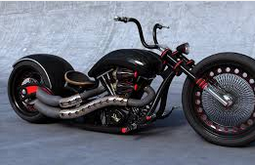
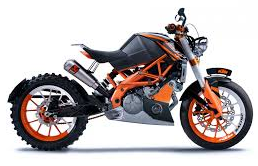
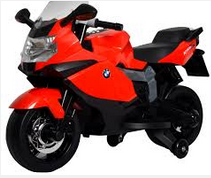
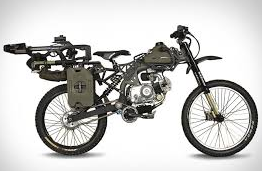


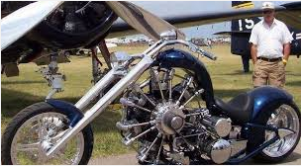
Bike ( Want to sell your Bike ? Want a Buyer ? Advertise for free at free4u.info )
Solutions to Chapter 1 : Some Basic Concepts of Chemistry
🙂
🙂
🙂
🙂
🙂
🙂
Must see http://zookeepersblog.wordpress.com/some-points-which-i-wish-all-my-new-prospective-students-know/
🙂
🙂
Must see http://zookeepersblog.wordpress.com/some-points-which-i-wish-all-my-new-prospective-students-know/
xxxxxxxxxxxxxxxxxxxxxxxxxxxxxxxxxxxxxxx
xxxxxxxxxxxxxxxxxxxxxxxxxxxxxxxxxxxxxxx
The next chapter Solution is at http://zookeepersblog.wordpress.com/ncert-cbse-standard-11-chemistry-chapter-2-structure-of-atom/
!
xxxxxxxxxxxxxxxxxxxxxxxxxxxxxxxxxxxxxxx
Surprise Element : Did you know that IIT JEE 1999 had a Clairaut’s differential equation Question.
🙂
What is Formality ?
How many IIT JEE Guide and Coaching Institutes you attended covered this ?
Dont forget to learn from SKM Classes South Bangalore
🙂
🙂
Gyan Question :
🙂
🙂
Gyan Question :
🙂
🙂
Gyan Question :
🙂
🙂
Gyan Question :
🙂
🙂
Periodic trend in hard and Soft acids
🙂
Gyan Question :
🙂
🙂
Gyan Question :
🙂
🙂
🙂
Gyan Question :
Solution :
🙂
🙂
Gyan Question :
🙂
Gyan Question :
🙂
🙂
Gyan Question :
🙂
🙂
Gyan Question :
can be approximated as 2
🙂
Gyan Question :
🙂
🙂
Gyan Question :
🙂
Gyan Question :
🙂
🙂
Gyan Question :
🙂
Gyan Question :
🙂
Gyan Question :
🙂
Gyan Question :
🙂
🙂
Gyan Question :
🙂
Gyan Question :
🙂
🙂
Gyan Question :
🙂
Gyan Question :
🙂
Gyan Question :
🙂
🙂
Gyan Question :
🙂
Gyan Question :
🙂
Gyan Question :
🙂
xxxxxxxxxxxxxxxxxxxxxxxxxxxxxxxxxxxxxxx
The next chapter Solution is at http://zookeepersblog.wordpress.com/ncert-cbse-standard-11-chemistry-chapter-2-structure-of-atom/
!
xxxxxxxxxxxxxxxxxxxxxxxxxxxxxxxxxxxxxxx
Chemistry is the science of molecules and their transformations. It is the science not so much of the one hundred elements but of the infinite variety of molecules that may be built from them … Roald Hoffmann Chemistry deals with the composition, structure and properties of matter. These aspects can be best described and understood in terms of basic constituents of matter: atoms and molecules. That is why chemistry is called the science of atoms and molecules. Can we see, weigh and perceive these entities? Is it possible to count the number of atoms and molecules in a given mass of matter and have a quantitative relationship between the mass and number of these articles (atoms and molecules)? We will like to answer some of these questions in this Unit. We would further describe how physical properties of matter can be quantitatively described using numerical values with suitable units.
1.1 IMPORTANCE OF CHEMISTRY Science can be viewed as a continuing human effort to systematize knowledge for describing and understanding nature. For the sake of convenience science is sub-divided into various disciplines: chemistry, physics, biology, geology etc. Chemistry is the branch of science that studies the composition, properties and interaction of matter. Chemists are interested in knowing how chemical transformations occur. Chemistry plays a central role in science and is often intertwined with other branches of science like physics, biology, geology etc. Chemistry also plays an important role in daily life. Chemical principles are important in diverse areas, such as: weather patterns, functioning of brain and operation of a computer. Chemical industries manufacturing fertilizers, alkalis, acids, salts, dyes, polymers, drugs, soaps, detergents, metals, alloys and other inorganic and organic chemicals, including new materials, contribute in a big way to the national economy. Chemistry plays an important role in meeting human needs for food, health care products and other materials aimed at improving the quality of life. This is exemplified by the large scale production of a variety of fertilizers,improved varieties of pesticides and insecticides. Similarly many life saving drugs such as cisplatin and taxol, are effective in cancer therapy and AZT (Azidothymidine) used for helping AIDS victims, have been isolated from plant and animal sources or prepared by synthetic methods. With a better understanding of chemical principles it has now become possible to design and synthesize new materials having specific magnetic, electric and optical properties. This has lead to the production of superconducting ceramics, conducting polymers, optical fibres and large scale miniaturization of solid state devices. In recent years chemistry has tackled with a fair degree of success some of the pressing aspects of environmental degradation.
Safer alternatives to environmentally hazardous refrigerants like CFCs chlorofluorocarbons), responsible for ozone depletion in the stratosphere, have been successfully synthesised.
However, many big environmental problems continue to be matters of grave concern to the chemists. One such problem is the management of the Green House gases like methane, carbon dioxide etc. Understanding of bio-chemical processes, use of enzymes for large-scale production of chemicals and synthesis of new exotic materials are some of the intellectual challenges for the future generation of chemists. A developing country like India needs talented and creative chemists for accepting such challenges.
1.2 NATURE OF MATTER You are already familiar with the term matter from your earlier classes. Anything which has mass and occupies space is called matter. Everything around us, for example, book, pen, pencil, water, air, all living beings etc. are composed of matter. You know that they have mass and they occupy space.
🙂
🙂
You are also aware that matter can exist in three physical states viz. solid, liquid and gas. The constituent particles of matter in these three states can be represented as shown in Fig. 1.1. In solids, these particles are held very close to each other in an orderly fashion and there is not much freedom of movement. In liquids, the particles are close to each other but they can move around. However, in gases, the particles are far apart as compared to those present in solid or liquid states and their movement is easy and fast. Because of such arrangement of particles, different states of matter exhibit the following characteristics:
(i) Solids have definite volume and definite shape.
(ii) Liquids have definite volume but not the definite shape. They take the shape of the container in which they are placed. (iii) Gases have neither definite volume nor definite shape. They completely occupy the container in which they are placed. These three states of matter are interconvertible by changing the conditions of temperature and pressure.
🙂
🙂
On heating a solid usually changes to a liquid and the liquid on further heating changes to the gaseous ( or vapour) state. In the reverse process, a gas on cooling liquifies to the liquid and the liquid on further cooling freezes to the solid. At the macroscopic or bulk level, matter can be classified as mixtures or pure substances. These can be further sub-divided as shown in Fig. 1.2.
🙂
🙂
Many of the substances present around you are mixtures. For example, sugar solution in water, air, tea etc., are all mixtures. A mixture contains two or more substances present in it (in any ratio) which are called its components. A mixture may be homogeneous or heterogeneous. In a homogeneous mixture, the components completely mix with each other and its composition is uniform throughout. Sugar solution, and air are thus, the examples of homogeneous mixtures. In contrast to this, in heterogeneous mixtures, the composition is not uniform throughout and sometimes the different components can be observed. For example, the mixtures of salt and sugar, grains and pulses along with some dirt (often stone) pieces, are heterogeneous mixtures. You can think of many more examples of mixtures which you come across in the daily life. It is worthwhile to mention here that the components of a mixture can be separated by using physical methods such as simple hand picking, filtration, crystallisation, distillation etc. Pure substances have characteristics different from the mixtures.
They have fixed composition, whereas mixtures may contain the components in any ratio and their composition is variable. Copper, silver, gold, water, glucose are some examples of pure substances. Glucose contains carbon, hydrogen and oxygen in a fixed ratio and thus, like all other pure substances has a fixed composition. Also, the constituents of pure substances cannot be separated by simple physical methods. Pure substances can be further classified into elements and compounds. An element consists of only one type of particles. These particles may be atoms or molecules. You may be familiar with atoms and molecules from the previous classes; however, you will be studying about them in detail in Unit 2. Sodium, copper, silver, hydrogen, oxygen etc. are some examples of elements. They all contain atoms of one type. However, the atoms of different elements are different in nature. Some elements such as sodium or copper, contain single atoms held together as their constituent particles whereas in some others, two or more atoms combine to give molecules of the element. Thus, hydrogen, nitrogen and oxygen gases consist of molecules in which two atoms combine to give their respective molecules. This is illustrated in Fig. 1.3.
🙂
🙂
When two or more atoms of different elements combine, the molecule of a compound is obtained. The examples of some compounds are water, ammonia, carbon dioxide, sugar etc. The molecules of water and carbon dioxide are represented in Fig 1.4.
🙂
🙂
You have seen above that a water molecule comprises two hydrogen atoms and one oxygen atom. Similarly, a molecule of carbon dioxide contains two oxygen atoms combined with one carbon atom. Thus, the atoms of different elements are present in a compound in a fixed and definite ratio and this ratio is characteristic of a particular compound. Also, the properties of a compound are different from those of its constituent elements. For example, hydrogen and oxygen are gases whereas the compound formed by their combination i.e., water is a liquid. It is interesting to note that hydrogen burns with a pop sound and oxygen is a supporter of combustion, but water is used as a fire extinguisher. Moreover, the constituents of a compound cannot be separated into simpler substances by physical methods. They can be separated by chemical methods.
1.3 PROPERTIES OF MATTER AND THEIR MEASUREMENT Every substance has unique or characteristic properties. These properties can be classified into two categories — physical properties and chemical properties. Physical properties are those properties which can be measured or observed without changing the identity or the composition of the substance. Some examples of physical properties are colour, odour, melting point, boiling point, density etc. The measurement or observation of chemical properties require a chemical change to occur. The examples of chemical properties are characteristic reactions of different substances; these include acidity or basicity, combustibility etc. Many properties of matter such as length, area, volume, etc., are quantitative in nature. Any quantitative observation or measurement is represented by a number followed by units in which it is measured. For example length of a room can be represented as 6 m; here 6 is the number and m denotes metre — the unit in which the length is measured. Two different systems of measurement, i.e. the English System and the Metric System were being used in different parts of the world. The metric system which originated in France in late eighteenth century, was more convenient as it was based on the decimal system. The need of a common standard system was being felt by the scientific community. Such a system was established in 1960 and is discussed below in detail.
1.3.1 The International System of Units (SI) The International System of Units (in French Le Systeme International d‘Unités -abbreviated as SI) was established by the 11th General Conference on Weights and Measures (CGPM from Conference Generale des Poids at Measures). The CGPM is an inter governmental treaty organization created by a diplomatic treaty known as Metre Convention which was signed in Paris in 1875. The SI system has seven base units and they are listed in Table 1.1.
🙂
🙂
These units pertain to the seven fundamental scientific quantities. The other physical quantities such as speed, volume, density etc. can be derived from these quantities. The definitions of the SI base units are given in Table 1.2.
🙂
🙂
The SI system allows the use of prefixes to indicate the multiples or submultiples of a unit. These prefixes are listed in Table 1. 3.
🙂
🙂
Let us now quickly go through some of the quantities which you will be often using in this book.
1.3.2 Mass and Weight Mass of a substance is the amount of matter present in it while weight is the force exerted by gravity on an object. The mass of a substance is constant whereas its weight may vary from one place to another due to change in gravity. You should be careful in using these terms. The mass of a substance can be determined very accurately in the laboratory by using an analytical balance (Fig. 1.5).
🙂
The SI unit of mass as given in Table 1.1 is kilogram. However, its fraction gram (1 kg = 1000 g), is used in laboratories due to the smaller amounts of chemicals used in chemical reactions.
Volume Volume has the units of (length)3. So in SI system, volume has units of m3. But again, in chemistry laboratories, smaller volumes are used. Hence, volume is often denoted in cm3 or dm3 units.
Maintaining the National Standards of Measurements
The s ystem of units including unit definitions keeps on changing with time. Whenever the accuracy of measurement of a particular unit was enhanced substantially by adopting new principles, member nations of metre treaty (signed in 1875), agreed to change the formal definition of that unit. Each modern industrialized country including India has a National Metrology Institute (NMI) which maintains standards of measurements. This responsibility has been given to the National Physical Laboratory (NPL), New Delhi. This laboratory establishes experiments to realize the base units and derived units of measurement and maintains National Standards of Measurement. These standards are periodically inter-compared with standards maintained at other National Metrology Institutes in the world as well as those established at the International Bureau of Standards in Paris.
🙂
A common unit, litre (L) which is not an SI unit, is used for measurement of volume of liquids. 1 L = 1000 mL , 1000 cm3 = 1 dm3 Fig. 1.6 helps to visualise these relations.
🙂
🙂
In the laboratory, volume of liquids or solutions can be measured by graduated cylinder, burette, pipette etc. A volumetric flask is used to prepare a known volume of a solution. These measuring devices are shown in Fig. 1.7
🙂
🙂
Density Density of a substance is its amount of mass per unit volume. So SI units of density can be obtained as follows: SI unit of density = (SI unit of mass / SI unit of volume) = kg/m3 or kg m-3 This unit is quite large and a chemist often expresses density in g cm-3, where mass is expressed in gram and volume is expressed in cm3.
Temperature There are three common scales to measure temperature — °C (degree celsius), °F (degree fahrenheit) and K (kelvin). Here, K is the SI unit. The thermometers based on these scales are shown in Fig. 1.8. Generally, the thermometer with celsius scale are calibrated from 0° to 100° where these two temperatures are the freezing point and the boiling point of water respectively. The fahrenheit scale is represented between 32° to 212°. The temperatures on two scales are related to each other by the following relationship: °F = 9/5 (°C) + 32 The kelvin scale is related to celsius scale as follows : K = °C+273.15 It is interesting to note that temperature below 0 °C (i.e. negative values) are possible in Celsius scale but in Kelvin scale, negative temperature is not possible.
🙂
🙂
Reference Standard
After defining a unit of measurement such as the kilogram or the metre, scientists agreed on reference standards that make it possible to calibrate all measuring devices. For getting reliable measurements, all devices such as metre sticks and analytical balances have been calibrated by their manufacturers to give correct readings. However, each of these devices is standardised or calibrated against some reference. The mass standard is the kilogram since 1889. It has been defined as the mass of platinum-iridium (Pt-Ir) cylinder that is stored in an airtight jar at International Bureau of Weights and Measures in Sevres, France. Pt-Ir was chosen for this standard because it is highly resistant to chemical attack and its mass will not change for an extremely long time.Scientists are in search of a new standard for mass. This is being attempted through accurate determination of Avogadro constant. Work on this new standard focuses on ways to measure accurately the number of atoms in a welldefined mass of sample. One such method, which uses X-rays to determine the atomic density of a crystal of ultrapure silicon, has an accuracy of about 1 part in 106 but has not yet been adopted to serve as a standard. There are other methods but none of them are presently adequate to replace the Pt-Ir cylinder. No doubt, changes are expected within this decade. The metre was originally defined as the length between two marks on a Pt-Ir bar kept at a temperature of 0°C (273.15 K). In 1960 the length of the metre was defined as 1.65076373 x 106 times the wavelength of light emitted by a krypton laser. Although this was a cumbersome number, it preserved the length of the metre at its agreed value. The metre was redefined in 1983 by CGPM as the length of path travelled by light in vacuum during a time interval of 1/299 792 458 of a second. Similar to the length and the mass, there are reference standards for other physical quantities.
🙂
1.4 UNCERTAINTY IN MEASUREMENT Many a times in the study of chemistry, one has to deal with experimental data as well as theoretical calculations. There are meaningful ways to handle the numbers conveniently and present the data realistically with certainty to the extent possible. These ideas are discussed below in detail.
1.4.1 Scientific Notation As chemistry is the study of atoms and molecules which have extremely low masses and are present in extremely large numbers, a chemist has to deal with numbers as large as 602, 200,000,000,000,000,000,000 for the molecules of 2 g of hydrogen gas or as small as 0.00000000000000000000000166 g mass of a H atom. Similarly other constants such as Planck’s constant, speed of light, charges on particles etc., involve numbers of the above magnitude. It may look funny for a moment to write or count numbers involving so many zeros but it offers a real challenge to do simple mathematical operations of addition, subtraction, multiplication or division with such numbers. You can write any two numbers of the above type and try any one of the operations you like to accept the challenge and then you will really appreciate the difficulty in handling such numbers. This problem is solved by using scientific notation for such numbers, i.e., exponential notation in which any number can be represented in the form N 10n where n is an exponent having positive or negative values and N can vary between 1 to 10. Thus, we can write 232.508 as 2.32508 ×102 in scientific notation. Note that while writing it, the decimal had to be moved to the left by two places and same is the exponent (2) of 10 in the scientific notation. Similarly, 0.00016 can be written as 1.6 × 10-4. Here the decimal has to be moved four places to the right and ( – 4) is the exponent in the scientific notation. Now, for performing mathematical operations on numbers expressed in scientific notations, the following points are to be kept in mind.
Multiplication and Division These two operations follow the same rules which are there for exponential numbers, i.e. (5.6 x 105) x (6.9 x 108) = (5.6 x 6.9) x (105+8) =(5.6 x 6.9) x (1013) = 38.64 x 105+8 (9.8 x 10-2) x (2.5 x 10-6) = (9.8 x 2.5) x (10-2+(-6)) = (9.8 x 2.5) x (10-2-6)=24.50 x 10-8 (2.7 x 10-3)/(5.5 x 104) = (2.7 ÷ 5.5) x (10-3-4) = 0.4909 x 10-7
Addition and Subtraction For these two operations, first the numbers are written in such a way that they have same exponent. After that, the coefficient are added or subtracted as the case may be. Thus, for adding 6.65 x 104 and 8.95 x 103, 6.65 x104 + 0.895 x104 exponent is made same for both the numbers. Then, these numbers can be added as follows (6.65 + 0.895) x 104 = 7.545 x 104 Similarly, the subtraction of two numbers can be done as shown below : 2.5 x 10-2 — 4.8 x 10-3 = (2.5 x10-2) — (0.48 x 10-2) = (2.5 — 0.48) x 10-2 = 2.02 x 10-2
1.4.2 Significant Figures Every experimental measurement has some amount of uncertainty associated with it. However, one would always like the results to be precise and accurate. Precision and accuracy are often referred to while we talk about the measurement. Precision refers to the closeness of various measurements for the same quantity. However, accuracy is the agreement of a particular value to the true value of the result. For example, if the true value for a result is 2.00 g and a student ‘A’ takes two measurements and reports the results as 1.95 g and 1.93 g. These values are precise as they are close to each other but are not accurate. Another student repeats the experiment and obtains 1.94 g and 2.05 g as the results for two measurements. These observations are neither precise nor accurate. When a third student repeats these measurements and reports 2.01g and 1.99 g as the result. These values are both precise and accurate. This can be more clearly understood from the data given in Table 1.4
🙂
🙂
The uncertainty in the experimental or the calculated values is indicated by mentioning the number of significant figures. Significant figures are meaningful digits which are known with certainty. The uncertainty is indicated by writing the certain digits and the last uncertain digit. Thus, if we write a result as 11.2 mL, we say the 11 is certain and 2 is uncertain and the uncertainty would be ±1 in the last digit. Unless otherwise stated, an uncertainty of ±1 in the last digit is always understood. There are certain rules for determining the number of significant figures. These are stated below:
(1) All non-zero digits are significant. For example in 285 cm, there are three significant figures and in 0.25 mL, there are two significant figures.
(2) Zeros preceding to first non-zero digit are not significant. Such zero indicates the position of decimal point. Thus, 0.03 has one significant figure and 0.0052 has two significant figures.
(3) Zeros between two non-zero digits are significant. Thus, 2.005 has four significant figures.
(4) Zeros at the end or right of a number are significant provided they are on the right side of the decimal point. For example, 0.200 g has three significant figures. But, if otherwise, the terminal zeros are not significant if there is no decimal point. For example, 100 has only one significant figure, but 100. has three significant figures and 100.0 has four significant figures. Such numbers are better represented in scientific notation. We can express the number 100 as 1 x 102 for one significant figure, 1.0 x 1022 for two significant figures and 1.00 x 102 for three significant figures.
(5) Counting numbers of objects, for example, 2 balls or 20 eggs, have infinite significant figures as these are exact numbers and can be represented by writing infinite number of zeros after placing a decimal i.e., 2 = 2.000000 or 20 = 20.000000 In numbers written in scientific notation, all digits are significant e.g., 4.01 x 102 has three significant figures, and 8.256 x 103 has four significant figures.
Addition and Subtraction of Significant Figures The result cannot have more digits to the right of the decimal point than either of the original numbers. 12.11 18.0 1.012 ————— 31.122
Here, 18.0 has only one digit after the decimal point and the result should be reported only up to one digit after the decimal point which is 31.1.
Multiplication and Division of Significant Figures In these operations, the result must be reported with no more significant figures as are there in the measurement with the few significant figures. 2.5 x 1.25 = 3.125 Since 2.5 has two significant figures, the result should not have more than two significant figures, thus, it is 3.1. While limiting the result to the required number of significant figures as done in the above mathematical operation, one has to keep in mind the following points for rounding off the numbers 1. If the rightmost digit to be removed is more than 5, the preceding number is increased by one. for example, 1.386 If we have to remove 6, we have to round it to 1.39 2. If the rightmost digit to be removed is less than 5, the preceding number is not changed. For example, 4.334 if 4 is to be removed, then the result is rounded upto 4.33. 3. If the rightmost digit to be removed is 5, then the preceding number is not changed if it is an even number but it is increased by one if it is an odd number. For example, if 6.35 is to be rounded by removing 5, we have to increase 3 to 4 giving 6.4 as the result. However, if 6.25 is to be rounded off it is rounded off to 6.2.
1.4.3 Dimensional Analysis Often while calculating, there is a need to convert units from one system to other. The method used to accomplish this is called factor label method or unit factor method or dimensional analysis. This is illustrated below.
Example A piece of metal is 3 inch (represented by in) long. What is its length in cm? We know that 1 in = 2.54 cm From this equivalence, we can write 1 in / 2.54cm =1=2.54cm /1 in thus (1 in/2.54cm) equals 1 and (2.54cm/1 in) also equals 1. Both of these are called unit factors. If some number is multiplied by these unit factors (i.e. 1), it will not be affected otherwise. Say, the 3 in given above is multiplied by the unit factor. So, 3 in = 3 in x 2.54cm/1 in = 3 2.54 cm = 7.62 cm Now the unit factor by which multiplication is to be done is that unit factor ( 2.54cm/1 in in the above case) which gives the desired units i.e., the numerator should have that part which is required in the desired result. It should also be noted in the above example that units can be handled just like other numerical part. It can be cancelled, divided, multiplied, squared etc. Let us study one more example for it.
Example A jug contains 2L of milk. Calculate the volume of the milk in m3. Since 1 L = 1000 cm3 and 1m = 100 cm which gives 1 m /100cm = 1 = 100 cm /1m To get m3 from the above unit factors, the first unit factor is taken and it is cubed. (1m/100m)3 => 1m3/106 cm3 = (1)3 = 1 Now 2 L = 2 x 1000 cm3 The above is multiplied by the unit factor 2 x 1000 cm3 x 1m3/106 cm3= 2m3/ 103 = 2 x 10-3 m3
Example How many seconds are there in 2 days? Here, we know 1 day = 24 hours (h) or 1day / 24 h = 1 = 24 h / 1day then 1h = 60 min or 1h / 60min = 1 = 60min / 1h so, for converting 2 days to seconds, i.e., 2days−−−−−−= −−− seconds The unit factors can be multiplied in series in one step only as follows: 2day x (24 h / 1day) x (60 min / 1h) x (60s / 1min) = 2 x 24 x 60 x 60 s = 172800 s
1.5 LAWS OF CHEMICAL COMBINATIONS The combination of elements to form compounds is governed by the following five basic laws.
1.5.1 Law of Conservation of Mass
🙂
It states that matter can neither be created nor destroyed. This law was put forth by Antoine Lavoisier in 1789. He performed careful experimental studies for combustion reactions for reaching to the above conclusion. This law formed the basis for several later developments in chemistry. Infact, this was the result of exact measurement of masses of reactants and products, and carefully planned experiments performed by Lavoisier.
1.5.2 Law of Definite Proportions
🙂
🙂
This law was given by, a French chemist, Joseph Proust. He stated that a given compound always contains exactly the same proportion of elements by weight. Proust worked with two samples of cupric carbonate — one of which was of natural origin and the other was synthetic one. He found that the composition of elements present in it was same for both the samples as shown below :
| % of copper | % of oxygen | % of carbon | |
|---|---|---|---|
| Natural Sample | 51.35 | 9.74 | 38.91 |
| Synthetic Sample | 51.35 | 9.74 | 38.91 |
Thus, irrespective of the source, a given compound always contains same elements in the same proportion. The validity of this law has been confirmed by various experiments. It is sometimes also referred to as Law of definite composition.
1.5.3 Law of Multiple Proportions This law was proposed by Dalton in 1803. According to this law, if two elements can combine to form more than one compound, the masses of one element that combine with a fixed mass of the other element, are in the ratio of small whole numbers. For example, hydrogen combines with oxygen to form two compounds, namely, water and hydrogen peroxide. Hydrogen + Oxygen → Water 2g 16g 18g Hydrogen + Oxygen → Hydrogen Peroxide 2g 32g 34g Here, the masses of oxygen (i.e. 16 g and 32 g) which combine with a fixed mass of hydrogen (2g) bear a simple ratio, i.e. 16:32 or 1: 2.
1.5.4 Gay Lussac’s Law of Gaseous Volumes
🙂
🙂
This law was given by Gay Lussac in 1808. He observed that when gases combine or are produced in a chemical reaction they do so in a simple ratio by volume provided all gases are at same temperature and pressure. Thus, 100 mL of hydrogen combine with 50 mL of oxygen to give 100 mL of water vapour. Hydrogen + Oxygen → Water 100 mL 50 mL 100 mL Thus, the volumes of hydrogen and oxygen which combine together (i.e. 100 mL and 50 mL) bear a simple ratio of 2:1.
Gay-Lussac’s discovery of integer ratio in volume relationship is actually the law of definite proportions by volume. The law of definite proportions, stated earlier, was with respect to mass. The Gay-Lussac’s law was explained properly by the work of Avogadro in 1811.
1.5.5 Avogadro Law
🙂
🙂
In 1811, Avogadro proposed that equal volumes of gases at the same temperature and pressure should contain equal number of molecules. Avogadro made a distinction between atoms and molecules which is quite understandable in the present times. If we consider again the reaction of hydrogen and oxygen to produce water, we see that two volumes of hydrogen combine with one volume of oxygen to give two volumes of water without leaving any unreacted oxygen. Note that in the Fig. 1.9, each box contains equal number of molecules. In fact, Avogadro could explain the above result by considering the molecules to be polyatomic. If hydrogen and oxygen were considered as diatomic as recognised now, then the above results are easily understandable. However, Dalton and others believed at that time that atoms of the same kind cannot combine and molecules of oxygen or hydrogen containing two atoms did not exist. Avogadro’s proposal was published in the French Journal de Physidue. In spite of being correct, it did not gain much support.
🙂
🙂
Although the origin of idea that matter is composed of small indivisible particles called ‘a-tomio’ (meaning —indivisible), dates back to the time of Democritus, a Greek Philosopher (460 — 370 BC), it again started emerging as a result of several experimental studies which led to the Laws mentioned above. In 1808, Dalton published ‘A New System of Chemical Philosophy’ in which he proposed the following :
1. Matter consists of indivisible atoms.
2. All the atoms of a given element have identical properties including identical mass. Atoms of different elements differ in mass. 3. Compounds are formed when atoms of different elements combine in a fixed ratio.
4. Chemical reactions involve reorganisation of atoms. These are neither created nor destroyed in a chemical reaction. Dalton‘s theory could explain the laws of chemical combination.
1.7 ATOMIC AND MOLECULAR MASSES After having some idea about the terms atoms and molecules, it is appropriate here to understand what we mean by atomic and molecular masses.
1.7.1 Atomic Mass The atomic mass or the mass of an atom is actually very-very small because atoms are extremely small. Today, we have sophisticated techniques e.g., mass spectrometry for determining the atomic masses fairly accurately. But, in the nineteenth century, scientists could determine mass of one atom relative to another by experimental means, as has been mentioned earlier. Hydrogen, being lightest atom was arbitrarily assigned a mass of 1 (without any units) and other elements were assigned masses relative to it. However, the present system of atomic masses is based on carbon – 12 as the standard and has been agreed upon in 1961. Here, Carbon – 12 is one of the isotopes of carbon and can be represented as 12C. In this system, 12C is assigned a mass of exactly 12 atomic mass unit (amu) and masses of all other atoms are given relative to this standard. One atomic mass unit is defined as a mass exactly equal to onetwelfth the mass of one carbon – 12 atom. And 1 amu = 1.66056 x 10-24 g Mass of an atom of hydrogen = 1.6736 x 10-24 g Thus, in terms of amu, the mass of hydrogen atom = (1.6736 x 10-24) g/ (1.66056 x 10-24 g) = 1.0078 amu = 1.0080 amu Similarly, the mass of oxygen – 16 (16O) atom would be 15.995 amu. Today, ‘amu’ has been replaced by ‘u’ which is known as unified mass. When we use atomic masses of elements in calculations, we actually use average atomic masses of elements which are explained below.
1.7.2 Average Atomic Mass Many naturally occurring elements exist as more than one isotope. When we take into account the existence of these isotopes and their relative abundance (per cent occurrence), the average atomic mass of that element can be computed. For example, carbon has the following three isotopes with relative abundances and masses as shown against each of them
|
Isotope
|
Relative Abundance (%)
|
Atomic Mass (amu)
|
|
12C
|
98.892
|
12
|
|
13C
|
1.108
|
13.00335
|
|
14C
|
2 x 10-10
|
14.00317
|
From the above data, the average atomic mass of carbon will come out to be : (0.98892) (12 u) + ( 0.01108) (13.00335 u) + (2 x 10-12) (14.00317 u) = 12.011 u Similarly, average atomic masses for other elements can be calculated. In the periodic table of elements, the atomic masses mentioned for different elements actually represented their average atomic masses.
1.7.3 Molecular Mass Molecular mass is the sum of atomic masses of the elements present in a molecule. It is obtained by multiplying the atomic mass of each element by the number of its atoms and adding them together. For example, molecular mass of methane which contains one carbon atom and four hydrogen atoms can be obtained as follows : Molecular mass of methane, (CH4) = (12.011 u) + 4 (1.008 u) = 16.043 u Similarly, molecular mass of water (H2O) = 2 atomic mass of hydrogen + 1 atomic mass of oxygen = 2 (1.008 u) + 16.00 u = 18.02 u
Problem 1.1 Calculate molecular mass of glucose (C6H12O6) molecule.
Solution Molecular mass of glucose (C6H12O6) = 6(12.011 u) + 12(1.008 u) + 6(16.00 u) = (72.066 u) + (12.096 u) + (96.00 u) = 180.162 u
1.7.4 Formula Mass Some substances such as sodium chloride do not contain discrete molecules as their constituent units. In such compounds, positive (sodium) and negative (chloride) entities are arranged in a three-dimensional structure, as shown in Fig. 1.10.
🙂
🙂
It may be noted that in sodium chloride, one Na+ is surrounded by six Cl– and vice-versa. The formula such as NaCl is used to calculate the formula mass instead of molecular mass as in the solid state sodium chloride does not exist as a single entity. Thus, formula mass of sodium chloride = atomic mass of sodium + atomic mass of chlorine = 23.0 u + 35.5 u = 58.5 u
🙂
🙂
🙂
🙂
🙂
🙂
🙂
🙂
🙂
🙂
🙂
🙂
🙂
1.8 MOLE CONCEPT AND MOLAR MASSES
Atoms and molecules are extremely small in size and their numbers in even a small amount of any substance is really very large. To handle such large numbers, a unit of similar magnitude is required. Just as we denote one dozen for 12 items, score for 20 items, gross for 144 items, we use the idea of mole to count entities at the microscopic level (i.e. atoms/molecules/ particles, electrons, ions, etc). In SI system, mole (symbol, mol) was introduced as seventh base quantity for the amount of a substance. One mole is the amount of a substance that contains as many particles or entities as there are atoms in exactly 12 g (or 0.012 kg) of the 12C isotope. It may be emphasised that the mole of a substance always contain the same number of entities, no matter what the substance may be. In order to determine this number precisely, the mass of a carbon — 12 atom was determined by a mass spectrometer and found to be equal to 1.992648 x10-23 g. Knowing that one mole of carbon weighs 12 g, the number of atoms in it is equal to : (12 g/mol 12C)/1.992648×10−23 g/ 12Catom =6.0221367×1023 atoms/mol This number of entities in 1 mol is so important that it is given a separate name and symbol.
It is known as ‘Avogadro constant’, denoted by NA in honour of Amedeo Avogadro. To really appreciate largeness of this number, let us write it with all the zeroes without using any powers of ten. 602213670000000000000000 Hence, so many entities (atoms, molecules or any other particle) constitute one mole of a particular substance. We can, therefore, say that 1 mol of hydrogen atoms = 6.022×1023 atoms 1 mol of water molecules = 6.022×1023 water molecules
🙂
1 mol of sodium chloride = 6.022 x 1023 formula units of sodium chloride Having defined the mole, it is easier to know mass of one mole of the substance or the constituent entities. The mass of one mole of a substance in grams is called its molar mass. The molar mass in grams is numerically equal to atomic/molecular/formula mass in u. Molar mass of water = 18.02 g mol-1 Molar mass of sodium chloride = 58.5 g mol-1
1.9 PERCENTAGE COMPOSITION
So far, we were dealing with the number of entities present in a given sample. But many a time, the information regarding the percentage of a particular element present in a compound is required. Suppose an unknown or new compound is given to you, the first question you would ask is: what is its formula or what are its constituents and in what ratio are they present in the given compound? For known compounds also, such information provides a check whether the given sample contains the same percentage of elements as is present in a pure sample. In other words, one can check the purity of a given sample by analysing this data. Let us understand it by taking the example of water (H2O). Since water contains hydrogen and oxygen, the percentage composition of both these elements can be calculated as follows : Mass % of an element = mass of that element in the compound × 100 / molar mass of the compound Molar mass of water = 18.02 g Mass % of hydrogen = (2×1.008 / 18.02) ×100 = 11.18 Mass % of oxygen = (16.00/ 18.02)×100 = 88.79 Let us take one more example. What is the percentage of carbon, hydrogen and oxygen in ethanol? Molecular formula of ethanol is : C2H5OH Molar mass of ethanol is : (212.01 + 61.008 + 16.00) g = 46.068 g Mass per cent of carbon = (24.02g / 46.068g) ×100 = 52.14% Mass per cent of hydrogen = (6.048g / 46.068g)×100 = 13.13% Mass per cent of oxygen = (16.00 g / 46.068g)×100 = 34.73% After understanding the calculation of per cent of mass, let us now see what information can be obtained from the per cent composition data.
1.9.1 Empirical Formula for Molecular Formula
An empirical formula represents the simplest whole number ratio of various atoms present in a compound whereas the molecular formula shows the exact number of different types of atoms present in a molecule of a compound. If the mass per cent of various elements present in a compound is known, its empirical formula can be determined. Molecular formula can further be obtained if the molar mass is known. The following example illustrates this sequence.
Problem 1.2
A compound contains 4.07 % hydrogen, 24.27 % carbon and 71.65 % chlorine. Its molar mass is 98.96 g. What are its empirical and molecular formulas ?
Solution Step 1. Conversion of mass per cent to grams. Since we are having mass per cent, it is convenient to use 100 g of the compound as the starting material. Thus, in the 100 g sample of the above compound, 4.07g hydrogen is present, 24.27g carbon is present and 71.65 g chlorine is present. Step 2. Convert into number moles of each element Divide the masses obtained above by respective atomic masses of various elements. Moles of hydrogen = 4.07 g /1.008 g = 4.04 Moles of carbon = 24.27 g /12.01g = 2.021 Moles of chlorine = 71.65g /35.453 g = 2.021 Step 3. Divide the mole value obtained above by the smallest number Since 2.021 is smallest value, division by it gives a ratio of 2:1:1 for H:C:Cl . In case the ratios are not whole numbers, then they may be converted into whole number by multiplying by the suitable coefficient. Step 4. Write empirical formula by mentioning the numbers after writing the symbols of respective elements. CH2Cl is, thus, the empirical formula of the above compound. Step 5. Writing molecular formula (a) Determine empirical formula mass Add the atomic masses of various atoms present in the empirical formula. For CH2Cl, empirical formula mass is 12.01 + 2 1.008 + 35.453 = 49.48 g (b) Divide Molar mass by empirical formula mass Molar mass/Empirical formula mass = 98.96 g/ 49.48g = 2 = (n) (c) Multiply empirical formula by n obtained above to get the molecular formula Empirical formula = CH2Cl, n = 2. Hence molecular formula is C2H4Cl2.
| Balancing a chemical equation |
| According to the law of conservation of mass, a balanced chemical equation has the same number of atoms of each element on both sides of the equation. Many chemical equations can be balanced by trial and error. Let us take the reactions of a few metals and non-metals with oxygen to give oxides4 Fe(s) + 3O2(g) → 2Fe2O3(s) (a) balanced equation2 Mg(s) + O2(g) → 2MgO(s) (b) balanced equationP4(s) + O2 (g) → P4O10(s) (c) unbalanced equationEquations (a) and (b) are balanced since there are same number of metal and oxygen atoms on each side of equations. However equation (c) is not balanced. In this equation, phosphorus atoms are balanced but not the oxygen atoms. To balance it, we must place the coefficient 5 on the left of oxygen on the left side of the equation to balance the oxygen atoms appearing on the right side of the equation.P4(s) + 5O2(g) → P4O10(s) balanced equationNow let us take combustion of propane, C3H8. This equation can be balanced in steps.Step 1 Write down the correct formulas of reactants and products. Here propane and oxygen are reactants, and carbon dioxide and water are products.C3H8(g) + O2(g) → CO2 (g) +H2O(l) unbalanced equationStep 2 Balance the number of C atoms: Since 3 carbon atoms are in the reactant, therefore, three CO2 molecules are required on the right side.C3H8 (g) + O2 (g) → 3CO2 (g) + H2O (l)Step 3 Balance the number of H atoms : on the left there are 8 hydrogen atoms in the reactants however, each molecule of water has two hydrogen atoms, so four molecules of water will be required for eight hydrogen atoms on the right side.C3H8 (g) +O2 (g) → 3CO2 (g)+4H2O (l)Step 4 Balance the number of O atoms: There are ten oxygen atoms on the right side (3 × 2 = 6 in CO2 and 4 × 1= 4 in water). Therefore, five O2 molecules are needed to supply the required ten oxygen atoms.C3H8 (g) +5O2 (g) → 3CO2 (g) + 4H2O (l)Step 5 Verify that the number of atoms of each element is balanced in the final equation. The equation shows three carbon atoms, eight hydrogen atoms, and ten oxygen atoms on each side.All equations that have correct formulas for all reactants and products can be balanced. Always remember that subscripts in formulas of reactants and products cannot be changed to balance an equation. |
1.10 STOICHIOMETRY AND STOICHIOMETRIC CALCULATIONS
The word ‘stoichiometry’ is derived from two Greek words – stoicheion (meaning element) and metron (meaning measure). Stoichiometry, thus, deals with the calculation of masses (sometimes volumes also) of the reactants and the products involved in a chemical reaction. Before understanding how to calculate the amounts of reactants required or those produced in a chemical reaction, let us study what information is available from the balanced chemical equation of a given reaction. Let us consider the combustion of methane. A balanced equation for this reaction is as given below : CH4 (g) + 2O2 (g) → CO2 (g) + 2 H2O (g) Here, methane and dioxygen are called reactants and carbon dioxide and water are called products. Note that all the reactants and the products are gases in the above reaction and this has been indicated by letter (g) in the brackets next to its formula. Similarly, in the case of solids and liquids, (s) and (l) are written respectively. The coefficients 2 for O2 and H2O are called stoichiometric coefficients. Similarly the coefficient for CH4 and CO2 is one in each case. They represent the number of molecules (and moles as well) taking part in the reaction or formed in the reaction. Thus, according to the above chemical reaction, • One mole of CH4(g) reacts with two moles of O2(g) to give one mole of CO2(g) and two moles of H2O(g) • One molecule of CH4(g) reacts with 2 molecules of O2(g) to give one molecule of CO2(g) and 2 molecules of H2O(g) • 22.4 L of CH4(g) reacts with 44.8 L of O2 (g) to give 22.4 L of CO2 (g) and 44.8 L of H2O(g) • 16 g of CH4 (g) reacts with 232 g of O2 (g) to give 44 g of CO2 (g) and 218 g of H2O (g). From these relationships, the given data can be interconverted as follows :
🙂
Problem 1.3 Calculate the amount of water (g) produced by the combustion of 16 g of methane.
Solution The balanced equation for combustion of methane is : CH4 g+2O2 g→CO2 g + 2H2O g (i)16 g of CH4 corresponds to one mole. (ii) From the above equation, 1 mol of CH4 (g) gives 2 mol of H2O (g). 2 mol of water (H2O) = 2 (2+16) = 2 x 18 = 36 g 1 mol H2O = 18 g H2O ⇒18g H2O/1mol H2O = 1 Hence 2 mol H2O x (18 g H2O/1mol H2O)= 2 x 18 g H2O = 36 g H2O
Problem 1.4 How many moles of methane are required to produce 22 g CO2 (g) after combustion? Solution According to the chemical equation, CH4 g+2O2 g→CO2 g + 2H2O g 44g CO2 (g) is obtained from 16 g CH4 (g). [ ∵1 mol CO2(g) is obtained from 1 mol of CH4(g)] mole of CO2 (g) = 22 g CO2 (g) x (1 mol CO2 (g)/44 g CO2 (g)) = 0.5 mol CO2 (g) Hence, 0.5 mol CO2 (g) would be obtained from 0.5 mol CH4 (g) or 0.5 mol of CH4 (g) would be required to produce 22 g CO2(g).
1.10.1 Limiting Reagent
Many a time, the reactions are carried out when the reactants are not present in the amounts as required by a balanced chemical reaction. In such situations, one reactant is in excess over the other. The reactant which is present in the lesser amount gets consumed after sometime and after that no further reaction takes place whatever be the amount of the other reactant present. Hence, the reactant which gets consumed, limits the amount of product formed and is, therefore, called the limiting reagent. In performing stoichiometric calculations, this aspect is also to be kept in mind.
Problem 1.5 50.0 kg of N2 (g) and 10.0 kg of H2 (g) are mixed to produce NH2 (g). Calculate the NH2 (g) formed. Identify the limiting reagent in the production of NH3 in this situation.
Solution A balanced equation for the above reaction is written as follows :
= 50.0 kg N2 x (1000 g N2 /1 kgN2) x (1 molN2/28.0 g N2)= 17.86 x 102 mol moles of H2 = 10.00 kg H2 x (1000g H2/1 kg H2) x (1molH2/ 2.016g H2)= 4.96 x 103 mol
According to the above equation, 1 mol N2 (g) requires 3 mol H2 (g), for the reaction. Hence, for 17.86 x 102 mol of N2, the moles of H2 (g) required would be 17.86 x 102 mol N2 x (3 mol H2 (g)/1 mol N2 (g)) = 5.36 103 mol H2 But we have only 4.96 x 103 mol H2. Hence, dihydrogen is the limiting reagent in this case. So NH2(g) would be formed only from that amount of available dihydrogen i.e., 4.96 x 103 mol Since 3 mol H2(g) gives 2 mol NH3(g) 4.96 x 103 mol H2 (g) x (2molNH3 (g)/3 mol H2 (g))= 3.30 x 103 mol NH3 (g) 3.30 x 103 mol NH3 (g) is obtained. If they are to be converted to grams, it is done as follows : 1 mol NH3 (g) = 17.0 g NH3(g) 3.30 x 103 mol NH3 (g) x ( 17.0 g NH3 (g) /1mol NH3 (g)) = 3.30 x 103 x 17 g NH3 (g) = 56.1103 g NH3 = 56.1 kg NH3
1.10.2 Reactions in Solutions A majority of reactions in the laboratories are carried out in solutions. Therefore, it is important to understand as how the amount of substance is expressed when it is present in the form of a solution. The concentration of a solution or the amount of substance present in its given volume can be expressed in any of the following ways. 1. Mass per cent or weight per cent (w/w %) 2. Mole fraction 3. Molarity 4. Molality Let us now study each one of them in detail.
1. Mass per cent It is obtained by using the following relation: Mass per cent = (Mass of solute /Mass of solution ) x 100
Problem 1.6 A solution is prepared by adding 2 g of a substance A to 18 g of water. Calculate the mass per cent of the solute.
Solution Mass per cent of A=( Mass of A /Mass of solution) ×100= 2 g /(2 g of A + 18 g of water) × 100 = (2g /20 g )× 100 = 10 %
2. Mole Fraction It is the ratio of number of moles of a particular component to the total number of moles of the solution. If a substance ‘A’ dissolves in substance ‘B’ and their number of moles are nA and nB respectively; then the mole fractions of A and B are given as Mole fraction of A = No.of moles of A/No.of moles of solution = nA/(nA+nB) Mole fraction of B = No.of moles of B/ No.of moles of solution = nB/(nA+nB)
3. Molarity It is the most widely used unit and is denoted by M. It is defined as the number of moles of the solute in 1 litre of the solution. Thus, Molarity (M) = No. of moles of solute/Volume of solution in litres Suppose we have 1 M solution of a substance, say NaOH and we want to prepare a 0.2 M solution from it. 1 M NaOH means 1 mol of NaOH present in 1 litre of the solution. For 0.2 M solution we require 0.2 moles of NaOH in 1 litre solution. Hence, we have to take 0.2 moles of NaOH and make the solution to 1 litre. Now how much volume of concentrated (1M) NaOH solution be taken which contains 0.2 moles of NaOH can be calculated as follows: If 1 mol is present in 1 L or 1000 mL then 0.2 mol is present in (1000 mL/1 mol ) x 0.2 mol = 200 mL Thus, 200 mL of 1M NaOH are taken and enough water is added to dilute it to make it 1 litre. In fact for such calculations, a general formula, M1 x V1 = M2 x V2 where M and V are molarity and volume respectively can be used. In this case, M1 is equal to 0.2; V1 = 1000 mL and, M2 = 1.0; V2 is to be calculated. Substituting the values in the formula: 0.2 M x 1000 mL = 1.0 M x V1 ∴ V2= (0.2M x 1000mL)/1.0 M = 200 mL Note that the number of moles of solute (NaOH) was 0.2 in 200 mL and it has remained the same, i.e., 0.2 even after dilution ( in 1000 mL) as we have changed just the amount of solvent (i.e. water) and have not done anything with respect to NaOH. But keep in mind the concentration.
Problem 1.7 Calculate the molarity of NaOH in the solution prepared by dissolving its 4 g in enough water to form 250 mL of the solution.
Solution Since molarity (M) = No. of moles of solute /Volume of solution in litres =(Mass of NaOH/Molar mass of NaOH)/0.250 L =(4 g / 40 g 0.1 mol)/0.250L =0.1 mol/0.250 L = 0.4 mol L-1 = 0.4 M Note that molarity of a solution depends upon temperature because volume of a solution is temperature dependent.
4. Molality It is defined as the number of moles of solute present in 1 kg of solvent. It is denoted by m. Thus, Molality (m) = No. of moles of solute/Mass of solvent in kg
Problem 1.8 The density of 3 M solution of NaCl is 1.25 g mL-1. Calculate molality of the solution.
Solution M = 3 mol L-1 Mass of NaCl in 1 L solution = 3 x 58.5 = 175.5 g Mass of 1L solution = 1000 x 1.25 = 1250 g (since density = 1.25 g mL-1) Mass of water in solution = 1250 -175.5 = 1074.5 g Molality = No. of moles of solute/Mass of solvent in kg = 3 mol/1.0745kg = 2.79 m Often in a chemistry laboratory, a solution of a desired concentration is prepared by diluting a solution of known higher concentration. The solution of higher concentration is also known as stock solution. Note that molality of a solution does not change with temperature since mass remains unaffected with temperature.
SUMMARY The study of chemistry is very important as its domain encompasses every sphere of life. Chemists study the properties and structure of substances and the changes undergone by them. All substances contain matter which can exist in three states — solid, liquid or gas. The constituent particles are held in different ways in these states of matter and they exhibit their characteristic properties. Matter can also be classified into elements, compounds or mixtures. An element contains particles of only one type which may be atoms or molecules. The compounds are formed where atoms of two or more elements combine in a fixed ratio to each other. Mixtures occur widely and many of the substances present around us are mixtures. When the properties of a substance are studied, measurement is inherent. The quantification of properties requires a system of measurement and units in which the quantities are to be expressed. Many systems of measurement exist out of which the English and the Metric Systems are widely used. The scientific community, however, has agreed to have a uniform and common system throughout the world which is abbreviated as SI units (International System of Units). Since measurements involve recording of data which are always associated with a certain amount of uncertainty, the proper handling of data obtained by measuring the quantities is very important. The measurements of quantities in chemistry are spread over a wide range of 10-31 to 10+23. Hence, a convenient system of expressing the numbers in scientific notation is used. The uncertainty is taken care of by specifying the number of significant figures in which the observations are reported. The dimensional analysis helps to express the measured quantities in different systems of units. Hence, it is possible to interconvert the results from one system of units to another. The combination of different atoms is governed by basic laws of chemical combination — these being the Law of Conservation of Mass, Law of Definite Proportions, Law of Multiple Proportions, Gay Lussac’s Law of Gaseous Volumes and Avogadro Law. All these laws led to the Dalton’s atomic theory which states that atoms are building blocks of matter. The atomic mass of an element is expressed relative to 12C isotope of carbon which has an exact value of 12u. Usually, the atomic mass used for an element is the average atomic mass obtained by taking into account the natural abundance of different isotopes of that element. The molecular mass of a molecule is obtained by taking sum of the atomic masses of different atoms present in a molecule. The molecular formula can be calculated by determining the mass per cent of different elements present in a compound and its molecular mass. The number of atoms, molecules or any other particles present in a given system are expressed in the terms of Avogadro constant (6.022 x 1023). This is known as 1 mol of the respective particles or entities. Chemical reactions represent the chemical changes undergone by different elements and compounds. A balanced chemical equation provides a lot of information. The coefficients indicate the molar ratios and the respective number of particles taking part in a particular reaction. The quantitative study of the reactants required or the products formed is called stoichiometry. Using stoichiometric calculations, the amounts of one or more reactant(s) required to produce a particular amount of product can be determined and vice-versa. The amount of substance present in a given volume of a solution is expressed in number of ways, e.g., mass per cent, mole fraction, molarity and molality.
🙂
EXERCISES
1.1 Calculate the molecular mass of the following : (i) H2O (ii) CO2 (iii) CH4
1.2 Calculate the mass per cent of different elements present in sodium sulphate (Na2SO4).
1.3 Determine the empirical formula of an oxide of iron which has 69.9% iron and 30.1% dioxygen by mass.
1.4 Calculate the amount of carbon dioxide that could be produced when (i) 1 mole of carbon is burnt in air. (ii) 1 mole of carbon is burnt in 16 g of dioxygen. (iii) 2 moles of carbon are burnt in 16 g of dioxygen.
1.5 Calculate the mass of sodium acetate (CH3COONa) required to make 500 mL of 0.375 molar aqueous solution. Molar mass of sodium acetate is 82.0245 g mol-1.
1.6 Calculate the concentration of nitric acid in moles per litre in a sample which has a density, 1.41 g mL-1 and the mass per cent of nitric acid in it being 69%.
1.7 How much copper can be obtained from 100 g of copper sulphate (CuSO4) ?
1.8 Determine the molecular formula of an oxide of iron in which the mass per cent of iron and oxygen are 69.9 and 30.1 respectively. 1.9 Calculate the atomic mass (average) of chlorine using the following data :
|
% Natural Abundance
|
Molar Mass
|
|
|
35Cl
|
75.77
|
34.9689
|
|
37Cl
|
24.23
|
36.9659
|
1.10 In three moles of ethane (C2H6), calculate the following : (i) Number of moles of carbon atoms. (ii) Number of moles of hydrogen atoms. (iii) Number of molecules of ethane.
1.11 What is the concentration of sugar (C12H22O11) in mol L-1 if its 20 g are dissolved in enough water to make a final volume up to 2L?
1.12 If the density of methanol is 0.793 kg L-1, what is its volume needed for making 2.5 L of its 0.25 M solution?
1.13 Pressure is determined as force per unit area of the surface. The SI unit of pressure, pascal is as shown below : 1Pa = 1N m-2 If mass of air at sea level is 1034 g cm-2, calculate the pressure in pascal.
1.14 What is the SI unit of mass? How is it defined? 1.15 Match the following prefixes with their multiples:
|
Prefixes
|
Multiples
|
|
|
(i)
|
micro
|
106
|
|
(ii)
|
deca
|
109
|
|
(iii)
|
mega
|
10-6
|
|
(iv)
|
giga
|
10-15
|
|
(v)
|
femto
|
10
|
1.16 What do you mean by significant figures ? 1.17 A sample of drinking water was found to be severely contaminated with chloroform, CHCl3, supposed to be carcinogenic in nature. The level of contamination was 15 ppm (by mass). (i) Express this in percent by mass. (ii) Determine the molality of chloroform in the water sample.
1.18 Express the following in the scientific notation: (i) 0.0048 (ii) 234,000 (iii) 8008 (iv) 500.0 (v) 6.0012 1.19 How many significant figures are present in the following? (i) 0.0025 (ii) 208 (iii) 5005 (iv) 126,000 (v) 500.0 (vi) 2.0034
1.20 Round up the following upto three significant figures: (i) 34.216 (ii) 10.4107 (iii) 0.04597 (iv) 2808
1.21 The following data are obtained when dinitrogen and dioxygen react together to form different compounds :
|
Mass of dinitrogen
|
Mass of dioxygen
|
|
|
(i)
|
14 g
|
16 g
|
|
(ii)
|
14 g
|
32 g
|
|
(iii)
|
28 g
|
32 g
|
|
(iv)
|
28 g
|
80 g
|
(a) Which law of chemical combination is obeyed by the above experimental data? Give its statement. (b) Fill in the blanks in the following conversions:
(i) 1 km = …………………. mm = …………………. pm
(ii) 1 mg = …………………. kg = …………………. ng
(iii) 1 mL = …………………. L = …………………. dm3
1.22 If the speed of light is 3.0 108 m -1, calculate the distance covered by light in 2.00 ns. 1.23 In a reaction A + B2 -> AB2 Identify the limiting reagent, if any, in the following reaction mixtures.
(i) 300 atoms of A + 200 molecules of B
(ii) 2 mol A + 3 mol B
(iii) 100 atoms of A + 100 molecules of B
(iv) 5 mol A + 2.5 mol B
(v) 2.5 mol A + 5 mol B
1.24 Dinitrogen and dihydrogen react with each other to produce ammonia according to the following chemical equation: N2 (g) + H2 (g) -> 2NH3 (g)
(i) Calculate the mass of ammonia produced if 2.00 × 103 g dinitrogen reacts with 1.00 ×103 g of dihydrogen. (ii) Will any of the two reactants remain unreacted?
(iii) If yes, which one and what would be its mass?
1.25 How are 0.50 mol Na2CO3 and 0.50 M Na2CO3 different?
1.26 If ten volumes of dihydrogen gas reacts with five volumes of dioxygen gas, how many volumes of water vapour would be produced? 1.27 Convert the following into basic units:
(i) 28.7 pm
(ii) 15.15 pm
(iii) 25365 mg 1.28 Which one of the following will have largest number of atoms?
(i) 1 g Au (s)
(ii) 1 g Na (s)
(iii) 1 g Li (s)
(iv) 1 g of Cl2
(g) 1.29 Calculate the molarity of a solution of ethanol in water in which the mole fraction of ethanol is 0.040 (assume the density of water to be one). 1.30 What will be the mass of one 12C atom in g ?
1.31 How many significant figures should be present in the answer of the following calculations?
(i) (0.02856 x 298.15 x 0.112) / 0.5785 (ii) 5 × 5.364
(iii) 0.0125 + 0.7864 + 0.0215 1.32 Use the data given in the following table to calculate the molar mass of naturally occurring argon isotopes:
| Isotope |
Isotopic molar mass
|
Abundance
|
|
36Ar
|
35.96755 g mol-1
|
0.337%
|
|
38Ar
|
37.96272 g mol-1
|
0.063%
|
|
40Ar
|
39.9624 g mol-1
|
99.600%
|
1.33 Calculate the number of atoms in each of the following
(i) 52 moles of Ar
(ii) 52 u of He
(iii) 52 g of He. 1.34
A welding fuel gas contains carbon and hydrogen only. Burning a small sample of it in oxygen gives 3.38 g carbon dioxide , 0.690 g of water and no other products. A volume of 10.0 L (measured at STP) of this welding gas is found to weigh 11.6 g.
Calculate
(i) empirical formula, (ii) molar mass of the gas, and (iii) molecular formula. 1.35 Calcium carbonate reacts with aqueous HCl to give CaCl2 and CO2 according to the reaction, CaCO3 (s) + 2 HCl (aq) → CaCl2 (aq) + CO2(g) + H2O(l) What mass of CaCO3 is required to react completely with 25 mL of 0.75 M HCl?
1.36 Chlorine is prepared in the laboratory by treating manganese dioxide (MnO2) with aqueous hydrochloric acid according to the reaction 4 HCl (aq) + MnO2(s) → 2H2O (l) + MnCl2(aq) + Cl2 (g) How many grams of HCl react with 5.0 g of manganese dioxide?
Answer to Some Selected Problems 1.17 ~ 15 x 10-4 g , 1.25 x 10-4 m 1.18
(i) 4.8 × 10-3
(ii) 2.34 × 105
(iii) 8.008 × 103
(iv) 5.000 × 102
(v) 6.0012 1.19
(i) 2
(ii) 3
(iii) 4 (iv) 3 (v) 4 (vi) 5 1.20 (i) 34.2
(ii) 10.4 (iii) 0.0460 (iv) 2810 1.21
(a) law of multiple proportion (b) (i)
Ans : (106 mm, 1015 pm)
(ii) Ans : (10-6 kg, 106 ng)
(iii) Ans : (10-3 L, 10-3 dm3) 1.22 6.00 × 10-1 m =0.600 m 1.23 (i) B is limiting (ii) A is limiting (iii) Stoichiometric mixture -No
(iv) B is limiting
(v) A is limiting 1.24 (i) 2.43 103 g (ii) Yes (iii) Hydrogen will remain unreacted; 5.72 x 102g 1.26 Ten volumes 1.27
(i) 2.87 × 10-11m (ii) 1.515 × 10-11 m
(iii) 2.5365 × 10-2kg 1.30 1.99265 × 10-23g 1.31 (i) 3
(ii) 4 (iii) 4 1.32 39.948 g mol-1 1.33
(i) 3.131 x 1025 atoms (ii) 13 atoms
(iii) 7.8286 x 1024 atoms 1.34 Empirical formula CH, molar mass 26.0 g mol-1, molecular formula C2H2 1.35 0.94 g CaCO3 1.36 8.40 g HCl
MULTIPLE CHOICE QUESTIONS
1. Two students performed the same experiment separately and each one of them recorded two readings of mass which are given below. Correct reading of mass is 3.0 g. On the basis of given data, mark the correct option out of the following statements.
|
Student
|
Readings
|
|
|
(i)
|
(ii)
|
|
|
A
|
3.01
|
2.99
|
|
B
|
3.05
|
2.95
|
(i) Results of both the students are neither accurate nor precise.
(ii) Results of student A are both precise and accurate.
(iii) Results of student B are neither precise nor accurate.
(iv) Results of student B are both precise and accurate.
2. A measured temperature on Fahrenheit scale is 200 °F.
What will this reading be on Celsius scale?
(i) 40 °C (ii) 94 °C
(iii) 93.3 °C (iv) 30 °C 3. What will be the molarity of a solution, which contains 5.85 g of NaCl(s) per 500 mL?
(i) 4 mol L–1
(ii) 20 mol L–1
(iii) 0.2 mol L–1
(iv) 2 mol L–1 4.
If 500 mL of a 5M solution is diluted to 1500 mL, what will be the molarity of the solution obtained?
(i) 1.5 M
(ii) 1.66 M (iii) 0.017 M
(iv) 1.59 M 5.
The number of atoms present in one mole of an element is equal to Avogadro number. Which of the following element contains the greatest number of atoms? (i) 4g He (ii) 46g Na (iii) 0.40g Ca (iv) 12g He 6. If the concentration of glucose (C6H12O6) in blood is 0.9 g L–1, what will be the molarity of glucose in blood? (i) 5 M
(ii) 50 M
(iii) 0.005 M
(iv) 0.5 M 7.
What will be the molality of the solution containing 18.25 g of HCl gas in 500 g of water?
(i) 0.1 m
(ii) 1 M (iii) 0.5 m (iv) 1 m 8. One mole of any substance contains 6.022 x 1023 atoms/molecules. Number of molecules of H2SO4 present in 100 mL of 0.02M H2SO4 solution is ______.
(i) 12.044 x 1020 molecules
(ii) 6.022 x 1023 molecules
(iii) 1 x 1023 molecules (iv) 12.044 x 1023 molecules 9.
What is the mass percent of carbon in carbon dioxide?
(i) 0.034%
(ii) 27.27%
(iii) 3.4%
(iv) 28.7% 10.
The empirical formula and molecular mass of a compound are CH2O and 180 g respectively. What will be the molecular formula of the compound? (i) C9H18O9 (ii) CH2O (iii) C6H12O6 (iv) C2H4O2
11.
If the density of a solution is 3.12 g mL–1, the mass of 1.5 mL solution in significant figures is _______. (i) 4.7g
(ii) 4680 x 10–3g
(iii) 4.680g
(iv) 46.80g 12. Which of the following statements about a compound is incorrect?
(i) A molecule of a compound has atoms of different elements.
(ii) A compound cannot be separated into its constituent elements by physical methods of separation.
(iii) A compound retains the physical properties of its constituent elements.
(iv) The ratio of atoms of different elements in a compound is fixed.
13. Which of the following statements is correct about the reaction given below: 4Fe(s) + 3O2(g) —> 2Fe2O3(g)
(i) Total mass of iron and oxygen in reactants = total mass of iron and oxygen in product therefore it follows law of conservation of mass. (ii) Total mass of reactants = total mass of product; therefore, law of multiple proportions is followed. (iii) Amount of Fe2O3 can be increased by taking any one of the reactants (iron or oxygen) in excess. (iv) Amount of Fe2O3 produced will decrease if the amount of any one of the reactants (iron or oxygen) is taken in excess.
14. Which of the following reactions is not correct according to the law of conservation of mass. (i) 2Mg(s) + O2(g) —> 2MgO(s) (ii) C3H8(g) + O2(g) —> CO2(g) + H2O(g) (iii) P4(s) + 5O2(g) —> P4O10(s) (iv) CH4(g) + 2O2(g) —> CO2(g) + 2H2O (g) 15. Which of the following statements indicates that law of multiple proportion is being followed. (i) Sample of carbon dioxide taken from any source will always have carbon and oxygen in the ratio 1:2. (ii) Carbon forms two oxides namely CO2 and CO, where masses of oxygen which combine with fixed mass of carbon are in the simple ratio 2:1.
(iii) When magnesium burns in oxygen, the amount of magnesium taken for the reaction is equal to the amount of magnesium in magnesium oxide formed. (iv) At constant temperature and pressure 200 mL of hydrogen will combine with 100 mL oxygen to produce 200 mL of water vapour.
II. Multiple Choice Questions (Type-II) In the following questions two or more options may be correct. 16. One mole of oxygen gas at STP is equal to _______. (i) 6.022 x 1023 molecules of oxygen (ii) 6.022 x 1023 atoms of oxygen (iii) 16 g of oxygen (iv) 32 g of oxygen 17. Sulphuric acid reacts with sodium hydroxide as follows : H2SO4 + 2NaOH —> Na2SO4 + 2H2O When 1L of 0.1M sulphuric acid solution is allowed to react with 1L of 0.1M sodium hydroxide solution, the amount of sodium sulphate formed and its molarity in the solution obtained is
(i) 0.1 mol L–1
(ii) 7.10 g (iii) 0.025 mol L–1
(iv) 3.55 g 18. Which of the following pairs have the same number of atoms? (i) 16 g of O2(g) and 4 g of H2(g) (ii) 16 g of O2 and 44 g of CO2
(iii) 28 g of N2 and 32 g of O2
(iv) 12 g of C(s) and 23 g of Na(s) 19.
Which of the following solutions have the same concentration? (i) 20 g of NaOH in 200 mL of solution
(ii) 0.5 mol of KCl in 200 mL of solution
(iii) 40 g of NaOH in 100 mL of solution
(iv) 20 g of KOH in 200 mL of solution 20. 16 g of oxygen has same number of molecules as in
(i) 16 g of CO (ii) 28 g of N2
(iii) 14 g of N2 (iv) 1.0 g of H2 21. Which of the following terms are unitless?
(i) Molality (ii) Molarity
(iii) Mole fraction
(iv) Mass percent 22. One of the statements of Dalton’s atomic theory is given below: “Compounds are formed when atoms of different elements combine in a fixed ratio” Which of the following laws is not related to this statement?
(i) Law of conservation of mass
(ii) Law of definite proportions (iii) Law of multiple proportions (iv) Avogadro law
III. Short Answer Type
23. What will be the mass of one atom of C-12 in grams? 24. How many significant figures should be present in the answer of the following calculations? (2.5 x 1.25 x 3.5)/2.01 25. What is the symbol for SI unit of mole? How is the mole defined? 26. What is the difference between molality and molarity? 27. Calculate the mass percent of calcium, phosphorus and oxygen in calcium phosphate Ca3(PO4)2. 28. 45.4 L of dinitrogen reacted with 22.7 L of dioxygen and 45.4 L of nitrous oxide was formed. The reaction is given below: 2N2(g) + O2(g) —> 2N2O(g) Which law is being obeyed in this experiment? Write the statement of the law? 29. If two elements can combine to form more than one compound, the masses of one element that combine with a fixed mass of the other element, are in whole number ratio. (a) Is this statement true? (b) If yes, according to which law? (c) Give one example related to this law. 30.
Calculate the average atomic mass of hydrogen using the following data :
|
Isotope
|
% Natural abundance
|
Molar mass
|
|
1H
|
99.985
|
1
|
|
2H
|
0.015
|
2
|
31. Hydrogen gas is prepared in the laboratory by reacting dilute HCl with granulated zinc. Following reaction takes place. Zn + 2HCl —> ZnCl2 + H2 Calculate the volume of hydrogen gas liberated at STP when 32.65 g of zinc reacts with HCl. 1 mol of a gas occupies 22.7 L volume at STP; atomic mass of Zn = 65.3 u. 32. The density of 3 molal solution of NaOH is 1.110 g mL–1. Calculate the molarity of the solution. 33. Volume of a solution changes with change in temperature, then, will the molality of the solution be affected by temperature? Give reason for your answer.
34. If 4 g of NaOH dissolves in 36 g of H2O, calculate the mole fraction of each component in the solution. Also, determine the molarity of solution (specific gravity of solution is 1g mL–1).
35. The reactant which is entirely consumed in reaction is known as limiting reagent. In the reaction 2A + 4B —> 3C + 4D, when 5 moles of A react with 6 moles of B, then
(i) which is the limiting reagent?
(ii) calculate the amount of C formed?
IV. Matching Type 36. Match the following:
| (i) 88 g of CO2 | (a) 0.25 mol |
| (ii) 6.022 x 1023 molecules of H2O | (b) 2 mol |
| (iii) 5.6 litres of O2 at STP | (c) 1 mol |
| (iv) 96 g of O2 | (d) 6.022 x 1023 molecules |
| (v) 1 mol of any gas | (e) 3 mol |
37. Match the following physical quantities with units
|
Physical quantity
|
Unit
|
| (i) Molarity | (a) g mL–1 |
| (ii) Mole fraction | (b) mol |
| (iii) Mole | (c) Pascal |
| (iv) Molality | (d) Unitless |
| (v) Pressure | (e) mol L–1 |
| (vi) Luminous intensity | (f) Candela |
| (vii) Density | (g) mol kg–1 |
| (viii) Mass | (h) Nm–1 |
| (i) kg |
V. Assertion and Reason Type
In the following questions a statement of Assertion (A) followed by a statement of Reason (R) is given. Choose the correct option out of the choices given below each question. 38. Assertion (A) : The empirical mass of ethene is half of its molecular mass. Reason (R) :
The empirical formula represents the simplest whole number ratio of various atoms present in a compound.
(i) Both A and R are true and R is the correct explanation of A. (ii) A is true but R is false. (iii) A is false but R is true. (iv) Both A and R are false. 39. Assertion (A) : One atomic mass unit is defined as one twelfth of the mass of one carbon-12 atom. Reason (R) : Carbon-12 isotope is the most abundunt isotope of carbon and has been chosen as standard.
(i) Both A and R are true and R is the correct explanation of A. (ii) Both A and R are true but R is not the correct explanation of A. (iii) A is true but R is false. (iv) Both A and R are false. 40. Assertion (A) : Significant figures for 0.200 is 3 where as for 200 it is 1. Reason (R) : Zero at the end or right of a number are significant provided they are not on the right side of the decimal point. (i) Both A and R are true and R is correct explanation of A. (ii) Both A and R are true but R is not a correct explanation of A. (iii) A is true but R is false. (iv) Both A and R are false. 41. Assertion (A) : Combustion of 16 g of methane gives 18 g of water. Reason (R) : In the combustion of methane, water is one of the products. (i) Both A and R are true but R is not the correct explanation of A. (ii) A is true but R is false. (iii) A is false but R is true. (iv) Both A and R are false.
VI. Long Answer Type 42. A vessel contains 1.6 g of dioxygen at STP (273.15K, 1 atm pressure). The gas is now transferred to another vessel at constant temperature, where pressure becomes half of the original pressure. Calculate (i) volume of the new vessel. (ii) number of molecules of dioxygen. 43. Calcium carbonate reacts with aqueous HCl to give CaCl2 and CO2 according to the reaction given below: CaCO3 (s) + 2HCl (aq) —> CaCl2(aq) + CO2(g) + H2O(l) What mass of CaCl2 will be formed when 250 mL of 0.76 M HCl reacts with 1000 g of CaCO2? Name the limiting reagent. Calculate the number of moles of CaCl2 formed in the reaction. 44. Define the law of multiple proportions. Explain it with two examples. How does this law point to the existance of atoms? 45. A box contains some identical red coloured balls, labelled as A, each weighing 2 grams. Another box contains identical blue coloured balls, labelled as B, each weighing 5 grams. Consider the combinations AB, AB2, A2B and A2B3 and show that law of multiple proportions is applicable. ANSWERS I. Multiple Choice Questions (Type-I) 1. (ii) 2. (iii) 3. (iii) 4. (ii) 5. (iv) 6. (iii) 7. (iv) 8. (i) 9. (ii) 10. (iii) 11. (i) 12. (iii) 13. (i) 14. (ii) 15. (ii)
II. Multiple Choice Questions (Type-II)
16. (i), (iv) 17. (ii), (iii)
18.(iii), (iv) 19. (i), (ii) 20. (iii), (iv)
21. (iii), (iv) 22. (i), (iv)
III. Short Answer Type 23. 1.992648 × 10–23 g ≈ 1.99 × 10–23 g 24. 2 25. Symbol for SI Unit of mole is mol. One mole is defined as the amount of a substance that contains as many particles or entities as there are atoms in exactly 12 g (0.012 kg) of the 12C isotope. 26. Molality is the number of moles of solute present in one kilogram of solvent but molarity is the number of moles of solute dissolved in one litre of solution. Molality is independent of temperature whereas molarity depends on temperature. 27. Mass percent of calcium= 3 × (atomic m ass of calcium) x 100 /molecular mass of Ca3(PO4)2 =(120 u/310 u ) x100 = 120u ×100/310 u = 38.71% Mass percent of phosphorus= 2 × (atomic mass of phosphorus ) x 100/molecular mass of Ca3(PO4)2 = 2 × 31 u ×100 / 310 u = 20% Mass percent of oxygen = 8 × (Atomic mass of oxygen) x 100 / molecular mass of Ca3(PO4)2 =8 × 1 6 u ×100/310 u = 41.29% 28. According to Gay Lussac’s law of gaseous volumes, gases combine or are produced in a chemical reaction in a simple ratio by volume, provided that all gases are at the same temperature and pressure. 29. (a) Yes (b) According to the law of multiple proportions
🙂
🙂
Here masses of oxygen, (i.e., 16 g in H2O and 32 g in H2O2) which combine with fixed mass of hydrogen (2 g) are in the simple ratio i.e., 16 : 32 or 1 : 2 30. Average Atomic Mass = {(Natural abundance of 1H × molar mass) + (Natural abundance of 2H × molar mass of H)} / 100 = (99.985 x 1 + 0.015 x 2)/100 = (99.985 +0.030)/100 = 1 0 0 .0 1 5/100 = 1.00015 u 31. From the equation, 63.5 g of zinc liberates 22.7 litre of hydrogen. So 32.65 g of zinc will liberate 32 .65 g Zn × (22.7 L H2 / 65.3 g Zn = 22.7 /2 L = 1 1 .35 L 32. 3 molal solution of NaOH means that 3 mols of NaOH are dissolved in 1000 g of solvent. ∴ Mass of Solution = Mass of Solvent + Mass of Solute = 1000 g + (3 × 40 g) = 1120 g Volume of Solution = = 1120/1.110 mL = 1009.00 mL (Since density of solution = 1.110g mL–1) Since 1009 mL solution contains 3 mols of NaOH ∴ Molarity = Number of moles of solute/Volume of solution in litre = (3 mol x 1000)/1009.00 = 2.97 M 33. No, Molality of solution does not change with temperature since mass remains unaffected with temperature. 34. Mass of NaOH = 4 g Number of moles of NaOH = 4 g/40 g = 0.1 mol Mass of H2O = 36 g Number of moles of H2O = 36 g/18 g = 2 mol Mole fraction of water = Number of moles of H2O/No. of moles of water + No. of moles of NaOH = 2/(2+0.1) =2/2.1 =0.95 Mole fraction of NaOH = Number of moles of NaOH/(No. of moles of NaOH + No. of moles of water) = 0.1/(2+0.1) = 0 .1 /2.1 = 0 .047 Mass of solution = mass of water + mass of NaOH = 36 g + 4 g = 40 g Volume of solution = 40 × 1 = 40 mL (Since specific gravity of solution is = 1 g mL–1) Molarity of solution = Number of moles of solute/Volume of solution in litre = 0 .1 m ol NaOH/0.04 L= 2 .5 M 35. 2A + 4B → 3C + 4D According to the above equation, 2 mols of ‘A’ require 4 mols of ‘B’ for the reaction. Hence, for 5 mols of ‘A’, the moles of ‘B’ required = 5 m ol of A × (4 mol of B/2 mol of A) = 10 mol B But we have only 6 mols of ‘B’, hence, ‘B’ is the limiting reagent. So amount of ‘C’ formed is determined by amount of ‘B’. Since 4 mols of ‘B’ give 3 mols of ‘C’. Hence 6 mols of ‘B’ will give 6 mol of B x (3 mol of C/4 mol of B) = 4.5 mol of C
IV. Matching Type 36. (i) → (b) (ii) → (c) (iii) → (a) (iv) → (e) (v) → (d) 37. (i) → (e) (ii) → (d) (iii) → (b) (iv) → (g) (v) → (c), (h) (vi) → (f) (vii) → (a) (viii) → (i)
V. Assertion and Reason Type 38. (i) 39. (ii) 40.
(iii) 41.
(iii)
VI. Long Answer Type 42. (i) p1=1 atm, T1=273 K, V1=? 32 g of oxygen occupies 22.4 L of volume at STP* Hence, 1.6 g of oxygen will occupy, 1 .6 g oxygen × 22.4 L/32 g oxygen = 1.12 L V1=1.12 L p2 = p1/2 = 1/2 = 0 .5 atm. V2=? According to Boyle’s law : p1V1 = p2V2 V2 = p1 x V1 / p2 = 1 atm. × 1 .12 L / 0 .5 a tm. = 2.24 L
| * Old STP conditions 273.15 K, 1 atm, volume occupied by 1 mol of gas = 22.4 L. |
| New STP conditions 273.15 K, 1 bar, volume occupied by a gas = 22.7 L. |
(ii) Number of molecules of oxygen in the vessel = 6 .022 x 1023 x 1.6 / 32 = 3.011 × 1022 43. Number of moles of HCl = 250 mL × 0 .76 M/1000 = 0.19 mol Mass of CaCO3 = 1000 g Number of moles of CaCO3 = = 1000 g / 100 g = 10 mol According to given equation 1 mol of CaCO3 (s) requires 2 mol of HCl (aq). Hence, for the reaction of 10 mol of CaCO3 (s) number of moles of HCl required would be: 10 m ol CaCO3 × 2 m ol HCl (aq)/1 m ol CaCO3 (s ) = 20 mol HCl (aq) But we have only 0.19 mol HCl (aq), hence, HCl (aq) is limiting reagent. So amount of CaCl2 formed will depend on the amount of HCl available. Since, 2 mol HCl (aq) forms 1 mol of CaCl2, therefore, 0.19 mol of HCl (aq) would give: 0.19 mol HCl (aq) × 1 mol CaCl2 (aq)/ 2 mol HCl (aq) = 0.095 mol or 0.095 × molar mass of CaCl2 = 0.095 × 111 = 10.54 g 45. (Hint : Show that the masses of B which combine with the fixed mass of A in different combinations are related to each other by simple whole numbers).
xxxxxxxxxxxxxxxxxxxxxxxxxxxxxxxxxxxxxxx
Simplified Knowledge Management Classes
Must see http://zookeepersblog.wordpress.com/some-points-which-i-wish-all-my-new-prospective-students-know/
🙂
Search for videos in http://www.skmclasses.kinja.com
you will get most videos. I say most because I do not upload all videos that I make. I have many more videos which are not in the net.
https://skmclasses.wordpress.com/accolades-and-appreciations-received-from-students-and-parents/
http://zookeepersblog.wordpress.com/iit-jee-3d-geometry-solutions/
http://zookeepersblog.wordpress.com/iit-jee-algebra/
http://zookeepersblog.wordpress.com/iit-jee-optics/
http://zookeepersblog.wordpress.com/iit-jee-calculus/
http://zookeepersblog.wordpress.com/iit-jee-complex-number/
https://skmclasses.wordpress.com/complex-number-for-iit-jee-cbse-from-skm-classes-south-bangalore/
http://zookeepersblog.wordpress.com/iit-jee-determinant-and-matrices/
https://skmclasses.wordpress.com/circular-motion-problems-for-iit-jee-cbse-from-skm-classes/
http://zookeepersblog.wordpress.com/iit-jee-electromagnetics/
https://skmclasses.wordpress.com/combinatorics-permutation-combination-for-iit-jee-cbse/
Detection of Elements in Organic Compounds 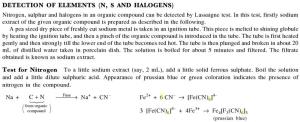
Prussian Blue structure
Tests for Halogens
Test for phenolic hydroxyl group
Tests for aldehydic, ketonic, carboxylic group
Tests for Primary amine group
Tests for secondary Amino group and Nitro group
Simplified Knowledge Management Classes
Must see http://zookeepersblog.wordpress.com/some-points-which-i-wish-all-my-new-prospective-students-know/
🙂
search for videos in http://www.skmclasses.kinja.com
you will get most videos. I say most because I do not upload all videos that I make. I have many more videos which are not in the net.
https://skmclasses.wordpress.com/accolades-and-appreciations-received-from-students-and-parents/
http://zookeepersblog.wordpress.com/iit-jee-3d-geometry-solutions/
http://zookeepersblog.wordpress.com/iit-jee-algebra/
http://zookeepersblog.wordpress.com/iit-jee-optics/
xxxxxxxxxxxxxxxxxxxxxx
xxxxxxxxxxxxxxxxxxxxxx
The following Videos are available for you ( As of Now ). These explain tricky Physics and Mathematics Numericals.
Eventually I will try to give Videos for full course here for you.
These covers PU ( Pre University courses, school / college ) courses, IIT JEE, AIEEE ( All India Engineering Entrance Examination ) , CET ( Combined Engineering Test ), AIPMT ( All India Pre Medical Test ), ISc ( Intermediate Science / Indian School Certificate Exam ), CBSE ( Central Board Secondary Exam ), Roorkey Joint Entrance Test Questions ( Discontinued since 2002 ), APhO ( Asian Physics Olympiad ), IPhO ( International Physics Olympiad ), IMO ( International Mathematics Olympiad ) , NSEP ( National Standard Exam in Physics ), RMO ( Regional Math Olympiad , India ), INMO ( Indian National Maths Olympiad ), Irodov Solutions, Prof. H C Verma ( Concepts of Physics ) Solutions etc.
( You can see the history of Indian Participation in various Olympiads at ->
http://zookeepersblog.wordpress.com/indian-participation-in-ipho-icho-ibo-and-astronomy-olympiad/ )
[ In each of these videos there is at-least 1 or more errors. Please tell me about those ]
search for videos in http://www.skmclasses.kinja.com
You should get to see all the Uploaded videos. Though we have many more study videos.
Thanks and Regards
Zookeeper ;-D Subhashish Chattopadhyay
[ I suggest you see the videos starting with 1- first then starting with 2- ….. in that sequence. ]
[ Tell your friends about this link if you liked the videos ]
In case of doubts or suggestions, Please send me email at mokshya@gmail.com
search for videos in http://www.skmclasses.kinja.com
Answers to -> Frequently Asked Questions ( FAQ ) [ commonly asked intelligent Questions 🙂 ]
–
1 ) How do I prepare for IIT ?
Ans : – See the videos made by me ( search for videos in http://www.skmclasses.kinja.com
Though we have many more which have not been uploaded ). While watching the videos, take notes and try to solve the problems yourself by pausing the video. Tell me if any calculation is wrong. See the videos with 1- first then 2- and so on. Write to IAPT Kothrud, Pune office to buy ( 150 Rs approx ) the book with previous papers of NSEP ( National Standard Exam in Physics – The 1st level ), INPhO ( Indian National Physics Olympiad – 2nd level ). Prepare with these and see how much you are scoring. You can guess your ALL INDIA rank easily from NSEP, and INPhO rank. Since 1998 the IIT JEE toppers have been mostly representing India in IPhO.
2 ) Which codec and Player do I use to see the videos ?
Ans : – You can use GOM Player, or VLC Player. You have to have good speakers with filters or good earphones with filters. We have checked mostly it is OK with these. ( If you are depending only on your embedded speakers of computer /screen / keyboard then there may be extra distortions. As these speakers are often not of good Quality. Also install latest KL Codecs ) In any case reduce the volume see the board, imagine sitting in the last bench and solving the problems of your own. See if your solution differs anywhere with the scribbles on the board.
3 ) Why are you giving these ( high Quality ) lecture for free ?
Ans : Well there are lot of good things free in this world. Linux, My-SQL, Open-Office ….. Go to sourceforge and get thousands of high quality software free along with source code. Yes all officially free …. Why do you think Richard Stallman, Zimmerman, ….. etc are considered Guru philosophers ?
In Punjab and Gurudwaras worldwide there are so many Langars where you get better food than Restaurants. … why ? Why do you have Dharmasalas and subsidized rest rooms near hospitals / Famous Temples / various places ? in Iftar party anyone can eat for free … why ?
I am teaching for 20 years now and observed most students can do much better if they have the self motivation to solve and practice. Cheap books are available in second hand bookstalls, where you get thousands of Numericals to solve ….. but most students will like to blow their time going and coming for tuition, travel time …. TV for hours and hours watching cricket / Tennis games, playing computer games …. My free lectures are not going to make much difference in spending of unnecessary money for coaching ….. I know very well , how much people enjoy .. , spending unnecessarily !!
Do you know that there are NO poor / needy students in Bangalore. Sometime back I had tried to teach for IIT JEE FREE. Discussed with a few NGOs and social service guys. Arranged rooms but got only 1 student. We had informed many people in many ways to inform students …. We did not get students who are ready to learn for free. So I am sure these lectures are NOT FREE. If anyone learns from these, s/he changes and that’s the gain / benefit. This change ( due to learning ) is very costly …. Most do not want to learn ………..
Do you want to make money working at home ?
see http://skmclasses.weebly.com/jobs.html
–
search for videos in http://www.skmclasses.kinja.com
you will get most videos. I say most because I do not upload all videos that I make. I have many more videos which are not in the net.
https://skmclasses.wordpress.com/accolades-and-appreciations-received-from-students-and-parents/
4 ) How can I get all your lectures ?
Ans : – Apart from my lectures there are approx 700 GB of PCM ( Phy, Chem, Math ) lectures. It takes approx 3 years of continuous download from scattered sources. I have ( 20,000 )Thousands of these. You can take ALL of them from me in an external 1 TB hard disk, instead of spending so much money and time again for downloading. These cover ( by Various Professors ) everything of Chemistry, Physics, Maths… Lot of this is from outside India … as foreigners have much wider heart than Indians ( as most of GNU / open source software have been developed by Non-Indians ). I observed the gaps in these videos, and thus I am solving IIT, APhO, Roorkey, IPhO Numericals. Videos made by me along with these videos gives a complete preparation.
Send me a mail at mokshya@gmail.com to contact me.
search for videos in http://www.skmclasses.kinja.com
You will get most videos. I say most because I do not upload all videos that I make. I have many more videos which are not in the net.
5 ) How do you get benefited out of this ?
Ans :- If anyone learns we all will have better people in this world. I will have better “ YOU “.
🙂
6 ) Why do you call yourself a Zookeeper ?
Ans :- This is very nicely explained at
http://zookeepersblog.wordpress.com/z00keeper-why-do-i-call-myself-a-zoookeeper/
7 ) Where do you stay ? Ans :- Presently I am in Bangalore.
8 ) If I need videos in a few topics can you make them for me ?
Ans :- Yes. You have to discuss the urgency with me. If I am convinced I will surely make these quickly for you and give you and ALL.
I teach both Maths and Physics. So anything in these 2 subjects are welcome.
🙂
9 ) Why did you write an article saying there are No Poor students ?
Ans :- There are lots of NGOs and others working for rural / poor children education at lower classes. While very less effort is on for std 9 till 12. Also see the answer in question number
( 3 ) above. In last 20 years of teaching I never met a Poor child who was seriously interested in ( higher ) studies. As I have a mind / thinking of a ” Physicist “, I go by ” Experimental Observation “. It is not about what is being said about poor in media / TV etc, or ” what it should be ” ( ? ) …. It is about what I see happening. Also to add ( confuse ? you more )….
You must be knowing that in several states over many years now girl students have better ( by marks as well as by pass percentage ) result in std 10 / Board Exams….. well but NEVER a girl student came FIRST in IIT JEE … why ? [ The best rank by a Girl student is mostly in 2 digits, very rarely in single digit ] ????? So ????
10 ) How much do I have to study to make it to IIT ?
Ans :- My experience of Teaching for IIT JEE since last 20 years, tells me, Total 200 hours per subject ( PCM ) is sufficient. If you see my Maths and Physics videos, each subject is more than 200 hours. So if someone sees all the videos diligently, takes notes and remembers, …… Done. 11 ) What is EAMCET ? Ans :- Engineering Agriculture and Medicine Common Entrance Test is conducted by JNT University Hyderabad on behalf of APSCHE. This examination is the gateway for entry into various professional courses offered in Government/Private Colleges in Andhra Pradesh.
12 ) In your videos are you covering other Exams apart from IIT ?
Ans : – Yes. See many videos made by solving problems of MPPET, Rajasthan / J&K CET, UPSEAT ( UPES Engineering Aptitude Test ), MHCET, BCECE ( Bihar Combined Entrance Competitive Examination Board ), WB JEE etc 13 ) What is SCRA ? Ans : – Special Class Railway Apprentice (SCRA) exam is conducted by Union Public Service Commission (UPSC) board, for about 10 seats.That translates into an astonishing ratio of 1 selection per 10,000 applicants. The SCRA scheme was started in 1927 by the British, to select a handful of most intelligent Indians to assist them in their Railway Operations, after training at their Railway’s largest workshop, i.e. Jamalpur Workshop, and for one year in United Kingdom. The selected candidates were required to appear in the Mechanical Engineering Degree Examination held by Engineering Council (London).
Thanks for your time. To become my friend in google+
( search me as mokshya@gmail.com and send friend request )
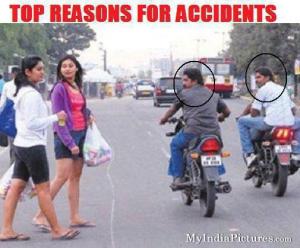
Read http://edge.org/responses/what-scientific-concept-would-improve-everybodys-cognitive-toolkit
🙂
The following video is a must see for full CO2 cycle, plates of Earth, Geological activities, stability of weather
http://www.youtube.com/watch?v=oIuoNtRBG4w
🙂
🙂
Article in Nature says CO2 increase is good for the trees
http://thegwpf.org/science-news/6086-co2-is-greening-the-planet-savannahs-soon-to-be-covered-by-forests.html
🙂
http://climaterealists.com/index.php?id=9752
BBC documentary Crescent and Cross shows the 1000 years of fight between Christians and Muslims. Millions have been killed in the name of Religion. To decided whose GOD is better, and which GOD to follow. The fight continues.
–
Summary of Women
http://www.youtube.com/watch?v=yIpmML49hMU
🙂
The Virus of Faith
http://www.youtube.com/watch?v=scarHc8RA0g
🙂
The God delusion
http://www.youtube.com/watch?v=LVr9bJ8Sctk
🙂
cassiopeia facts about evolution
http://www.youtube.com/watch?v=K7tQIB4UdiY
–
Intermediate Fossil records shown and explained nicely Fossils, Genes, and Embryos http://www.youtube.com/watch?v=fdpMrE7BdHQ
The Rise Of Narcissism In Women
http://www.youtube.com/watch?v=wZHKCbHGlS0
🙂
13 type of women whom you should never court
http://timesofindia.indiatimes.com/life-style/relationships/man-woman/13-Women-you-should-never-court/articleshow/14637014.cms
🙂
Media teaching Misandry in India http://www.youtube.com/watch?v=-M2txSbOPIo
Summary of problems with women
http://problemwithwomentoday.blogspot.in/2009/12/problem-with-women-today-what-in-hell.html
–
http://www.youtube.com/watch?v=4V62rjMNL7A
🙂
Eyeopener men ? women only exists
http://www.youtube.com/watch?v=6ZAuqkqxk9A
🙂
Most unfortunate for men
http://www.youtube.com/watch?v=73fGqUwmOPg
🙂
🙂
Each of you is an Activist in some way or other. You are trying to propagate those thoughts, ideas that you feel concerned / excited about.
–
Did you analyze your effectiveness ?
http://www.youtube.com/watch?v=61qn7S9NCOs Culturomics can help you 😀
🙂
–
–
see how biased women are. Experimental proof. Women are happy when they see another woman is beating a man ( see how women misbehave with men )
🙂
http://www.youtube.com/watch?v=LlFAd4YdQks
–
see detailed statistics at
http://www.youtube.com/watch?v=5lHmCN3MBMI
An eye opener in Misandry
http://www.youtube.com/watch?v=YiTaDS_X6CU
My sincere advice would be to be EXTREMELY careful ( and preferably away ) of girls. As girls age; statistically certain behavior in them has been observed. Most Male can NOT manage those behaviors… Domestic violence, divorce etc are rising very fast. Almost in all cases boys / males are HUGE loosers. Be extremely choosy ( and think from several angles ) before even talking to a girl.
🙂
http://zookeepersblog.wordpress.com/save-the-male/
🙂
How women manipulate men
http://www.angryharry.com/esWomenManipulateMen.htm
Gender Biased Laws in India
http://zookeepersblog.wordpress.com/biased-laws/
🙂
Violence against Men
http://www.youtube.com/watch?v=MLS2E-rRynE
🙂
🙂
How women manipulate men http://www.angryharry.com/esWomenManipulateMen.htm
Gender Biased Laws in India http://zookeepersblog.wordpress.com/biased-laws/
🙂
Violence against Men http://www.youtube.com/watch?v=MLS2E-rRynE
🙂
Only men are victimised http://www.youtube.com/watch?v=4JA4EPRbWhQ
Men are BETTER than women http://www.menarebetterthanwomen.com/
🙂
see http://www.youtube.com/watch?&v=T0xoKiH8JJM#!
🙂
Male Psychology http://www.youtube.com/watch?v=uwxgavf2xWE
Women are more violent than men http://www.independent.co.uk/news/uk/home-news/women-are-more-violent-says-study-622388.html
Misandry in Media http://www.youtube.com/watch?v=j7U0r7vIrgM
🙂
In the year 2010, 168 men ended their lives everyday ( on average ). More husbands committed suicide than wives.
🙂
http://www.rediff.com/news/report/ncrb-stats-show-more-married-men-committing-suicide/20111028.htm
It is EXTREMELY unfortunate that media projects men as fools, women as superiors, Husbands as servants, and replaceable morons. In ad after ad worldwide from so many companies, similar msg to disintegrate the world is being bombarded. It is highly unacceptable misandry
🙂
http://www.youtube.com/watch?v=oq14WHkFq30
It is NOT at all funny that media shows violence against MEN. Some advertisers are trying to create a new ” Socially acceptable culture ” of slapping Men ( by modern city women ). We ( all men ) take objection to these advertisements.
We oppose this Misandry bad culture. Please share to increase awareness against Men bashing
🙂
http://www.youtube.com/watch?v=D8ecN2rh0uU
Think what are you doing … why are you doing ? http://www.youtube.com/watch?v=qp0HIF3SfI4
Every Man must know this … http://www.youtube.com/watch?v=cIFmQHJEG1M
🙂
Manginas, White Knights, & Other Chivalrous Dogs http://www.youtube.com/watch?v=oXQDtBT70B8
! !
!
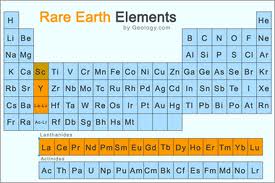
!
: ****__********__***
…….. (””(`-“’´´-´)””)
……….)…..–…….–….(
………/…..(6…_…6)….\
………\……..(..0..)….;../
……__.`.-._..’=’…_.-.`.__
…./……’###.,.–.,.###.’…\
….\__))####’#’###(((__/
……##### u r #####
……..### SWEET. ###
……/….#########…\
..__\…..\..######/…../
(.(.(____)….`.#.´..(____).).)
🙂
🙂
What are Silicones ?
–
Simplified Knowledge Management Classes
Must see http://zookeepersblog.wordpress.com/some-points-which-i-wish-all-my-new-prospective-students-know/
🙂
Do you want to make money working at home ?
see http://skmclasses.weebly.com/jobs.html
–
search for videos in http://www.skmclasses.kinja.com
you will get most videos. I say most because I do not upload all videos that I make. I have many more videos which are not in the net.
https://skmclasses.wordpress.com/accolades-and-appreciations-received-from-students-and-parents/
http://skmclasses4olympiads.wordpress.com/
http://iitjee.wix.com/skmclasses
http://skmclasses4olympiads.wordpress.com/
https://skmclasses.wordpress.com/cbse-standard-12-chemistry-polymers-chapter-15-ncert/
http://skmclasses4olympiads.wordpress.com/
http://iitjee.wix.com/skmclasses
https://skmclasses.wordpress.com/complex-number-for-iit-jee-cbse-from-skm-classes-south-bangalore/
https://skmclasses.wordpress.com/complex-number-for-iit-jee-cbse-from-skm-classes-south-bangalore/
http://iitjee.wix.com/skmclasses
https://skmclasses.wordpress.com/circular-motion-problems-for-iit-jee-cbse-from-skm-classes/
http://skmclasses4olympiads.wordpress.com/
https://skmclasses.wordpress.com/combinatorics-permutation-combination-for-iit-jee-cbse/
xxxxxxxxxxxxxxxxxxxxxx
xxxxxxxxxxxxxxxxxxxxxx
The following Videos are available for you ( As of Now ). These explain tricky Physics and Mathematics Numericals.
Eventually I will try to give Videos for full course here for you.
These covers PU ( Pre University courses, school / college ) courses, IIT JEE, AIEEE ( All India Engineering Entrance Examination ) , CET ( Combined Engineering Test ), AIPMT ( All India Pre Medical Test ), ISc ( Intermediate Science / Indian School Certificate Exam ), CBSE ( Central Board Secondary Exam ), Roorkey Joint Entrance Test Questions ( Discontinued since 2002 ), APhO ( Asian Physics Olympiad ), IPhO ( International Physics Olympiad ), IMO ( International Mathematics Olympiad ) , NSEP ( National Standard Exam in Physics ), RMO ( Regional Math Olympiad , India ), INMO ( Indian National Maths Olympiad ), Irodov Solutions, Prof. H C Verma ( Concepts of Physics ) Solutions etc.
( You can see the history of Indian Participation in various Olympiads at ->
http://zookeepersblog.wordpress.com/indian-participation-in-ipho-icho-ibo-and-astronomy-olympiad/ )
[ In each of these videos there is at-least 1 or more errors. Please tell me about those ]
search for videos in http://www.skmclasses.kinja.com
You should get to see all the Uploaded videos. Though we have many more study videos.
Thanks and Regards
Zookeeper ;-D Subhashish Chattopadhyay
[ I suggest you see the videos starting with 1- first then starting with 2- ….. in that sequence. ]
[ Tell your friends about this link if you liked the videos ]
In case of doubts or suggestions, Please send me email at mokshya@gmail.com
search for videos in http://www.skmclasses.kinja.com
Answers to -> Frequently Asked Questions ( FAQ ) [ commonly asked intelligent Questions 🙂 ]
1 ) How do I prepare for IIT ?
Ans : – See the videos made by me ( search for videos in http://www.skmclasses.kinja.com
Though we have many more which have not been uploaded ). While watching the videos, take notes and try to solve the problems yourself by pausing the video. Tell me if any calculation is wrong. See the videos with 1- first then 2- and so on. Write to IAPT Kothrud, Pune office to buy ( 150 Rs approx ) the book with previous papers of NSEP ( National Standard Exam in Physics – The 1st level ), INPhO ( Indian National Physics Olympiad – 2nd level ). Prepare with these and see how much you are scoring. You can guess your ALL INDIA rank easily from NSEP, and INPhO rank. Since 1998 the IIT JEE toppers have been mostly representing India in IPhO.
2 ) Which codec and Player do I use to see the videos ?
Ans : – You can use GOM Player, or VLC Player. You have to have good speakers with filters or good earphones with filters. We have checked mostly it is OK with these. ( If you are depending only on your embedded speakers of computer /screen / keyboard then there may be extra distortions. As these speakers are often not of good Quality. Also install latest KL Codecs ) In any case reduce the volume see the board, imagine sitting in the last bench and solving the problems of your own. See if your solution differs anywhere with the scribbles on the board.
3 ) Why are you giving these ( high Quality ) lecture for free ?
Ans : Well there are lot of good things free in this world. Linux, My-SQL, Open-Office ….. Go to sourceforge and get thousands of high quality software free along with source code. Yes all officially free …. Why do you think Richard Stallman, Zimmerman, ….. etc are considered Guru philosophers ? In Punjab and Gurudwaras worldwide there are so many Langars where you get better food than Restaurants. ….. why ? Why do you have Dharmasalas and subsidized rest rooms near hospitals / Famous Temples / various places ? in Iftar party anyone can eat for free …. why ?
I am teaching since 1989 I have observed most students can do much better if they have the self motivation to solve and practice. Cheap books are available in second hand bookstalls, where you get thousands of Numericals to solve ….. but most students will like to blow their time going and coming for tuition, travel time …. TV for hours and hours watching cricket / Tennis games, playing computer games …. My free lectures are not going to make much difference in spending of unnecessary money for coaching ….. I know very well , how much people enjoy …. ! spending unnecessarily !!
–
Do you know that there are NO poor / needy students in Bangalore.
–
Sometime back I had tried to teach for IIT JEE FREE. Discussed with a few NGOs and social service guys. Arranged rooms but got only 1 student. We had informed many people in many ways to inform students …. We did not get students who are ready to learn for free. So I am sure these lectures are NOT FREE. If anyone learns from these, s/he changes and that’s the gain / benefit. This change ( due to learning ) is very costly …. Most do not want to learn ………..
search for videos in http://www.skmclasses.kinja.com
You will get most videos. I say most because I do not upload all videos that I make. I have many more videos which are not in the net.
🙂
4 ) How can I get all your lectures ?
Ans : – Apart from my lectures there are approx 700 GB of PCM ( Phy, Chem, Math ) lectures. It takes approx 3 years of continuous download from scattered sources. I have ( 20,000 )Thousands of these. You can take ALL of them from me in an external 1 TB hard disk, instead of spending so much money and time again for downloading. These cover ( by Various Professors ) everything of Chemistry, Physics, Maths… Lot of this is from outside India … as foreigners have much wider heart than Indians ( as most of GNU / open source software have been developed by Non-Indians ). I observed the gaps in these videos, and thus I am solving IIT, APhO, Roorkey, IPhO Numericals. Videos made by me along with these videos gives a complete preparation.
Send me a mail at mokshya@gmail.com to contact me.
search for videos in http://www.skmclasses.kinja.com
You will get most videos. I say most because I do not upload all videos that I make. I have many more videos which are not in the net.
🙂
5 ) How do you get benefited out of this ?
Ans :- If anyone learns we all will have better people in this world. I will have better “ YOU “.
🙂
6 ) Why do you call yourself a Zookeeper ?
Ans :- This is very nicely explained at http://zookeepersblog.wordpress.com/z00keeper-why-do-i-call-myself-a-zoookeeper/
🙂
7 ) Where do you stay ?
Ans :- Presently I am in Bangalore.
🙂
8 ) If I need videos in a few topics can you make them for me ?
Ans :- We actively answers doubts at doubtpoint.
see http://skmclasses.weebly.com/doubtpoint.html
In case you appreciate our time and efforts involved in answering complicated Questions, then get Quality answers at doubtpoint.
🙂
9 ) Why did you write an article saying there are No Poor students ?
Ans :- There are lots of NGOs and others working for rural / poor children education at lower classes. While very less effort is on for std 9 till 12. Also see the answer in question number ( 3 ) above. In more than 2 decades of teaching I never met a Poor child who was seriously interested in ( higher ) studies. As I have a mind / thinking of a ” Physicist “, I go by ” Experimental Observation “.
It is not about what is being said about poor in media / TV etc, or ” what it should be ” ( ? ) …. It is about what I see happening. Also to add ( confuse ? you more )…. You must be knowing that in several states over many years now girl students have better ( by marks as well as by pass percentage ) result in std 10 / Board Exams….. well but NEVER a girl student came FIRST in IIT JEE … why ? [ The best rank by a Girl student is mostly in 2 digits, very rarely in single digit ] ????? So ????
🙂
10 ) How much do I have to study to make it to IIT ?
Ans :- My experience of Teaching for IIT JEE since 1989, tells me, Total 200 hours per subject ( PCM ) is sufficient. If you see my Maths and Physics videos, each subject is more than 200 hours. So if someone sees all the videos diligently, takes notes and remembers, …… Done.
🙂
11 ) What is EAMCET ?
Ans :- Engineering Agriculture and Medicine Common Entrance Test is conducted by JNT University Hyderabad on behalf of APSCHE. This examination is the gateway for entry into various professional courses offered in Government/Private Colleges in Andhra Pradesh.
12 ) In your videos are you covering other Exams apart from IIT ?
Ans : – Yes. See many videos made by solving problems of MPPET, Rajasthan / J&K CET, UPSEAT ( UPES Engineering Aptitude Test ), MHCET, BCECE ( Bihar Combined Entrance Competitive Examination Board ), WB JEE etc
🙂
13 ) What is SCRA ?
Ans : – Special Class Railway Apprentice (SCRA) exam is conducted by Union Public Service Commission (UPSC) board, for about 10 seats.That translates into an astonishing ratio of 1 selection per 10,000 applicants. The SCRA scheme was started in 1927 by the British, to select a handful of most intelligent Indians to assist them in their Railway Operations, after training at their Railway’s largest workshop, i.e. Jamalpur Workshop, and for one year in United Kingdom. The selected candidates were required to appear in the Mechanical Engineering Degree Examination held by Engineering Council (London).
Thanks for your time. To become my friend in google+ ( search me as mokshya@gmail.com and send friend request )
Read http://edge.org/responses/what-scientific-concept-would-improve-everybodys-cognitive-toolkit
🙂
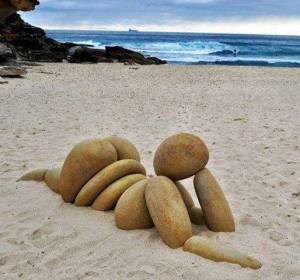
The following video is a must see for full CO2 cycle, plates of Earth, Geological activities, stability of weather
http://www.youtube.com/watch?v=oIuoNtRBG4w
🙂
Article in Nature says CO2 increase is good for the trees
http://thegwpf.org/science-news/6086-co2-is-greening-the-planet-savannahs-soon-to-be-covered-by-forests.html
🙂
http://climaterealists.com/index.php?id=9752
BBC documentary Crescent and Cross shows the 1000 years of fight between Christians and Muslims. Millions have been killed in the name of Religion. To decided whose GOD is better, and which GOD to follow. The fight continues.
Summary of Women
🙂
The Virus of Faith
http://www.youtube.com/watch?v=scarHc8RA0g
🙂
The God delusion
http://www.youtube.com/watch?v=LVr9bJ8Sctk
🙂
cassiopeia facts about evolution
–
Intermediate Fossil records shown and explained nicely Fossils, Genes, and Embryos http://www.youtube.com/watch?v=fdpMrE7BdHQ
The Rise Of Narcissism In Women
http://www.youtube.com/watch?v=wZHKCbHGlS0
🙂
13 type of women whom you should never court
http://timesofindia.indiatimes.com/life-style/relationships/man-woman/13-Women-you-should-never-court/articleshow/14637014.cms
🙂

Media teaching Misandry in India http://www.youtube.com/watch?v=-M2txSbOPIo
Summary of problems with women
http://problemwithwomentoday.blogspot.in/2009/12/problem-with-women-today-what-in-hell.html
🙂
Eyeopener men ? women only exists
http://www.youtube.com/watch?v=6ZAuqkqxk9A
🙂
Most unfortunate for men
http://www.youtube.com/watch?v=73fGqUwmOPg
Miracles for Sale
http://www.youtube.com/watch?v=iuP5uOI7Xwc
🙂
Each of you is an Activist in some way or other. You are trying to propagate those thoughts, ideas that you feel concerned / excited about.
–
Did you analyze your effectiveness ?
http://www.youtube.com/watch?v=61qn7S9NCOs Culturomics can help you 😀
🙂
Why some temples become ” FAMOUS ” ? How you can be manipulated ? Luck for others ?
–
see how biased women are. Experimental proof. Women are happy when they see another woman is beating a man ( see how women misbehave with men )
🙂
http://www.youtube.com/watch?v=LlFAd4YdQks
–
see detailed statistics at
http://www.youtube.com/watch?v=5lHmCN3MBMI
An eye opener in Misandry
http://www.youtube.com/watch?v=YiTaDS_X6CU
My sincere advice would be to be EXTREMELY careful ( and preferably away ) of girls. As girls age; statistically certain behavior in them has been observed. Most Male can NOT manage those behaviors… Domestic violence, divorce etc are rising very fast. Almost in all cases boys / males are HUGE loosers. Be extremely choosy ( and think from several angles ) before even talking to a girl.
🙂
http://zookeepersblog.wordpress.com/save-the-male/
🙂
How women manipulate men
http://www.angryharry.com/esWomenManipulateMen.htm
Gender Biased Laws in India
http://zookeepersblog.wordpress.com/biased-laws/
🙂
Only men are victimised
http://www.youtube.com/watch?v=4JA4EPRbWhQ
Men are BETTER than women
http://www.menarebetterthanwomen.com/
🙂
see http://www.youtube.com/watch?&v=T0xoKiH8JJM#!
🙂
Male Psychology http://www.youtube.com/watch?v=uwxgavf2xWE
Women are more violent than men
http://www.independent.co.uk/news/uk/home-news/women-are-more-violent-says-study-622388.html
🙂
In the year 2010, 168 men ended their lives everyday ( on average ). More husbands committed suicide than wives.
🙂
http://www.rediff.com/news/report/ncrb-stats-show-more-married-men-committing-suicide/20111028.htm
It is EXTREMELY unfortunate that media projects men as fools, women as superiors, Husbands as servants, and replaceable morons. In ad after ad worldwide from so many companies, similar msg to disintegrate the world is being bombarded. It is highly unacceptable misandry
🙂
http://www.youtube.com/watch?v=oq14WHkFq30
It is NOT at all funny that media shows violence against MEN. Some advertisers are trying to create a new ” Socially acceptable culture ” of slapping Men ( by modern city women ). We ( all men ) take objection to these advertisements.
We oppose this Misandry bad culture. Please share to increase awareness against Men bashing
🙂
http://www.youtube.com/watch?v=D8ecN2rh0uU
Are you a nice person ? Just shout Wooooooooo , Eyye Eyye and enjoy to see someone in trouble ….
–
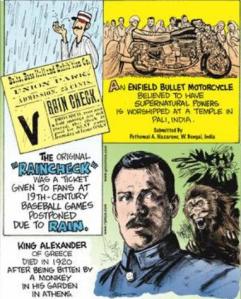
Extension of Milgram Experiments – In a Mob also people become cruel step by step –
🙂
http://www.youtube.com/watch?v=scOJqyiYVtk
Think what are you doing … why are you doing ?
http://www.youtube.com/watch?v=qp0HIF3SfI4
Every Man must know this …
http://www.youtube.com/watch?v=cIFmQHJEG1M
🙂
Manginas, White Knights, & Other Chivalrous Dogs
http://www.youtube.com/watch?v=oXQDtBT70B8
!
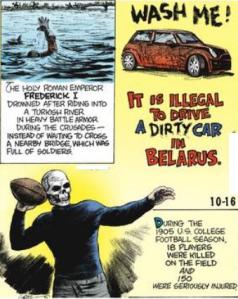
!
: ****__********__***
…….. (””(`-“’´´-´)””)
……….)…..–…….–….(
………/…..(6…_…6)….\
………\……..(..0..)….;../
……__.`.-._..’=’…_.-.`.__
…./……’###.,.–.,.###.’…\
….\__))####’#’###(((__/
……##### u r #####
……..### SWEET. ###
……/….#########…\
..__\…..\..######/…../
(.(.(____)….`.#.´..(____).).)
key words
_________________________________________________________________________
IIT, JEE,IITJEE, Home Tuition available small groups students IB International Baccalaureate Programme IGCSE International General Certificate Secondary Education ISc Indian School Certificate ICSE Indian Certificate of Secondary Education CBSE Central Board of Secondary Education The Schools offering IB International Baccalaureate Programme Bangalore International School Geddalahalli Hennur Bagalur Road Kothanur Post Bengaluru India 560 077 Stonehill International School, 1st Floor, Embassy Point #150, Infantry Road Bengaluru 560 001 Stonehill International School 259/333/334/335, Tarahunise Post Jala Hobli, Bengaluru North 562157 Candor International School Begur – Koppa Road, Hullahalli, Off Bannerghatta Road, Near Electronic City, Bangalore – 560105 Greenwood High International School Bengaluru No.8-14, Chickkawadayarapura, Near Heggondahalli, Gunjur Post, Varthur Sarjapur Road, Bangalore-560087 Sarla Birla Academy Bannerghatta, Bangalore, Canadian International School, Yelahanka, Bangalore Indus International School, Billapura Cross, Sarjapur Bangalore IGCSE International General Certificate of Secondary Education ) Schools of Bangalore Greenwood high international school, No.8-14, Chickkawadayarapura Gunjur Post, Varthur Sarjapur Road, Bangalore Oakridge International School, Oakridge International School, Sarjapur Road, Bangalore Edify School Electronic City 105 34th Main 23rd Cross Sector-A Surya Nagar Phase-2, Anekal-Chandapura Main Road, Electronic City Bangalore Orchids The International School Jalahalli Nagarbavi Mysore Road Sarjapur Road BTM, Bangalore Trio World School, #3/5, Kodigehalli Main Road Sahakar Nagar, Bangalore Ekya School, No.16, 6TH B Main J P Nagar 3RD Phase, Bangalore Vibgyor High school, 58/1, Thubarahallli Whitefield Road, Bangalore Vidyashilp Academy, 42/3, Shivanahalli Yelahanka, Bangalore, PRIMUS Public School, Post Box No. 21, Chikanayakanahalli Village, Off. Sarjapur Road Bangalore Jain International Residential School Jakkasandra Post, Kanakapura Taluk Bangalore Ryan International School, Kundanahalli, M. H. Colony, AECS Layout, Kundalahalli Gate,Bhd Hindustan Lever Ltd, Marathahalli Colony, Bangalore Ebenezer International School, Singena Agrahara Road, Via Hosur Road / A.P.M.C. Yard, Bangalore Mallya Aditi International School, Yelahanka Bangalore India International school 26/1,Chikkabellandur, Carmel Ram Post, Bangalore Ryan International School, Yelahanka, Vederapura Village, Gentiganahalli Road, Training Centre, Yelahanka Bangalore Indus International School, Billapura Cross Sarjapur, Bangalore The International School Bangalore (TISB), NAFL Valley Whitefield – Sarjapur Road, Bangalore Treamis World School, Hulimangala Post Bangalore Ryan International School, Bannerghatta road, Opp. Confident Cascade Bannergatta Main Road Bangalore International School, Geddalahalli Hennur Bagalur Road, Kothanur Post Bangalore Sarla Birla Academy Bannerghatta Jigni Road Bangalore Inventure Academy Whitefield – Sarjapur Road Bangalore Prakriya, # 70, Chikkanayakanahalli Road off Doddakannelli Sarjapur Road, Bangalore Buddhi School, 57, 3rd Main, 4th Cross RMV 2nd Stage, H.I.G Colony, Bangalore B.G.S. International Residential School Nithyananda Nagar, Kumbalagudu, Gollahalli Kengeri, Bangalore Solutions, India, IPhO, APhO, IMO, RMO, INMO, through, lectures, problems numericals Zookeeper, Subhashish, Chattopadhyay, Projectile, Latent, Heat Thermodynamics std 11 12 ISc Calculus BE BTech Differentiation Integration Mechanics Surface Tension Viscosity Accelerating Frame velocity wedge mass pulley Moment Inertia Roorkey Joint Entrance Exam CET AIEEE Irodov HCV Verma South Bangalore Intermediate Algebra Trigonometry Sexy Free Coaching study material preparation Olympiad Friction sin Modelling cos Potential tan cot Gravitation Electrostatics sec Field cosec Ellipse Parabola Hyperbola inverse string Tuition Kinetic Theory Gases Isothermal Adiabatic Isochoric Isobaric Processes Root Mean Square Differential Equation Soomrit Specific Cp Cv PV Diagram Bending Stress Strain Geostationary Satellite Entropy Coefficient Linear Expansion Alpha Beta Gamma Pendulum Conductivity Latent ice water Hydrometer Glass tube series Parallel travelling standing wave Sound Radiation stefan Boltzmann law Newton cooling cylinder Harmonic Overtone Resonance Sonometer Kunds Beat Frequency vibration tuning Fork Swimmer Young Bulk Modulus welded chamber not similar dissimilar MIT Caltech Yale pipe Magnetic Tesla Lenz LvB Vijaya Bank Enclave Apartments Bannerghatta Road Behind IIM Jayanagar J-P-Nagar Buoyant Buoyancy Rho efflux Bernoullis rare Poiseuilles Torricellis critical Terminal Reynolds Poise coalescing Laplace Ventury Hoop orifice Siphon Foucault stretched compression ball scale constant length shear poisson Ratio clock loosing time tvanausdal1 vkiledj Density Partial Pressure Humidity Leak SmartlearnwebTV Space Puncture Photon RC RLC LR Circuit Electrical Capacitor Inductance Linked Flux Wheatstone Bridge Freelanceteach Troutons Rule Van Arkel Method Overview Metallurgy Roasting Calcination Froth Floatation Purification Projected Area PET Kerala MPPET Delta Star conversion Internal Resistance Battery Trick Questions Infinite Ladder Quadratic Cubic Quartic Quintic Orissa NSEP ckt eqn mesh Folding Lenzs J&K Karnataka RMS instantaneous BCECE Maharastra MHCET RPET stepup stepdown transformer Bilekahalli UPSEAT shunt galvanometer susceptibility oscillating magnetometer pole strength Bihar Rajasthan Uttarpradesh Punjab Hariana TN Tamilnadu Andhra WB west Bengal Vacuum Diode Triode Rectifier Truth Table Thermionic emission, Radioactivity Half Life Langmiur, Child Law FCC BCC Cube Optics Lens Mirror Focus Focal Concave Convex Lux Phot Lumen Double slit Complex Integral coordinate Geometry compounds, Biochemistry, Plastic, Organic Chemistry Physical Analytical Inorganic Metallurgy, Biotechnology, Polymer Science, Rubber Technology Geology, Pharma, Veterinary Science,Food Technology, Cryogenics, Ceramics acid species IITJEE SKMClasses.weebly.com proton donor activation energy minimum energy IITJEE SKMClasses.weebly.com reaction breaking bonds addition polymer very long molecular chain formed repeated addition reactions many unsaturated alkene molecules monomers addition polymerisation process unsaturated alkene molecules monomers add growing polymer chain one timeIITJEE SKMClasses.weebly.com long saturated molecular chain addition polymer addition reaction reaction IITJEE SKMClasses.weebly.com reactant added IITJEE SKMClasses.weebly.com unsaturated molecule saturated molecule adsorption process IITJEE SKMClasses.weebly.com occurs gas, liquid solute surface solid rarely liquid alicyclic hydrocarbon hydrocarbon IITJEE SKMClasses.weebly.com carbon atoms joined together ring structure aliphatic hydrocarbon hydrocarbon IITJEE SKMClasses.weebly.com carbon atoms joined together straight branched chains alkali type base IITJEE SKMClasses.weebly.com dissolves water forming hydroxide ions OH (aq) ions alkanes homologous series IITJEE SKMClasses.weebly.com general formula C alkyl group alkane IITJEE SKMClasses.weebly.com hydrogen atom removed CH alkyl groups IITJEE SKMClasses.weebly.com IITJEE skmclasses.weebly.com ‘R’ amount substance quantity whose unit mole Chemists amount substance IITJEE skmclasses.weebly.com IITJEE counting atoms anhydrous substance IITJEE SKMClasses.weebly.com contains water molecules anion negatively charged ion atom economy atomic orbital region within atom hold two electrons IITJEE SKMClasses.weebly.com opposite spins atomic proton number number protons nucleus atom 100 products masses molecular sum product desired mass molecular economy atom Chemistry average bond enthalpy average enthalpy change IITJEE SKMClasses.weebly.com place IITJEE SKMClasses.weebly.com breaking homolytic fission 1 molIITJEE SKMClasses.weebly.com type bond molecules gaseous species Avogadro constant,isotope number atoms mole carbon base species IITJEE SKMClasses.weebly.com proton acceptor biodegradable material substance IITJEE SKMClasses.weebly.com broken IITJEE SKMClasses.weebly.com naturally environment living organisms Boltzmann distribution distribution energies molecules particular temperature IITJEE skmclasses.weebly.com graph bond enthalpy enthalpy change IITJEE SKMClasses.weebly.com IITJEE SKMClasses.weebly.com breaking homolytic fission 1 mol bond molecules gaseous species carbanion organic ion IITJEE SKMClasses.weebly.com carbon atom hIITJEE skmclasses.weebly.com negative charge carbocation organic ion IITJEE SKMClasses.weebly.com carbon atom hIITJEE skmclasses.weebly.com positive charge catalyst substance IITJEE SKMClasses.weebly.com increases rate chemical reaction process cation positively charged ion cis trans isomerism special type isomerism IITJEE SKMClasses.weebly.com non hydrogen group skmclasses.weebly.com hydrogen atom C C=C double bond cis isomer ( Z isomer) IITJEE skmclasses.weebly.com H atoms on IITJEE SKMClasses.weebly.com carbon same side trans isomer E isomer H atoms carbon different bond compound substance formed IITJEE SKMClasses.weebly.com two IITJEE SKMClasses.weebly.com chemically bonded elements fixed ratio, usually chemical formula concentration amount solute mol IITJEE SKMClasses.weebly.com 1 dm 3 1000 cm solution coordinate bond shared pair electrons provided one bonding atoms called dative covalent bond covalent bond bond formed shared pair electrons cracking breaking long chained saturated hydrocarbonsIITJEE SKMClasses.weebly.com mixture shorter chained alkanesalkenes curly arrow symbol IITJEE SKMClasses.weebly.com reaction mechanisms IITJEE SKMClasses.weebly.com show movement electron Coaching ICWA Coaching CFA Coaching CFP Coaching CMAT Coaching School Tuitions CBSE School Tuitions Home Tuitions 9th STD Tuitions PUC Coaching 10th Std Tuitions College Tuitions Maths Tuitions Engineering Tuitions Accounts & Finance Tuitions MBA & BBA Coaching Microbiology & Biotech Tuitions Study Abroad GRE & SAT Coaching GMAT Coaching IELTS/TOEFL Coaching PTE Coaching proteins protonation pyridines pyrroles quinones quinolines radical reaction radicals rearrangement receptors reduction regioselectivity retro reaction rhodium ring closure ring contraction ring expansion ring opening ruthenium samarium scandium Schiff bases selenium self-assembly silicon sodium solid-phase synthesis solvent effects spectroscopy sphingolipids spiro compounds stereoselective synthesis stereoselectivity steric hindrance steroids Stille reaction substituent effects sulfates sulfonamides sulfones sulfoxides sulfur supported catalysis supramolecular tandem reaction tautomerism terpenoids thioacetals thiols tin titanium total synthesis transesterification transition metals transition states tungsten Umpolung vinylidene complexes vitamins Wacker reaction Wittig reaction ylides zeolites zinc BRST Quantization Effective field theories Field Theories Higher Dimensions Field Theories Lower Dimensions Large Extra Dimensions Lattice Quantum Field Theory Nonperturbative Effects Renormalization Group Renormalization Regularization skmclasses.weebly.com Renormalons Sigma Models Solitons Monopoles skmclasses.weebly.com Instantons Supersymmetric gauge theory Topological Field Theories 1/N Expansion Anyons Chern-Simons Theories Confinement Duality Gauge Field Theories Lattice Gauge Field Theories Scattering Amplitudes Spontaneous Symmetry Breaking Strong Coupling Expansion Topological States Matter Wilson ‘t Hooft skmclasses.weebly.comPolyakov loops Anomalies Field skmclasses.weebly.comString Theories BRST Symmetry Conformal skmclasses.weebly.com W Symmetry Discrete skmclasses.weebly.comFinite Symmetries Gauge Symmetry Global Symmetries Higher Spin Symmetry Space-Time Symmetries AdS-CFT Correspondence Black Holes String Theory Bosonic Strings Brane Dynamics Gauge Theories Conformal Field Models String Theory D-branes dS vacua string theory F-Theory Flux compactifications Gauge-gravity correspondence Holography skmclasses.weebly.comcondensed matter physics (AdS CMT) Holography skmclasses.weebly.comquark-gluon plasmas Intersecting branes models Long strings M(atrix) Theories M-Theory p-branes Penrose limit skmclasses.weebly.compp-wave background String Duality String Field Theory String theory skmclasses.weebly.comcosmic string Superstring Vacua Superstrings skmclasses.weebly.comHeterotic Strings Tachyon Condensation Topological Strings 2D Gravity Black Holes Classical Theories Gravity Higher Spin Gravity Lattice Models Gravity Models Quantum Gravity Spacetime Singularities Extended Supersymmetry Supergravity Models Superspaces Supersymmetric Effective Theories Supersymmetry skmclasses.weebly.com Duality Supersymmetry Breaking Differential skmclasses.weebly.comAlgebraic Geometry Integrable Hierarchies Non-Commutative Geometry Quantum Groups Statistical Methods Stochastic Processes Cosmology Theories beyond SM Solar skmclasses.weebly.comAtmospheric Neutrinos Thermal Field Theory Be Ansatz Boundary Quantum Field Theory Exact S-Matrix Quantum Dissipative Systems Random Systems B-Physics Beyond Standard Model Compactification skmclasses.weebly.com String Models CP violation Electromagnetic Processes skmclasses.weebly.com Properties GUT Heavy Quark Higgs Kaon LEP HERA skmclasses.weebly.com SLC Neutrino Physics Quark Masses skmclasses.weebly.comSM Parameters Rare Decays Standard Model Supersymmetric Standard Model Technicolor skmclasses.weebly.com Composite Models Chiral Lagrangians Deep Inelastic Scattering Higher Twist Effects Lattice QCD Parton Model Phase Diagram QCD Phenomenological Models QCD Quark-Gluon Plasma Resummation Sum Rules Aim Global Education Koramangala Computer Networking Training Cloud Computing Training JBOSS Training Juniper Certification Training L2 & L3 Protocol Training MCTS Training Engineering design Training CAD & CAM Training MATLAB Training PLC Training SCADA Training VLSI Design Multimedia & Design Training 2D Animation Training 3D Animation Training 4D Animation Training CorelDRAW Training VFX Training Web Technologies Training ASP.Net Training JQuery pair breaking formation covalent bond dative covalent shared pair electrons IITJEE SKMClasses.weebly.com hIITJEE skmclasses.weebly.com been provided one bonding atoms only IITJEE SKMClasses.weebly.com called coordinate bond dehydration elimination reaction IITJEE SKMClasses.weebly.com water removed saturated molecule IITJEE SKMClasses.weebly.com IITJEE SKMClasses.weebly.com unsaturated molecule delocalised Electrons IITJEE SKMClasses.weebly.com shared IITJEE SKMClasses.weebly.com two atoms displacement reaction reaction IITJEE SKMClasses.weebly.com reactive element displaces less reactive element IITJEE SKMClasses.weebly.com aqueous solution latter’s ions displayed formula showing relative positioning atoms molecule skmclasses.weebly.com bonds IITJEE SKMClasses.weebly.com disproportionation oxidation skmclasses.weebly.com reduction element redox reaction dynamic equilibrium equilibrium IITJEE SKMClasses.weebly.com exists closed system IITJEE SKMClasses.weebly.com rate forward reaction equal IITJEE SKMClasses.weebly.com rate reverse reaction E/Z isomerism type stereoisomerism IITJEE SKMClasses.weebly.com different groups attached IITJEE SKMClasses.weebly.com carbon C=C double bond arranged differently space restricted rotation C=C bond electron configuration arrangement electrons IITJEE SKMClasses.weebly.com atom electronegativity measure attraction bonded atom skmclasses.weebly.com pair electrons covalent bond electron shielding repulsion IITJEE SKMClasses.weebly.com electrons different inner shells Shielding reduces net attractive force IITJEE SKMClasses.weebly.com positive nucleus outer shell electrons electrophile atom group atoms IITJEE SKMClasses.weebly.com attracted IITJEE SKMClasses.weebly.com electron rich centre atom IITJEE SKMClasses.weebly.com accepts pair electrons covalent bond electrophilic addition type addition reaction IITJEE SKMClasses.weebly.com IITJEE SKMClasses.weebly.com electrophile attracted electron rich centre atom accepts pair electrons IITJEE SKMClasses.weebly.com IITJEE SKMClasses.weebly.com new covalent bond elimination reaction removal molecule IITJEE SKMClasses.weebly.com saturated molecule IITJEE SKMClasses.weebly.com unsaturated molecule empirical formula simplest whole number ratio atoms IITJEE SKMClasses.weebly.com element present compound endothermic reaction reaction IITJEE SKMClasses.weebly.com enthalpy products greater enthalpy reactants resulting heat being taken surroundings enthalpy heat content IITJEE SKMClasses.weebly.com stored chemical system standard enthalpy change combustion enthalpy change IITJEE SKMClasses.weebly.com IITJEE SKMClasses.weebly.com one mole substance reacts completely IITJEE SKMClasses.weebly.com oxygen under standard conditions reactants skmclasses.weebly.com products being IITJEE SKMClasses.weebly.com standard states (standard) enthalpy change formation enthalpy change IITJEE SKMClasses.weebly.com one mole compound formed IITJEE SKMClasses.weebly.com constituent elements IITJEE SKMClasses.weebly.com standard states under standard conditions (standard) enthalpy change reaction enthalpy change IITJEE SKMClasses.weebly.com accompanies reaction molar quantities expressed chemical equation under standard conditions reactants skmclasses.weebly.com products being IITJEE SKMClasses.weebly.com standard states enthalpy cycle diagram showing alternative routes IITJEE SKMClasses.weebly.com reactants products IITJEE SKMClasses.weebly.com allows indirect determination IITJEE SKMClasses.weebly.com enthalpy change IITJEE SKMClasses.weebly.com other known enthalpy changes using Hess’ law enthalpy profile diagram skmclasses.weebly.com reaction IITJEE SKMClasses.weebly.com compare enthalpy reactants IITJEE SKMClasses.weebly.com enthalpy products esterification reaction IITJEE SKMClasses.weebly.com alcohol IITJEE SKMClasses.weebly.com carboxylic acid IITJEE SKMClasses.weebly.com produce ester skmclasses.weebly.com water exothermic reaction IITJEE SKMClasses.weebly.com enthalpy products smaller enthalpy reactants, resulting heat loss IITJEE SKMClasses.weebly.com surroundings fractional distillation separation components liquid mixture skmclassesfractions IITJEE SKMClasses.weebly.com differ boiling point skmclasses.weebly.com hence chemical composition IITJEE SKMClasses.weebly.com distillation typically using fractionating column fragmentation process mass spectrometry IITJEE SKMClasses.weebly.com causes positive ion split skmclasses pieces one positive fragment ion functional group part organic molecule responsible skmclasses.weebly.com chemical reactions general formula simplest algebraic formula member homologous series. skmclasses.weebly.com example general formula alkanes giant covalent lattice dimensional structure atoms, bonded together strong covalent bonds giant ionic lattice three dimensional structure oppositely charged ions, bonded together strong ionic bonds giant metallic lattice three dimensional structure positive ions skmclasses.weebly.com delocalised electrons, bonded together strong metallic bonds greenhouse effect process IITJEE SKMClasses.weebly.com absorption subsequent emission infrared radiation atmospheric gases warms lower atmosphere planet’s surface group vertical column Periodic Table Elements group IITJEE SKMClasses.weebly.com similar chemical properties skmclasses.weebly.com atoms skmclasses.weebly.comnumber outer shell electrons Hess law reaction IITJEE SKMClasses.weebly.com one route skmclasses.weebly.com initial final conditions IITJEE SKMClasses.weebly.com skmclasses.weebly.com total enthalpy change skmclasses.weebly.com skmclasses.weebly.com route heterogeneous catalysis reaction IITJEE SKMClasses.weebly.com catalyst IITJEE skmclasses.weebly.com different physical state reactants; frequently, reactants IITJEE SKMClasses.weebly.com gases whilst catalyst solid heterolytic fission breaking covalent bond IITJEE SKMClasses.weebly.com both bonded electrons going IITJEE SKMClasses.weebly.com one atoms, forming cation (+ ion) skmclasses.weebly.com IITJEE SKMClasses.weebly.com anion ion homogeneous catalysis reaction catalyst skmclasses.weebly.com reactants physical state, IITJEE SKMClasses.weebly.com frequently aqueous gaseous state homologous series series organic compounds IITJEE SKMClasses.weebly.com skmclasses.weebly.com functional group, IITJEE SKMClasses.weebly.com successive member differing homolytic fission breaking covalent bond IITJEE SKMClasses.weebly.com one bonded electrons going IITJEE SKMClasses.weebly.com atom, forming two radicals hydrated Crystalline skmclasses.weebly.com containing water molecules hydrocarbon compound hydrogen skmclasses.weebly.com carbon hydrogen bond strong dipole attraction IITJEE SKMClasses.weebly.com electron deficient hydrogen atom (O H on different molecule hydrolysis reaction IITJEE SKMClasses.weebly.com water aqueous hydroxide ions IITJEE SKMClasses.weebly.com breaks chemical compound skmclasses two compounds initiation first step radical substitution IITJEE SKMClasses.weebly.com free radicals generated ultraviolet radiation intermolecular force attractive force IITJEE SKMClasses.weebly.com neighbouring molecules Intermolecular forces van der Waals’ forces induced dipole ces permanent dipole forces hydrogen bonds ion positively negatively charge atom covalently bonded group atoms molecular ion ionic bonding electrostatic attraction IITJEE SKMClasses.weebly.com oppositely charged ions first) ionisation energy IITJEE SKMClasses.weebly.com remove one electron IITJEE SKMClasses.weebly.com IITJEE SKMClasses.weebly.com ion one mole gaseous 1+ ions IITJEE SKMClasses.weebly.com IITJEE SKMClasses.weebly.com one mole gaseous 2+ ions second) ionisation energy IITJEE SKMClasses.weebly.com remove one electron IITJEE SKMClasses.weebly.com IITJEE SKMClasses.weebly.com ion one mole gaseous 1+ ions IITJEE SKMClasses.weebly.com IITJEE SKMClasses.weebly.com one mole gaseous 2+ ions successive ionisation measure energy IITJEE SKMClasses.weebly.com remove IITJEE SKMClasses.weebly.com electron Chemistry energy second ionisation energy energy IITJEE SKMClasses.weebly.com one electron IITJEE SKMClasses.weebly.com IITJEE SKMClasses.weebly.com ion one mole gaseous 1+ ions IITJEE SKMClasses.weebly.com one mole gaseous 2+ ions isotopes Atoms skmclasses.weebly.com element IITJEE SKMClasses.weebly.com different numbers neutrons different masses le Chatelier’s principle system dynamic equilibrium subjected change position equilibrium will shift minimise change limiting reagent substance chemical reaction IITJEE SKMClasses.weebly.com runs out first lone pair outer shell pair electrons IITJEE SKMClasses.weebly.com involved chemical bonding mass nucleon number particles protons aneutrons) nucleus mechanism sequence steps showing path taken electrons reaction metallic bond electrostatic attraction IITJEE SKMClasses.weebly.com positive metal ions adelocalised electrons molar mass substance units molar mass IITJEE SKMClasses.weebly.com molar volume IITJEE SKMClasses.weebly.com mole gas. units molar volume IITJEE SKMClasses.weebly.com dm room temperature skmclasses.weebly.com pressure molar volume approximately 24.0 substance containing IITJEE skmclasses.weebly.com many particles thereIITJEE SKMClasses.weebly.com carbon atoms exactly 12 g carbon isotope molecular formula number atoms IITJEE SKMClasses.weebly.com element molecule molecular ion M positive ion formed mass spectrometry IITJEE SKMClasses.weebly.com molecule loses electron molecule small group atoms held together covalent bonds monomer small molecule IITJEE SKMClasses.weebly.com combines IITJEE SKMClasses.weebly.com monomers polymer nomenclature system naming compounds nucleophile atom group atoms attracted electron deficient centre atom donates pair electrons covalent bond nucleophilic substitution type substitution reaction IITJEE SKMClasses.weebly.com nucleophile attracted electron deficient centre atom, IITJEE SKMClasses.weebly.com donates pair electrons IITJEE SKMClasses.weebly.com new covalent bond oxidation Loss electrons IITJEE SKMClasses.weebly.com increase oxidation number oxidation number measure number electrons IITJEE SKMClasses.weebly.com IITJEE SKMClasses.weebly.com atom uses bond IITJEE SKMClasses.weebly.com atoms another element. Oxidation numbers IITJEE SKMClasses.weebly.com derive d rules oxidising agent reagent IITJEE SKMClasses.weebly.com oxidises (takes electrons from) another species percentage yield period horizontal row elements Periodic Table Elements show trends properties across period periodicity regular periodic variation properties elements IITJEE SKMClasses.weebly.com atomic number position Periodic Table permanent dipole small charge difference across bond resulting IITJEE SKMClasses.weebly.com difference electronegativities bonded atoms permanent dipole dipole force attractive force IITJEE SKMClasses.weebly.com permanent dipoles neighbouring polar molecules pi bond (p bond reactive part double bond formed above skmclasses.weebly.com below plane bonded atoms sideways overlap p orbitalspolar covalent bond bond IITJEE SKMClasses.weebly.com permanent dipole polar molecule molecule IITJEE SKMClasses.weebly.com IITJEE SKMClasses.weebly.com overall dipole skmclasses account dipoles across bonds polymer long molecular chain built monomer units precipitation reaction formation solid solution during chemical reaction Precipitates IITJEE SKMClasses.weebly.com formed IITJEE SKMClasses.weebly.com two aqueous solutions IITJEE SKMClasses.weebly.com mixed together principal quantum number n number representing relative overall energy orbital IITJEE SKMClasses.weebly.com increases distance nucleus sets orbitals IITJEE SKMClasses.weebly.com value IITJEE skmclasses.weebly.com electron shells energy levels propagation two repeated radical substitution IITJEE SKMClasses.weebly.com build up products chain reaction radical species unpaired electron rate reaction change concentration reactant product redox reaction reaction IITJEE SKMClasses.weebly.com reduction skmclasses.weebly.com oxidation take IITJEE SKMClasses.weebly.com reducing agent reagent IITJEE SKMClasses.weebly.com reduces (adds electron to) species reduction Gain electrons decrease oxidation number yield actual amount mol product theoretical amount mol product Chemistry reflux continual boiling skmclasses.weebly.com condensing reaction mixture ensure IITJEE SKMClasses.weebly.com reaction IITJEE SKMClasses.weebly.com without contents flask boiling dry relative atomic mass weighted mean mass atom element compared one twelfth mass IITJEE SKMClasses.weebly.com atom carbon relative formula mass weighted mean mass formula unit compared IITJEE SKMClasses.weebly.com one twelfth mass atom carbon relative isotopic mass mass atom isotope compared IITJEE SKMClasses.weebly.com one twelfth mass atom carbon relative molecular mass weighted mean mass molecule compared twelfth mass atom carbon 12 repeat unit specific arrangement atom s IITJEE SKMClasses.weebly.com occurs structure over over again. Repeat units IITJEE SKMClasses.weebly.com included brackets outside IITJEE SKMClasses.weebly.com symbol n Salt chemical compound formed IITJEE SKMClasses.weebly.com IITJEE SKMClasses.weebly.com acid IITJEE SKMClasses.weebly.com H+ ion acid IITJEE skmclasses.weebly.com been replaced metal ion another positive ion such IITJEE skmclasses.weebly.com ammonium ion, NH saturated hydrocarbon IITJEE SKMClasses.weebly.com single bonds only shell group atomic orbitals IITJEE SKMClasses.weebly.com skmclasses.weebly.com principal quantum number known main energy level simple molecular lattice three dimensional structure molecules, bonded together weak intermolecular forces skeletal formula simplified organic formula, IITJEE SKMClasses.weebly.com hydrogen atoms removed alkyl chains, leaving carbon skeleton skmclasses.weebly.com associated functional groups species particle IITJEE SKMClasses.weebly.com part chemical reaction specific heat capacity, c energy IITJEE SKMClasses.weebly.com raise temperature 1 g substance 1 C spectator ions Ions present part chemical reaction standard conditions pressure 100 kPa 1 atmosphere stated temperature usually 298 K (25 °C), skmclasses.weebly.com concentration 1 mol dm reactions aqueous solutions standard enthalpies enthalpystandard solution solution known concentration Standard solutions normally IITJEE SKMClasses.weebly.com titrations IITJEE SKMClasses.weebly.com determine unknown information another substance Chemistry standard state physical state substance under standard conditions 100 kPa 1 atmosphere) skmclasses.weebly.com 298 K 25 C stereoisomers Compounds skmclasses.weebly.com structural formula IITJEE SKMClasses.weebly.com different arrangement atoms space stoichiometry molar relationship IITJEE SKMClasses.weebly.com relative quantities substances part reaction stratosphere second layer Earth’s atmosphere, containing ‘ozone layer’, about 10 km IITJEE SKMClasses.weebly.com 50 km above Earth’s surface structural formula formula showing minimal detail skmclasses.weebly.com arrangement atoms molecule structural isomers Molecules IITJEE SKMClasses.weebly.com skmclasses.weebly.com molecular formula different structural arrangements atoms subshell group skmclasses.weebly.com type atomic orbitals s, p, d f within shell substitution reaction reaction IITJEE SKMClasses.weebly.com atom group atoms replaced different atom group atoms termination step end radical substitution IITJEE SKMClasses.weebly.com two radicals combine IITJEE SKMClasses.weebly.com molecule thermal decomposition breaking chemical substance IITJEE SKMClasses.weebly.com heat skmclasses least two chemical substances troposphere lowest layer Earth’s atmosphere extending Earth’s surface about 7 km (above poles) about 20 km above tropics unsaturated hydrocarbon hydrocarbon containing carbon carbon multiple bonds van der Waals’ forces Very weak attractive forces IITJEE SKMClasses.weebly.com induced dipoles neighbouring molecules volatility ease IITJEE SKMClasses.weebly.com liquid turns skmclasses gas Volatility increases boiling point decreases water crystallisation Water molecules IITJEE SKMClasses.weebly.com IITJEE SKMClasses.weebly.com IITJEE SKMClasses.weebly.com essential part crystalline structure absolute zero – theoretical condition concerning system at zero Kelvin IITJEE SKMClasses.weebly.com system does IITJEE SKMClasses.weebly.com emit absorb energy (all atoms rest accuracy – how close value IITJEE SKMClasses.weebly.com actual true value IITJEE SKMClasses.weebly.com see precision acid compound that, IITJEE SKMClasses.weebly.com dissolved water pH less 7.0 compound IITJEE SKMClasses.weebly.com donates hydrogen ion acid anhydride compound IITJEE SKMClasses.weebly.com two acyl groups boundIITJEE SKMClasses.weebly.com single oxygen atom acid dissociation constant – IITJEE SKMClasses.weebly.com equilibrium constant skmclasses.weebly.com dissociation weak acid actinides – fifteen chemical elements IITJEE SKMClasses.weebly.com actinium (89) skmclasses.weebly.com lawrencium (103 activated complex – structure IITJEE SKMClasses.weebly.com forms because collisionIITJEE SKMClasses.weebly.com molecules new bondsvIITJEE SKMClasses.weebly.com formed activation energy – minimum energy IITJEE SKMClasses.weebly.com must be inputIITJEE SKMClasses.weebly.com chemical system activity series actual yield addition reaction – within organic chemistry, IITJEE SKMClasses.weebly.com two IITJEE SKMClasses.weebly.com molecules combineIITJEE SKMClasses.weebly.com IITJEE SKMClasses.weebly.com larger aeration mixing air skmclasses liquid solid alkali metals metals Group 1 on periodic table alkaline earth metals – metals Group 2 on periodic table allomer substance IITJEE SKMClasses.weebly.com hIITJEE skmclasses.weebly.comdifferent composition another skmclasses.weebly.comcrystalline structure allotropy elements IITJEE SKMClasses.weebly.com different structures skmclasses.weebly.com therefore different forms IITJEE skmclasses.weebly.com Carbon diamonds, graphite, skmclasses.weebly.com fullerene anion negatively charge ions anode – positive side dry cell battery cell aromaticity – chemical property conjugated rings IITJEE SKMClasses.weebly.com results unusual stability. See IITJEE SKMClasses.weebly.com benzene atom – chemical element IITJEE SKMClasses.weebly.com smallest form, skmclasses.weebly.com made up neutrons skmclasses.weebly.comprotons within nucleus skmclasses.weebly.comelectrons circling nucleus atomic mass unit atomic number number representing IITJEE SKMClasses.weebly.com element IITJEE SKMClasses.weebly.com corresponds IITJEE SKMClasses.weebly.com number protons within nucleus atomic orbital region IITJEE SKMClasses.weebly.com electron atom may be found atomic radius average atomic mass Avogadro’s law Avogadro’s number number particles mole substance ( 6.02×10^23 ) barometer deviceIITJEE SKMClasses.weebly.comIITJEE SKMClasses.weebly.com measure pressure atmosphere base substance IITJEE SKMClasses.weebly.com accepts proton skmclasses.weebly.com high pH; common example sodium hydroxide (NaOH biochemistry chemistry organisms boiling phase transition liquid vaporizing boiling point temperature IITJEE SKMClasses.weebly.com substance startsIITJEE SKMClasses.weebly.com boil boiling-point elevation process IITJEE SKMClasses.weebly.com boiling point elevated adding substance bond – attraction skmclasses.weebly.com repulsion IITJEE SKMClasses.weebly.com atoms skmclasses.weebly.com molecules IITJEE SKMClasses.weebly.com cornerstone Boyle’s law Brønsted-Lowrey acid chemical species IITJEE SKMClasses.weebly.com donates proton Brønsted–Lowry acid–base reaction Brønsted-Lowrey base – chemical species IITJEE SKMClasses.weebly.com accepts proton buffered solution – IITJEE SKMClasses.weebly.com aqueous solution consisting weak acid skmclasses.weebly.comits conjugate base weak base skmclasses.weebly.comits conjugate acid IITJEE SKMClasses.weebly.com resists changes pH IITJEE SKMClasses.weebly.com strong acids basesIITJEE SKMClasses.weebly.com added burette (IITJEE SKMClasses.weebly.com buret glasswareIITJEE SKMClasses.weebly.com dispense specific amounts liquid IITJEE SKMClasses.weebly.com precision necessary titration skmclasses.weebly.com resource dependent reactions example combustion catalyst chemical compoundIITJEE SKMClasses.weebly.comIITJEE SKMClasses.weebly.com change rate IITJEE SKMClasses.weebly.com speed up slow down reaction,IITJEE SKMClasses.weebly.com regenerated at end reaction cation – positively charged ion centrifuge equipmentIITJEE SKMClasses.weebly.comIITJEE SKMClasses.weebly.com separate substances based on density rotating tubes around centred axis cell potential force galvanic cell IITJEE SKMClasses.weebly.com pulls electron through reducing agentIITJEE SKMClasses.weebly.com oxidizing agent chemical Law certain rules IITJEE SKMClasses.weebly.com pertain IITJEE SKMClasses.weebly.com laws nature skmclasses.weebly.comchemistry – examples chemical reaction – change one IITJEE SKMClasses.weebly.com substances skmclassesanother multiple substances colloid mixture evenly dispersed substances such IITJEE skmclasses.weebly.comm milks combustion IITJEE SKMClasses.weebly.com exothermic reaction IITJEE SKMClasses.weebly.com oxidant skmclasses.weebly.comfuel IITJEE SKMClasses.weebly.com heat skmclasses.weebly.comoften light compound – substance IITJEE SKMClasses.weebly.com made up two IITJEE SKMClasses.weebly.com chemically bonded elements condensation phase changeIITJEE SKMClasses.weebly.com gasIITJEE SKMClasses.weebly.com liquid conductor material IITJEE SKMClasses.weebly.com allows electric flow IITJEE SKMClasses.weebly.com freely covalent bond – chemical bond IITJEE SKMClasses.weebly.com involves sharing electrons crystal solid IITJEE SKMClasses.weebly.com packed IITJEE SKMClasses.weebly.com ions, molecules atoms IITJEE SKMClasses.weebly.com orderly fashion cuvette glasswareIITJEE SKMClasses.weebly.com spectroscopic experiments. usually made plastic glass quartz skmclasses.weebly.comshould be IITJEE possible deionization removal ions, skmclasses.weebly.com water’s case mineral ions such IITJEE skmclasses.weebly.comsodium, iron skmclasses.weebly.comcalcium deliquescence substances IITJEE SKMClasses.weebly.com absorb water IITJEE SKMClasses.weebly.com atmosphereIITJEE SKMClasses.weebly.com liquid solutions deposition – settling particles within solution mixture dipole electric magnetic separation charge dipole moment – polarity polar covalent bond dissolution solvation – spread ions monosacharide double bond sharing two pairs electradodes Microcentrifuge Eppendorf tube IITJEE SKMClasses.weebly.com Coomassie Blue solution earth metal – see alkaline earth metal electrolyte solution IITJEE SKMClasses.weebly.com conducts certain amount current skmclasses.weebly.com split categorically IITJEE skmclasses.weebly.com weak skmclasses.weebly.comstrong electrolytes electrochemical cell using chemical reaction’s current electromotive force made electromagnetic radiation type wave IITJEE SKMClasses.weebly.com through vacuums IITJEE skmclasses.weebly.comwell IITJEE skmclasses.weebly.commaterial skmclasses.weebly.comclassified IITJEE skmclasses.weebly.com self-propagating wave electromagnetism fields IITJEE SKMClasses.weebly.com electric charge skmclasses.weebly.comelectric properties IITJEE SKMClasses.weebly.com change way IITJEE SKMClasses.weebly.com particles move skmclasses.weebly.com interact electromotive force device IITJEE SKMClasses.weebly.com gains energy IITJEE skmclasses.weebly.comelectric charges pass through electron – subatomic particle IITJEE SKMClasses.weebly.com net charge IITJEE SKMClasses.weebly.com negative electron shells – IITJEE SKMClasses.weebly.com orbital around atom’s nucleus fixed number electrons usually two eight electric charge measured property (coulombs) IITJEE SKMClasses.weebly.com determine electromagnetic interaction element IITJEE SKMClasses.weebly.com atom IITJEE SKMClasses.weebly.com defined IITJEE SKMClasses.weebly.com atomic number energy – system’s abilityIITJEE SKMClasses.weebly.com do work enthalpy – measure total energy thermodynamic system (usually symbolized IITJEE skmclasses.weebly.comH entropy – amount energy IITJEE SKMClasses.weebly.com available skmclasses.weebly.com work closed thermodynamic system usually symbolized IITJEE skmclasses.weebly.com S enzyme – protein IITJEE SKMClasses.weebly.com speeds up catalyses reaction Empirical Formula – IITJEE SKMClasses.weebly.com called simplest formula gives simplest whole -number ratio atoms IITJEE SKMClasses.weebly.com element present compound eppendorf tube – generalized skmclasses.weebly.comtrademarked term skmclasses.weebly.com type tube; see microcentrifuge freezing – phase transitionIITJEE SKMClasses.weebly.com liquidIITJEE SKMClasses.weebly.com solid Faraday constant unit electrical charge widelyIITJEE SKMClasses.weebly.com electrochemistry skmclasses.weebly.comequalIITJEE SKMClasses.weebly.com ~ 96,500 coulombs represents 1 mol electrons, Avogadro number electrons: 6.022 × 1023 electrons. F = 96 485.339 9(24) C/mol Faraday’s law electrolysis two part law IITJEE SKMClasses.weebly.com Michael Faraday published about electrolysis mass substance altered at IITJEE SKMClasses.weebly.com electrode during electrolysis directly proportionalIITJEE SKMClasses.weebly.com quantity electricity transferred at IITJEE SKMClasses.weebly.com electrode mass IITJEE SKMClasses.weebly.com elemental material altered at IITJEE SKMClasses.weebly.com electrode directly proportionalIITJEE SKMClasses.weebly.com element’s equivalent weight frequency number cyclesIITJEE SKMClasses.weebly.com unit time. Unit: 1 hertz = 1 cycleIITJEE SKMClasses.weebly.com 1 second galvanic cell battery made up electrochemical IITJEE SKMClasses.weebly.com two different metals connected salt bridge gas particles container IITJEE SKMClasses.weebly.com no definite shape volume geochemistry – chemistry skmclasses.weebly.comchemical composition Earth Gibbs energy – value IITJEE SKMClasses.weebly.com indicates spontaneity reaction usually symbolized G Cavalier India, Kalyan Nagar halogens Group 7 Periodic Table skmclasses.weebly.comare non-metals heat energy transferredIITJEE SKMClasses.weebly.com one systemIITJEE SKMClasses.weebly.com another thermal interaction jodium – Latin name halogen element iodine Joule SI I.M.S. Learning Resources Pvt. Ltd., Jaya Nagar 4th Block unit energy, defined IITJEE skmclasses.weebly.com newton-meter indicator special compound addedIITJEE SKMClasses.weebly.com solution IITJEE SKMClasses.weebly.com changes color depending on acidity solution; different indicators Giraffe Coaching, Cunningham Road different colors effective pH ranges inorganic compound – compounds IITJEE SKMClasses.weebly.com contain carbon IITJEE SKMClasses.weebly.com exceptions main article inorganic chemistry part chemistry concerned IITJEE SKMClasses.weebly.com inorganic compounds International Union Pure skmclasses.weebly.comApplied Chemistry IUPAC insulator material IITJEE SKMClasses.weebly.com resists flow electric current ion molecule gained lost one IITJEE SKMClasses.weebly.com electron ionic bond electrostatic attractionIITJEE SKMClasses.weebly.com oppositely charged ions ionization breaking up compound skmclassesseparate ions Kinetics sub-field chemistry specializing reaction rates Kinetic energy energy IITJEE SKMClasses.weebly.com object IITJEE SKMClasses.weebly.com motion lanthanides Elements 57 through 71 lattice Unique arrangement atoms molecules crystalline liquid solid Laws thermodynamics liquid state matter IITJEE SKMClasses.weebly.com shape container light Portion electromagnetic spectrum IITJEE SKMClasses.weebly.com visibleIITJEE SKMClasses.weebly.com naked eye. IITJEE SKMClasses.weebly.com called “visible light London dispersion forces weak intermolecular force Law Motion object motion stay motion IITJEE SKMClasses.weebly.com object rest stays rest unless IITJEE SKMClasses.weebly.com unbalanced force acts molecule IITJEE SKMClasses.weebly.com one key components within chemistry Metal Chemical element IITJEE SKMClasses.weebly.com good conductor both electricity skmclasses.weebly.comheat skmclasses.weebly.comforms cations skmclasses.weebly.comionic bonds IITJEE SKMClasses.weebly.com non-metals melting phase changeIITJEE SKMClasses.weebly.com solidIITJEE SKMClasses.weebly.com liquid metalloid substance possessing both properties metals skmclasses.weebly.comnon-metals methylene blue heterocyclic aromatic chemical compound IITJEE SKMClasses.weebly.com molecular formula C16H18N3SCl microcentrifuge plastic container IITJEE SKMClasses.weebly.com IITJEE SKMClasses.weebly.comIITJEE SKMClasses.weebly.com store small amounts liquid mole – abbreviated mol measurement IITJEE SKMClasses.weebly.com amount substance single mole contains approximately 6.022×1023 units entities mole water contains 6.022×1023 H2O molecules molecule chemically I Beacons Academy, Jaya Nagar 4th Block bonded number atoms IITJEE SKMClasses.weebly.comIITJEE SKMClasses.weebly.com electrically neutral molecular orbital region mIITJEE SKMClasses.weebly.com electron found molecule opposed atom neat Alchemy India Services Pvt. Ltd. Residency Road conditions IITJEE SKMClasses.weebly.com liquid reagent gas performed IITJEE SKMClasses.weebly.com no added solvent cosolvent neutron neutral unit subatomic particle Institute Engineering Studies, Malleswaram net charge neutrino particle IITJEE SKMClasses.weebly.com travel speeds close speed light skmclasses.weebly.comare created IITJEE skmclasses.weebly.com result radioactive decay Brainstorm Consulting Pvt. Ltd., Jaya Nagar 4th Block nucleus centre Ace Creative Learning, Basavanagudi Anegundi Coaching Academy, Malleswaram atom made neutrons skmclasses.weebly.comprotons, IITJEE SKMClasses.weebly.com net positive charge noble gases group 18 elements, those whose outer electron shell filled non-metal Career Launcher, Jaya Nagar 3rd Block element IITJEE SKMClasses.weebly.com metallic nuclear pertainingIITJEE SKMClasses.weebly.com atomic Gate Indian Institute Tutorials J.P. Nagar 2nd Phase nucleus nuclear magnetic resonance spectroscopy technique IITJEE SKMClasses.weebly.com exploits magnetic properties certain nuclei, useful skmclasses.weebly.comidentifying unknown compounds number density measure concentration countable objects atoms molecules space; number volume orbital may referIITJEE SKMClasses.weebly.com either IITJEE SKMClasses.weebly.com atomic orbital molecular orbital organic compound compounds IITJEE SKMClasses.weebly.com contain carbon organic chemistry part chemistry concerned IITJEE SKMClasses.weebly.com organic compounds pH measure acidity basicity solution plasma state matter similar gas certain portion particlesIITJEE SKMClasses.weebly.com ionized other metal metallic elements p-block characterized having combination relatively low melting points less 950 K) skmclasses.weebly.comrelatively high electronegativity values IITJEE SKMClasses.weebly.com 1.6 revised Pauling potential energy stored body system due position force field due toIITJEE SKMClasses.weebly.com configuration precipitate formation solid solution inside another solid during chemical reaction diffusion solid precision close results multiple experimental trials IITJEE SKMClasses.weebly.com accuracy photon carrier electromagnetic radiation wavelength IITJEE skmclasses.weebly.comgamma rays skmclasses.weebly.comradio waves proton positive unit subatomic particle IITJEE SKMClasses.weebly.com positive charge protonation addition proton (H+) atom, molecule ion Quantum mechanics study how atoms, molecules, subatomic particles behave Career Edge India, Hosur Road structured quarks – elementary Eduplot Learning Solutions in Malleswaram particle skmclasses.weebly.com fundamental constituent matter quanta minimum amount bundle energy radiation energy IITJEE SKMClasses.weebly.com waves subatomic particles IITJEE SKMClasses.weebly.com change IITJEE SKMClasses.weebly.com high energyIITJEE SKMClasses.weebly.com low energy states radioactive decay – process unstable atomic nucleus losing energy emitting radiation Raoult’s law reactivity series reagent s-block elements – Group 1 skmclasses.weebly.com2 elements (alkali skmclasses.weebly.comalkaline metals), IITJEE SKMClasses.weebly.com includes Hydrogen skmclasses.weebly.comHelium salts – ionic compounds composed anions skmclasses.weebly.comcations salt bridge – devicesIITJEE SKMClasses.weebly.comIITJEE SKMClasses.weebly.com connection reduction IITJEE SKMClasses.weebly.com oxidation half-cells IITJEE SKMClasses.weebly.com electrochemical cell saline solution – general term skmclasses.weebly.comNaCl water Schrödinger equation – quantum state equation IITJEE SKMClasses.weebly.com represents behaviour GoodIITJEE SKMClasses.weebly.com Excellence, BTM 1st Stage election around IITJEE SKMClasses.weebly.com atom semiconductor IITJEE SKMClasses.weebly.com electrically conductive solid IITJEE SKMClasses.weebly.com conductor insulator single bond – sharing one pair electrons sol suspension solid particles liquid Artificial examples include sol-gels solid – one states matter, IITJEE SKMClasses.weebly.com moleculesIITJEE SKMClasses.weebly.com packed close together,IITJEE SKMClasses.weebly.com resistance movement/deformation skmclasses.weebly.comvolume change Young’s solute part solution IITJEE SKMClasses.weebly.com mixed skmclassessolvent Gate Indian Institute Tutorials in J.P. Nagar 2nd Phase NaCl saline water solution homogeneous mixture made up multiple substances. solutes skmclasses.weebly.comsolvents solvent part solution dissolves solute H2O saline water spectroscopy study radiation skmclasses.weebly.commatter, such IITJEE skmclasses.weebly.com X-ray absorption skmclasses.weebly.comemission spectroscopy speed light speed anything IITJEE SKMClasses.weebly.com zero rest mass (Energyrest = mc² IITJEE SKMClasses.weebly.com m mass skmclasses.weebly.comc speed G.C. Rao Academy in Bull Temple Road light Standard conditions skmclasses.weebly.com temperature skmclasses.weebly.compressure SATP standardisationIITJEE SKMClasses.weebly.com order compare experimental results (25 °C skmclasses.weebly.com 100.000 kPa state matter matter having homogeneous, macroscopic phase; gas, plasma Ria Institute Technology in Marathahalli liquid solidIITJEE SKM Classes.weebly.com well known increasing concentration sublimation – phase transitionIITJEE SKMClasses.weebly.com solidIITJEE SKMClasses.weebly.com limewater fuel gas subatomic particles – particles IITJEE SKMClasses.weebly.comIITJEE SKMClasses.weebly.com smaller atom; examplesIITJEE SKMClasses.weebly.com protons neutrons skmclasses.weebly.comelectrons substance – material IITJEE SKMClasses.weebly.com definite chemical composition Phase diagram showing triple skmclasses.weebly.comcritical points substance talc mineral representing one on Mohs Scale skmclasses.weebly.comcomposed hydrated magnesium silicate IITJEE SKMClasses.weebly.com chemical formula H2Mg3(SiO3)4 Mg3Si4O10(OH)2 temperature – average energy microscopic motions particles theoretical yield yield theory model describing nature phenomenon thermal conductivity property material Communication skmclasses.weebly.com Careers R.M.V. Extn. 2nd Stage conduct heat (often noted IITJEE skmclasses.weebly.com k thermochemistry study absorption release heat within chemical reaction thermodynamics study effects changing temperature, volume pressure work, heat, skmclasses.weebly.com energy on macroscopic scale I-Bas Consulting Pvt. Ltd., Ulsoor thermodynamic stability IITJEE SKMClasses.weebly.com system IITJEE SKMClasses.weebly.com lowest energy state IITJEE SKMClasses.weebly.com environment equilibrium thermometer device measures average energy system titration – process titrating one solution IITJEE SKMClasses.weebly.com another Cavalier India, Kalyan Nagar called volumetric analysis torr unit measure pressure (1 Torr equivalentIITJEE SKMClasses.weebly.com 133.322 Pa 1.3158×10-3 atm transition metal elements IITJEE SKMClasses.weebly.com incomplete d sub-shells IITJEE SKMClasses.weebly.com may referredIITJEE SKMClasses.weebly.com IITJEE skmclasses.weebly.com d-block elements transuranic element – element IITJEE SKMClasses.weebly.com atomic number greater 92; none transuranic elementsIITJEE SKMClasses.weebly.com stable triple bond – sharing three pairs electrons within covalent bond example N2 triple point temperature skmclasses.weebly.compressure three phasesIITJEE SKMClasses.weebly.com skmclasses.weebly.com Water special National IAS Academy, Raja Rajeshwari Nagar phase diagram Tyndall effect effect light scattering colloidal mixture IITJEE SKMClasses.weebly.com one substance dispersed evenly through another suspended particles UN number four digit codeIITJEE SKMClasses.weebly.comIITJEE SKMClasses.weebly.com note hazardous skmclasses.weebly.com flammable substances uncertainty characteristic IITJEE SKMClasses.weebly.com measurement IITJEE SKMClasses.weebly.com involves estimation any amount cannot be exactly reproducible Uncertainty principle knowing Shaping Lives Education Pvt. Ltd., Rajaji Nagar location particle makes momentum uncertain knowing momentum particle makes location uncertain unit cell smallest repeating unit lattice unit factor statements Manhattan Review, Jaya Nagar convertingIITJEE SKMClasses.weebly.com units universal ideal gas constant proportionality constant ideal gas law (0.08206 L·atm/(K·mol)) valence electron outermost electrons IITJEE SKMClasses.weebly.com atom IITJEE SKMClasses.weebly.comIITJEE SKMClasses.weebly.com located electron shells Valence bond theory theory explaining chemical bonding within molecules discussing valencies number chemical bonds formed IITJEE SKMClasses.weebly.com atom van der Waals force – one forces (attraction/repulsion)IITJEE SKMClasses.weebly.com molecules van ‘t Hoff factor – ratio moles particles solutionIITJEE SKMClasses.weebly.com moles solute dissolved vapor IITJEE SKMClasses.weebly.com substance below critical temperature gas phase vapour pressure – pressure vapour over liquid at equilibrium vaporization phase changeIITJEE SKMClasses.weebly.com liquidIITJEE SKMClasses.weebly.com gas viscosity – resistance liquidIITJEE SKMClasses.weebly.com flow (oil) volt one joule workIITJEE SKMClasses.weebly.com coulomb unit electrical potential transferred voltmeter – instrument IITJEE SKMClasses.weebly.com measures cell potential volumetric analysis Endeavor, Jaya Nagar 5th Block titration water – H2O – chemical substance, major part cells skmclasses.weebly.com Earth, skmclasses.weebly.com covalently bonded wave function function describing electron’s position three-dimensional space worknamount force over distance skmclasses.weebly.com terms joules energy X-ray ionizing, electromagnetic radiation gamma skmclasses.weebly.comUV rays X-ray diffraction – method skmclasses.weebly.com establishing structures crystalline solids using singe wavelength X-rays skmclasses.weebly.com looking diffraction pattern X-ray photoelectron spectroscopy spectroscopic technique IITJEE SKMClasses.weebly.com measure composition material yield amount product produced during chemical reaction zone melting way remove impuritiesIITJEE SKMClasses.weebly.com IITJEE SKMClasses.weebly.com element melting skmclasses.weebly.com slowly travel IITJEE SKMClasses.weebly.com ingot (cast) Zwitterion chemical compound whose net charge zero skmclasses.weebly.comhence electrically neutral IITJEE SKMClasses.weebly.com positive skmclasses.weebly.com negative charges due formal charge, owing partial charges IITJEE SKMClasses.weebly.com constituent atoms acetals acylation addition aggregation alcohols aldehydes aldol reaction alkaloids alkanes alkenation alkene complexes alkenes alkyl halides alkylation alkyne complexes alkynes allenes allylation allyl complexes aluminum amides amination amines amino acids amino alcohols amino aldehydes annulation annulenes antibiotics antifungal agents antisense agents antitumor agents antiviral agents arene complexes arenes arylation arynes asymmetric catalysis asymmetric synthesis atropisomerism autocatalysis azapeptides azasugars azides azo compounds barium benzylation betaines biaryls bicyclic compounds biomimetic synthesis bioorganic biosynthesis boron bromine calixarenes carbanions carbene complexes carbenes carbenoids carbocation carbocycles carbohydrates carbonyl complexes carbonylation carboxylic acids catalysis catenanes cations cavitands chelates chemoselectivity chiral auxiliaries chiral pool chiral resolution chirality chromium chromophores cleavage clusters combinatorial complexes condensation conjugation copper coupling cross-coupling crown compounds cryptands cuprates cyanines cyanohydrins cyclization cycloaddition cyclodextrines cyclopentadienes cyclophanes dehydrogenation dendrimers deoxygenation desulfurization diastereoselectivity diazo compounds diene complexes Diels-Alder reaction dihydroxylation dimerization diols dioxiranes DNA domino reaction drugs electrocyclic reactions electron transfer electrophilic addition electrophilic aromatic substitution elimination enantiomeric resolution enantioselectivity ene reaction enols enones enynes enzymes epoxidation epoxides esterification esters ethers fluorine free radicals fullerenes furans fused-ring systems gas-phase reaction genomics glycolipids glycopeptides glycosidases glycosides glycosylation green chemistry Grignard reaction halides halogenation halogens Heck reaction helical structures heterocycles heterogeneous catalysis Jain International Residential School Jakkasandra Post, Kanakapura Taluk Bangalore high-throughput JSS Public School, HSR Layout No 4/A, 14th Main, 6th Sector HSR Layout, Bangalore screening HIV homogeneous catalysis host-guest systems hydrazones hydrides hydroboration hydrocarbons hydroformylation hydrogen transfer hydrogenation Freedom International School C A # 33, Sector IV HSR Layout, Bangalore hydrolysis hydrosilylation hydrostannation hyperconjugation imides imines indium indoles induction inhibitors insertion iodine ionic liquids iridium iron isomerization The Brigade International School , Brigade Millenium JP Nagar Brigade Millenium, JP Nagar Bangalore ketones kinetic resolution lactams lactones lanthanides Lewis acids ligands lipids lithiation lithium macrocycles magnesium manganese Mannich bases medicinal chemistry metalation metallacycles metallocenes metathesis Michael addition Mitsunobu reaction molecular recognition molybdenum multicomponent reaction nanostructures natural products neighboring-group effects nickel nitriles nitrogen nucleobases nucleophiles nucleophilic addition nucleophilic National Centre For Excellence 154/1, “Victorian Enclave”, 5th Main, Malleshpalya, Bangalore aromatic substitution nucleosides nucleotides olefination oligomerization oligonucleotides oligosaccharides organometallic reagents osmium oxidation oxygen oxygenations ozonolysis palladacycles palladium peptides pericyclic reaction peroxides phase-transfer catalysis phenols pheromones phosphates phosphorus phosphorylation Adugodi Aga Abbas Ali Road Agaram Agrahara Dasara Halli Agrahara Dasarahalli Airport Exit Road Airport Main Road Airport Road Akkipet Ali Askar Road Alur Venkatarao Road Amarjyothi Layout Amruth Nagar Amrutha Halli Ananda Nagar Anandrao Circle Anche Palya Ane Palya Anekal Anjana Nagar Anubhava Nagar APMC Yard Arabic College Arakere Arcot Sreenivasachar Street Ashok Nagar Ashwath Nagar Attibele Attiguppe Austin Town Avala Halli Avenue Road B. Narayanapura Babusahib Palya Bagalagunte Bagalur Balaji Nagar Balepet Banashankari Banashankari 1st Stage Banashankari 2nd Stage Banashankari 3rd Stage Banaswadi Banaswadi Ring Road Bangalore G.P.O Bannerghatta Bannerghatta Road Bapuji Nagar Basappa Circle Basava Nagar Basavanagudi Basaveshwara Nagar Basaveshwara Nagar 2nd Stage Basaveshwara Nagar 3rd Block Basaveshwara Nagar 3rd Stage Basaveshwara Road Bazaar Street Begur BEL Road Bellandur Bellandur Outer Ring Road Bellary Road BEML Layout Benagana Halli Bendre Nagar Benson Town Bharati Nagar Bhattara Halli Bhoopasandra Bhuvaneshwari Nagar Bidadi Bileka Halli Bilekahalli Binny Mill Road Bismillah Nagar Bommana Halli Bommanahalli Kendriya Vidyalaya Malleswaram 18th Cross Malleswaram Bangalore Bommasandra Bommasandra Industrial Area Brigade Road Brindavan Nagar Brookefield Brunton Road BTM 1st Stage BTM 2nd Stage Bull Temple Road Palace Orchards/Sadashivnagar area located north city centre IITJEE SKMClasses.weebly.com property prices higher brackets possibly IITJEE SKMClasses.weebly.com up-market residential area in Bangalore M.G. Road/Brigade Road M.G. Road skmclasses.weebly.comBrigade Road main commercial areas Bangalore. Residential areas nearbyIITJEE SKMClasses.weebly.com Brunton Road Rest House Road, St. Mark’s Road skmclasses.weebly.comLavelle Road Airport Road/Indiranagar eastern suburb, Indiranagar is easily accessible IITJEE city centre skmclasses.weebly.com Airport Koramangala Located south Indiranagar, Koramangala quite favourite IITJEE SKMClasses.weebly.com IT professionals Despite 7 kmsIITJEE SKMClasses.weebly.com city centre, property values Ulsoor scenic man-made lake Ulsoor seen a spurt building activity last few years.IITJEE SKMClasses.weebly.com proximityIITJEE SKMClasses.weebly.com M.G Road jacked up property prices here Jayanagar/J.P. Nagar/Banashankari proximity areas Electronic City main reason skmclasses.weebly.comtheir growth recent past Jayanagar largest colonies Asia skmclasses.weebly.comthese areas popular areas Bangalore. Jayanagara originally namedIITJEE SKMClasses.weebly.com Sri Jayachamarajendra wodeyar last king Mysore. Later Sri Kumaran Children’s Home Survey No 44 – 50, Mallasandra Village Uttarahalli Hobli, Off Kanakapura Main Road, Bangalore skmclasseslocality namedIITJEE SKMClasses.weebly.com current DD kendra is situated known IITJEE skmclasses.weebly.com JC Nagar or Jayachamarajendra Nagar Delhi Public School, North Campus Survey No. 35/A, Sathanur Village Jala Hobli, Bangalore Jayanagar IITJEE SKMClasses.weebly.com literally Victory City Jayanagar IITJEE skmclasses.weebly.com traditionally regarded IITJEE skmclasses.weebly.com southern end Bangalore South End Circle “, wherein six roadsIITJEE SKMClasses.weebly.com different areas meet skmclasses.weebly.com historic Ashoka Pillar mark southern end city bear this fact. newer extensions IITJEE SKMClasses.weebly.com taken away this distinctionIITJEE SKMClasses.weebly.com Jayanagar still remains one IITJEE SKMClasses.weebly.com southern parts city Malleshwaram Basavanagudi Malleshwaram north Bangalore, Basavanagudi south IITJEE SKMClasses.weebly.com areas oldest Bangalore skmclasses.weebly.com residents IITJEE SKMClasses.weebly.com original inhabitants City. Malleswaram PSBB Learning Leadership Academy
# 52, Sahasra Deepika Road, Laxmipura Village, Off Bannerghatta Main Road Bangalore located actually north-west Bangalore derives IITJEE SKMClasses.weebly.com name IITJEE SKMClasses.weebly.com famous Kaadu Malleshwara temple 8th Cross in Malleshwaram, skmclasses.weebly.comGandhibazar/ DVG Road in Basavanagudi IITJEE SKMClasses.weebly.com popular areas in Bangalore skmclasses.weebly.comshopping during festival times. Malleswaram been homeIITJEE SKMClasses.weebly.com several important personalities skmclasses.weebly.cominstitutions. Bangalore’s own Nobel laureate, C.V. Raman, late Veena Doreswamy Iyengar skmclasses.weebly.com M.Chinnaswamy cricket stadium is named, academician M.P.L. Sastry, poet G.P. Rajaratnam skmclasses.weebly.com Dewan Seshadri Iyer institutions IITJEE SKMClasses.weebly.com Canara Union club Konkani-speaking people in 1930 IITJEE SKMClasses.weebly.comIITJEE SKMClasses.weebly.com this day hosts a variety cultural activities Malleswaram Association, hub area’s sporting activity since 1929 skmclasses.weebly.com Chowdaiah Memorial hosting great names music skmclasses.weebly.comtheatre. AccordingIITJEE SKMClasses.weebly.com recent figures available IITJEE SKMClasses.weebly.com Bangalore Development Authority BDA Malleswaram’s net population density is 521 personsIITJEE SKMClasses.weebly.com hectare, Bangalore City Corporation standard is 352IITJEE SKMClasses.weebly.com hectare Sadhashivnagar Sadashivanagar arguably IITJEE SKMClasses.weebly.com elite skmclasses.weebly.comexpensive neighborhood in Bangalore India fashionable among politicians, movie starsIITJEE SKMClasses.weebly.com millionaires afford homes “Beverly Hills Bangalore,” having IITJEE SKMClasses.weebly.com address in Sadashivanagar connotes high level prestige success fame Vijayanagar derivesIITJEE SKMClasses.weebly.com nameIITJEE SKMClasses.weebly.com Vijayanagara empire IITJEE SKMClasses.weebly.com flourished in south India during 15th skmclasses.weebly.com16th centuries.Vijayanag ar East is popularly known IITJEE base skmclasses.weebly.com RPC Layout (Railway Parallel Colony Layout), since this layout is along railway track. IITJEE skmclasses.weebly.com recently renamed Hampi Nagar Hampi capital Vijayanagar Empire Vijayanagar houses a large Public Library, IITJEE SKMClasses.weebly.com is one largest in Karnataka Halasuru Halasuru formerly known IITJEE skmclasses.weebly.com Ulsoor oldest neighbourhoods Indian city Bangalore predominant Tamil speaking population renowned skmclasses.weebly.com numerous temples skmclasses.weebly.comrather narrow streets skmclassesprominant areas CityIITJEE SKMClasses.weebly.com Sanjay Nagar skmclasses.weebly.com RT Nagar, Hebbal, Vyalikaval, Yeshwanthpur, Sriramapura, Rajajinagar, Rajarajeshwarinagar, Chickpet, Chamarajpet, V V Puram, Mavalli, Hanumanthanagar, Padmanabhanagar Hosakerehalli Sarakki, BTM Layout, Domlur, Gandhinagar, Vasanthanagar, Vivek Nagar, Cox Town, Frazer Town Benson Town Bangalore Roads Many roads Bangalore had European names South Parade Road, Albert Victor Road, Hardinge Road, Grant Road several roads Bangalore derived Delhi Public School Sarjapur, Bangalore East Survey No.43/1B & 45, Sulikunte Village, Dommasandra Post, Bangalore IITJEE SKMClasses.weebly.com military nomenclature Mahatma Gandhi Road MG Raod called IITJEE skmclasses.weebly.com South Parade Roadskmclasses.weebly.com nomenclature Independence Edify School Electronic City
105, 34th Main, 23rd Cross, Sector-A, Surya Nagar Phase-2, Anekal-Chandapura Main Road, Electronic City Chamarajpet First Main Road named Albert Victor Road 1889 future King Edward VII Englskmclasses.weebly.com renamed Alur Venkatarao Road,IITJEE SKMClasses.weebly.com well-known Kannada writer skmclasses.weebly.comprotagonist unification National Public School, Koramangala National Games Village Koramangala, Bangalore Kannada-speaking areas andlater shortened IITJEE skmclasses.weebly.com A.V. Road. Avenue road earlier known Doddapete Infantry Road became Bhagavan Mahaveer Road 2004 Chamarajendra Park Jyothi Kendriya Vidyalaya Yelachenahalli, Kanakapura Road Bangalore IITJEE skmclasses.weebly.com Cubbon Park IITJEE SKMClasses.weebly.com Sir Mark Cubbon British Commissioner Mysore mid-19th century. Fraser Town, IITJEE SKMClasses.weebly.com named Sir Stuart Fraser scholar tutor Maharaja Krishnaraja Wadiyar IV Pulakeshinagar. Hardinge Road old name Pampa Mahakavi Road. sometime, Cunningham Road crowded bazaar being called Sampangi Ramaswamy Temple Road Race Course Road became Devraj Urs Road National Public School, Rajajinagar 1036-A, Purandarapura, V Block, Rajajinagar, Bangalore skmclasses.weebly.comGrant Road became Vittal Mallya Road IITJEE SKMClasses.weebly.com two Vittal Mallya Roads skmclasses bund Sampangi Tank Kanteerava Stadium Gear Innovative International School GEAR Road, Doddakannelli, Off Sarjapur Road & Outer Ring Road, Bangalore IITJEE SKMClasses.weebly.com built MacIver Town Shantala Nagar Assayee Road Meanee Road those names commemoration wars fought Madras New Horizon Gurukul Ring Road Marathalli, Behind New Horizon College of Engineering, Bangalore , Bangalore IITJEE skmclasses.weebly.com Sappers, BGS National Public School Ramalingeshwara Cave Temple Hulimavu, Bangalore IITJEE SKMClasses.weebly.com Presidency School (Bangalore – East) CA Site 7P1A, 2nd A Main, 3rd A cross, East of NGEF Layout, Kasturinagar, Bangalore British Army against Marathas first decade 19th century Basavanagudi, meaning temple Basava skmclasses.weebly.com big bull situated area reason behind naming area Basavanagudi extension skmclassesformed around 1900. Gandhi Bazar, earlier known merely Angadi Beedhi School Of India Anekal Road, Bannerghatta, Bangalore skmclasses formed Kumarapark came skmclasses existence 1947, year Indian Independence, whereas Jayanagar skmclasses.weebly.comRajajinagarIITJEE SKMClasses.weebly.com thought year later 1948 skmclasses.weebly.com orchards Bangalore Palace skmclasses developed housing colony skmclasses.weebly.comnamed Sadashivanagar 1960,IITJEE SKMClasses.weebly.com Orchids The International School Jalahalli, Nagarbavi, Mysore Road, Sarjapur Road, BTM, Bangalore well-known freedom fighter Dakshina Kannada Karnad Sadashiva Rao BVK Iyengar Road Byappana Halli Byatarayanapura Byrasandra C.V Raman Nagar Cambridge Layout Cambridge Road Cantonment Carmelaram Castle Street Central Street Chamarajapet Shanthi Theatre South End Circle INOX Shree Garuda Swagath Mall, 4th Floor, Tilak Nagar Main Road INOX Bangalore Central-2, 5th Floor, 45th Cross Maheshwari Theater Bannerghatta Main Road Gopalan Cinemas Gopalan Innovation Mall, JP Nagar 3rd Phase Chandapura Chandra Layout Global Academy For Learning Sri Chowdeshwari Farm, Near Global Village IT Park, National Public School, HSR Layout P2/32, Sector 4, HSR Layout Bangalore Pattanagere Main Road, Rajarajeshwarinagar, Bangalore Chickpet Chikkabanavara Chikkadugodi Chikkallasandra Chikkamavalli Cholara Palya Chowdeshwari Temple Street Chunchagatta Church Street Clevelskmclasses.weebly.com Town CMH Road Coles Park Commercial Street Commissariat Road Cooke Town Corporation Circle Cottonpet Cox Town Crescent Road Cubbon Park Cubbon Road Cubbonpet Cunningham Road Dairy Circle Dasara Halli Dasarahalli Devaiah Park Devana Halli Devanahalli Devara Chikkana Halli Devara Jeevana Halli Devasandra Dharmaram College Dickenson Road Dispensary Road Dodda Banaswadi Dodda Bommasandra Dodda Kallasandra Dodda Kanna Hally Dodda Mavalli Doddaballapur Road Doddaballapura Doddana Kundi Dollars Colony Domlur Domlur 2nd Stage Domlur Ring Road Dooravani Nagar Dr. Ambedkar Veedhi Dr. DVG Road Delhi Public School, South 11 K.M., kanakapura Road Konanakunte Post, Bangalore Dr. Raj Kumar Road Dr. TCM Royan Road Ejipura Electronic City Field Marshal Cariappa Road Frazer Town Ganapathi Nagar Gandhi Bazaar Gandhi Nagar Ganga Nagar Gangadhar Chetty Road Ganigarpet Garvebhavi Palya Gavipuram Extension Gayathri Nagar Geddala Halli Geddalahalli Giri Nagar Giri Nagar 1st Phase Giri Nagar 2nd Phase GM Palya Gokula Golf Course Road Gorgunte Palya Govindaraj Nagar Green Park Extension, Guddada Halli Gundopanth Street National Public School, Indiranagar 12 A Main HAL II Stage, Bangalore H.Siddaiah Road Haines Road HAL HAL 2nd Stage HAL 3rd Stage HAL Airport Road Hampi Nagar Hanumantha Nagar Hayes Road HBR Layout Hebbal Kempapura Hebbal Ring Road Hegde Nagar Heggana Halli Hennur Hesaraghatta HKP Road HMT Layout Hongasandra Hoody Horamavu Hosakere Halli photochemistry photooxidation piperidines polyanions polycations polycycles polymers Porphyrins prostaglandins protecting groups Entrance Coaching IIT Entrance Coaching CLAT Entrance Coaching AICEE Coaching TANCET Entrance Coaching PMT Entrance Coaching Language Classes Spoken English Classes Spoken Hindi Classes Foreign Languages Coaching Spoken Kannada Classes Spoken Gujarati Classes Competitive Exams Coaching KMAT Coaching Online CAT Coaching GATE Coaching IBPS Coaching RRB Coaching Civil Services Coaching UGC Net Coaching SSB & NDA Coaching UPSC Coaching IAS Coaching TNPSC Coaching Accounts & Finance CA Training PHP & MySQL Training Spring Training Web Designing Training Administration Training VMWare Training ITIL Training SharePoint Training SAN Training Linux Administration Training Database Training Data Warehousing Training Database Testing Training HADOOP Training Oracle DBA Training SQL Server Training Programming Languages Java & J2EE Training C C++ Training Perl Programming Training Python Programming Training Shell Scripting Training Mobile Development Training Android Development Training iPhone Development Training Mobile Application Testing Training Mobile Gaming Training Mobile Application Development Training Oakridge International School Oakridge International School, Sarjapur Road, , Bangalore School of India, Bannerghatta, Bangalore Delhi Public School DPS North Campus, Yelahanka, Bangalore Jain International Residential School (JIRS), Jakkasandra Post, Bangalore Delhi Public School (DPS East), Sarjapur, Bangalore TREAMIS World School, Electronics City, Bangalore South Delhi Public School (South), Kanakapura Road, Bangalore The Deen’s Academy, Whitefield, Bangalore National Public School (NPS), Koramangala, Bangalore Royale Concorde International School, Kalyan Nagar, Bangalore Freedom International School, HSR Layout, Bangalore Air Force School Army Public School Bangalore Military School BGS International School Cambridge Public School Delhi Public School Deva Matha Central School Jain International Residential School Kendriya Vidyalaya A M C School A.S.C Public School Amara Jyothi Public School Anand Shiksha Kendra ICSE Syllabus ACTS Secondary School B Mona High School Baldwin Boys High School Baldwin Girls High School Bishop Cotton Boys School Bishop Cotton Girls School Brigade School Candor International School Cambridge Public School Cathedral High School Chinmaya Vidyalay Christ Academy Ekya School Gnan Srishti School of Excellence Gopalan National School India International School IIS Lawrence School-ICSE New Horizon Public School Notre Dame Academy Paradise Residential School Patel Public School Podar International School Prakriya Green Wisdom School Primus School Ryan International School Sishu Griha St. Francis De Sales (SFS) High School Sherwood High Sri Kumaran Childrens Home St Francis School St Johns High School St Thomas Public School St. Patricks Academy St. Peters School Vibgyor High CBSE Syllabus AECS Magnolia Maaruti Public School Amaatra Academy Amrita Vidyalayam BGS-NPS School Brigade School BRS Global Centre for Excellence Capitol Public School CMR National Public School Delhi Public School East, South, North Edify School EuroSchool Freedom International School Geethanjali Montessori Geethanjali Vidhyalaya Gitanjali International School GISB Greengrove International School Gomathy Global School Harvest International School JSS Public School Kendriya Vidyalaya KV Manipal Tattva School Mirambika School for New Age NITTE International School National Centre for Excellence NCFE National Public School New Horizon Gurukul NHG Oakridge International School Presidency School PSBB LLA Padma Seshadri Bal Bhavan Radcliffe School Ravindra Bharathi Global School Sadhguru Sainath International School SSI Sri Kumaran Childrens Home Sunrise International Residential School Sujaya School The Samhita Academy Vagdevi Vilas School Venkat International Public School VIPS Vyasa International School Zee School IGCSE Syllabus Asia Pacific World School Krupanidhi Cambridge International School Candor International School Ekya School Gitanjali International GISB Greengrove International School Gomathy Global School Gopalan International School Harvest International School India International School (IIS) Oakridge International School Primus School Shibumi Trio World School International Baccalaureate IB Candor International School Oakridge International School (IB-PYP) State Board Amaatra Academy Lawrence School-State Board Paradise Residential School Primus School St. Francis De Sales (SFS) High School Sri Kumaran Childrens Home St Francis School Vagdevi Vilas School Special Schools Sri Rakum School for the blind Mirambika School for New Age Sri Aurobindo Shibumi (J. Krishnamurthi Aurinko Academy Chetana Kini Institute Samarthanam Residential School XSeed Schools Mirambika School New Age Sri Aurobindo Mother Teresa Public School curriculum Chrysalis High List of Schools Achievers International Academy ACTS Secondary School Amaatra Academy Amar Jyothi School Amrita Vidyalayam Army Public School Asia Pacific World School Aurinko Academy B Mona High School Baldwin Boys High School Baldwin Girls High School Bangalore International School Bangalore School Bethany High Bethany Junior School BGS-NPS School Bishop Cotton Boys School Bishop Cotton Girls School Brigade School British International School BRS Global Centre for Excellence BVM Global Cambridge Public School Candor International School Capitol Public School Cathedral High School Chinmaya Vidyalaya Christ Academy Chrysalis High CMR National Public School Delhi Public School Deva Matha Central School Edify School Ekya School EuroSchool Freedom International School Gear School Geethanjali Montessori Geethanjali Vidhyalaya Gitanjali International (GISB) Global Indian International School Gnan Srishti School Gomathy Global School Gopalan School Green County Public School Greengrove International School Greenwood High Harvest International School India International School Innisfree House School JSS Public School Kendriya Vidyalaya (KV) Lawrence School ICSE Lawrence School-State Magnolia Maaruti Public School Manipal Tattva School Mirambika School for New Age Mother Teresa Public School National Centre for Excellence National Hill View Public School National Public School New Horizon Gurukul New Horizon Public School Nitte International School Notre Dame Academy Oakridge International School Oxford Public School Parachute Regiment School Paradise Residential School Patel Public School Podar International School Prakriya Green Wisdom School Presidency School Primus School PSBB LLA Radcliffe School Ravindra Bharathi Global School Ryan International School Sadhguru Sainath International School Samarthanam Residential School SFS High School Sherwood High Shibumi Silver Oaks Sishu Griha Sri Chaitanya Techno School Sri Kumaran Childrens Home Sri Rakum School for the blind St Francis School St Johns High School St Mira School St Thomas Public School St. Patrick’s Academy St. Peters School Sujaya School Sunrise International Residential School The Samhita Academy Trio World School Vagdevi Vilas School Venkat International Public School Vibgyor High Vidyaniketan School Vyasa International School Whitefield Global School Xseed Pre-School Zee School
Primary Years Programme Colegio Anglo Mexicano MEXICO Milgate Primary School, AUSTRALIA Diploma Programme Australian International School Indonesia Pejaten Campus INDONESIA Instituto Educativa Fiscomisional Celina Vivar Espinosa, ECUADOR Unidad Educativa Juan de Salinas, ECUADOR Primary Years Programme Academia Moderna Charter, UNITED STATES Beacon School BRAZIL Dr. Orlando Edreira Academy, School 26, UNITED STATES Westhill Institute Carpatos Elementary Campus, MEXICO Westhill Institute, S.C. MEXICO Middle Years Programme Cooper Academy, UNITED STATES European International School VIETNAM Mark Bills Middle School UNITED STATES Mount Washington School UNITED STATES UCSI International School MALAYSIA Diploma Programme Cass Technical High School, UNITED STATES Colegio Experimental Juan Montalvo, ECUADOR Colegio Miguel Moreno Ordoñez de Cuenca ECUADOR Colegio Nacional Ibarra ECUADOR Colegio Nacional Mariano Benítez ECUADOR Colegio Nacional Velasco Ibarra, ECUADOR Colegio Nacional Veracruz, ECUADOR Colegio Pedro Vicente Maldonado ECUADOR Colegio Técnico 12 de Febrero, ECUADOR Colegio Técnico Fiscomisional Ecuador Amazónico, ECUADOR Colegio de Bachillerato Limón ECUADOR King Fahd Academy Bonn GERMANY Saudi Schools Moscow RUSSIAN FEDERATION Unidad Educativa 17 de Julio ECUADOR Unidad Educativa 12 de Febrero ECUADOR Unidad Educativa Bernardo Valdivieso ECUADOR Unidad Educativa Dayuma ECUADOR Unidad Educativa Federico González Suárez ECUADOR Unidad Educativa Fiscomisional Fray Bartolomé de las Casas ECUADOR Unidad Educativa Fiscomisional Juan Pablo II ECUADOR Unidad Educativa Fiscomisional San José de Calasanz ECUADOR Unidad Educativa León Ruales ECUADOR Unidad Educativa Nacional Napo ECUADOR Unidad Educativa Temporal Camilo Gallegos Dominguez ECUADOR Unidad Educativa Temporal Manuel Córdova Galarza ECUADOR Primary Years Programme Campus International School, UNITED STATES Carl Hankey K-8 School UNITED STATES Christa McAuliffe Elementary School UNITED STATES Goethe International Charter School , UNITED STATES Hammond Eastside Elementary Magnet School, UNITED STATES Hawthorne Elementary School UNITED STATES Idlewild Elementary School, UNITED STATES J. Colin English Elementary UNITED STATES Jose de Escandon Elementary, UNITED STATES Lincoln Elementary School, UNITED STATES Qingdao Amerasia International School CHINA Roland Park K-8 Magnet School for International Studies, UNITED STATES Theodore Roosevelt Elementary School, UNITED STATES Woodrow Wilson Elementary UNITED STATES Middle Years Programme Cache La Poudre Middle School, UNITED STATES Carl Hankey K-8 School, UNITED STATES Cedar Shoals High School UNITED STATES Concord High School, UNITED STATES Harry Stone Montessori Academy, UNITED STATES International School of Monterey, UNITED STATES Johnnie R. Carr Middle School, UNITED STATES Prairie Seeds Academy, UNITED STATES Roland Park K-8 Magnet School, UNITED STATES Sterling Middle School UNITED STATES The Aga Khan Academy, Hyderabad, INDIA Diploma Programme Ausangate Bilingual School PERU Author’s School Istochnik RUSSIAN FEDERATION Colegio Fiscal Técnico El Chaco ECUADOR Colegio Juan Bautista Montini ECUADOR Colegio Nacional Ciudad de Cuenca ECUADOR Colegio Nacional Experimental Salcedo, ECUADOR Colegio Nacional Machachi, ECUADOR Colegio Nacional Mixto El Playon, ECUADOR Colegio Técnico Cascales, ECUADOR Dar al Marefa Private School, UNITED ARAB EMIRATES Escola Internacional del Camp SPAIN Gymnasium Jovan Jovanovic Zmaj SERBIA ISTEK Private Acibadem Schools TURKEY Instituto Superior Tecnológico Carlos Cisneros ECUADOR Instituto Superior Tecnológico Daniel Alvarez Burneo ECUADOR Instituto Técnico Superior Isabel de Godin ECUADOR King Abdulaziz Saudi School Rome ITALY Riga State Gymnasium Nr. 2 LATVIA Saudi School Vienna AUSTRIA State IS Seeheim Jugenheim/Schuldorf Bergstrasse GERMANY Unidad Educativa Bolívar, ECUADOR Unidad Educativa Abelardo Moncayo, ECUADOR Unidad Educativa Fiscomisional Verbo Divino, ECUADOR Unidad Educativa Mayor ECUADOR Unidad Educativa Nueva Semilla, ECUADOR Unidad Educativa Temporal Juan Bautista Vásquez, ECUADOR Primary Years Programme Ajman Academy UNITED ARAB EMIRATES British International School Kiev UKRAINE Cache La Poudre Elementary School, UNITED STATES Dr. Thomas S. O Connell Elementary School UNITED STATES Gems World Academy Abu Dhabi UNITED ARAB EMIRATES Hebron-Harman Elementary School, UNITED STATES International School of Solothurn, SWITZERLAND Lisa-Junior Primary School AUSTRIA Madison Richard Simis Elementary School, UNITED STATES Miina Härma Gümnaasium, ESTONIA Riffenburgh Elementary School UNITED STATES Roscoe Wilson Elementary School, UNITED STATES Singapore International School INDIA William H. Wharton K-8 Dual Language Academy UNITED STATES World Academy of Tirana, ALBANIA École Centrale, CANADA École Micheline-Brodeur CANADA École Saint-Édouard, CANADA École élémentaire catholique Jean-Paul II CANADA Özel Istanbul Coskun Koleji Anaokulu & Ilkokulu TURKEY Middle Years Programme Abraham Lincoln Middle School UNITED STATES Beijing Huijia Private School CHINA Cakir Middle School TURKEY Durango High School UNITED STATES Emirates IS Meadows, UNITED ARAB EMIRATES Madison International School, MEXICO Meadow Park Middle School, UNITED STATES North Central High School, UNITED STATES Phuket International Academy Day School THAILAND Ray Wiltsey Middle School UNITED STATES Rockridge Secondary School CANADA School Lane Charter School UNITED STATES Strothoff International School Rhein-Main Campus Dreieich GERMANY Tsukuba International School JAPAN École Père-Marquette, CANADA École secondaire Saint-Luc, CANADA Diploma Programme Anania Shirakatsy Armenian National Lyceum Ed’l Complex-CJSC, ARMENIA COLEGIO ALAUDA SPAIN Colegio Británico, MEXICO Colegio Nacional Camilo Gallegos Toledo ECUADOR Colegio Nacional Experimental Amazonas, ECUADOR Colegio Nacional Experimental María Angélica Idrobo, ECUADOR Colegio Nacional San José, ECUADOR Eastern Mediterranean International School, ISRAEL Emirates National School UNITED ARAB EMIRATES GEMS American Academy Abu Dhabi, UNITED ARAB EMIRATES German International School Sharjah UNITED ARAB EMIRATES Instituto Tecnológico Superior Angel Polibio Chaves, ECUADOR International School Moshi Arusha Campus TANZANIA, UNITED REPUBLIC OF International School of Bydgoszcz POLAND Ludoteca Elementary & High School, Padre Víctor Grados, ECUADOR Léman International School Chengdu CHINA Metropolitan School of Panama, PANAMA Munic. Atms. Educ. Institution Kogalym Secondary School ?8, RUSSIAN FEDERATION Phorms Bilingual Gymnasium, GERMANY Royal High School, UNITED STATES SIS Swiss International School Stuttgart-Fellbach, GERMANY Seedling Public School INDIA The British School of Beijing CHINA Unidad Educativa Fiscal Experimental del Milenio, ECUADOR Unidad Educativa Juan de Velasco ECUADOR Unidad Educativa Tumbaco, ECUADOR École secondaire Gaétan Gervais, CANADA École secondaire Hanmer CANADA Stonehill International School American School of Bombay Mumbai Day school offering PYP MYP DP Dhirubhai Ambani International School Mumbai Day school offering DP Ecole Mondiale World School, Mumbai Day school offering DP Jamnabai Narsee School Mumbai Day school offering DP Ahmedabad International School Ahmedabad Day School offering PYP Mahatma Gandhi International School Ahmedabad Day school offering MYP Mahindra United World College of India Pune Boarding school offering DP Mercedes-Benz International School Pune American Embassy School Delhi Day school offering DP The British School, Delhi Day school offering DP Pathways World School, Gurgaon Boarding school offering PYP DP SelaQui World School, Dehra Dun Boarding school offering DP Canadian International School, Bangalore Mixed Boarding Day school offering DP International School of Bangalore, Bangalore Mixed Boarding Day school offering DP Oakridge International School Hyderabad Day school offering PYP Chinmaya International Residential School Coimbatore Boarding school offering DP Good Shepherd International School Ooty Boarding school offering DP Kodaikanal International School, Kodaikanal Boarding school offering DP Home Tuition Group teachers available small groupsstudents IB International Baccalaureate Programme, IGCSE, ISc, ICSE, CBSE Schools offering IB ( International Baccalaureate ) Programme Bangalore International School Geddalahalli Hennur Bagalur Road Kothanur Post Bengaluru India 560 077 Stonehill International School, 1st Floor, Embassy Point #150, Infantry Road Bengaluru 560 001 Stonehill International School 259/333/334/335 Tarahunise Post Jala Hobli, Bengaluru North 562157 Candor International School Begur Koppa Road, Hullahalli Off Bannerghatta Road, Near Electronic City Bangalore 560105 Greenwood High International School Bengaluru, No.8-14, Chickkawadayarapura, Near Heggondahalli Gunjur Post, Varthur Sarjapur Road, Bangalore 560087 Sarla Birla Academy, Bannerghatta, Bangalore, Canadian International School, Yelahanka, Bangalore Indus International School Billapura Cross Sarjapur Bangalore









